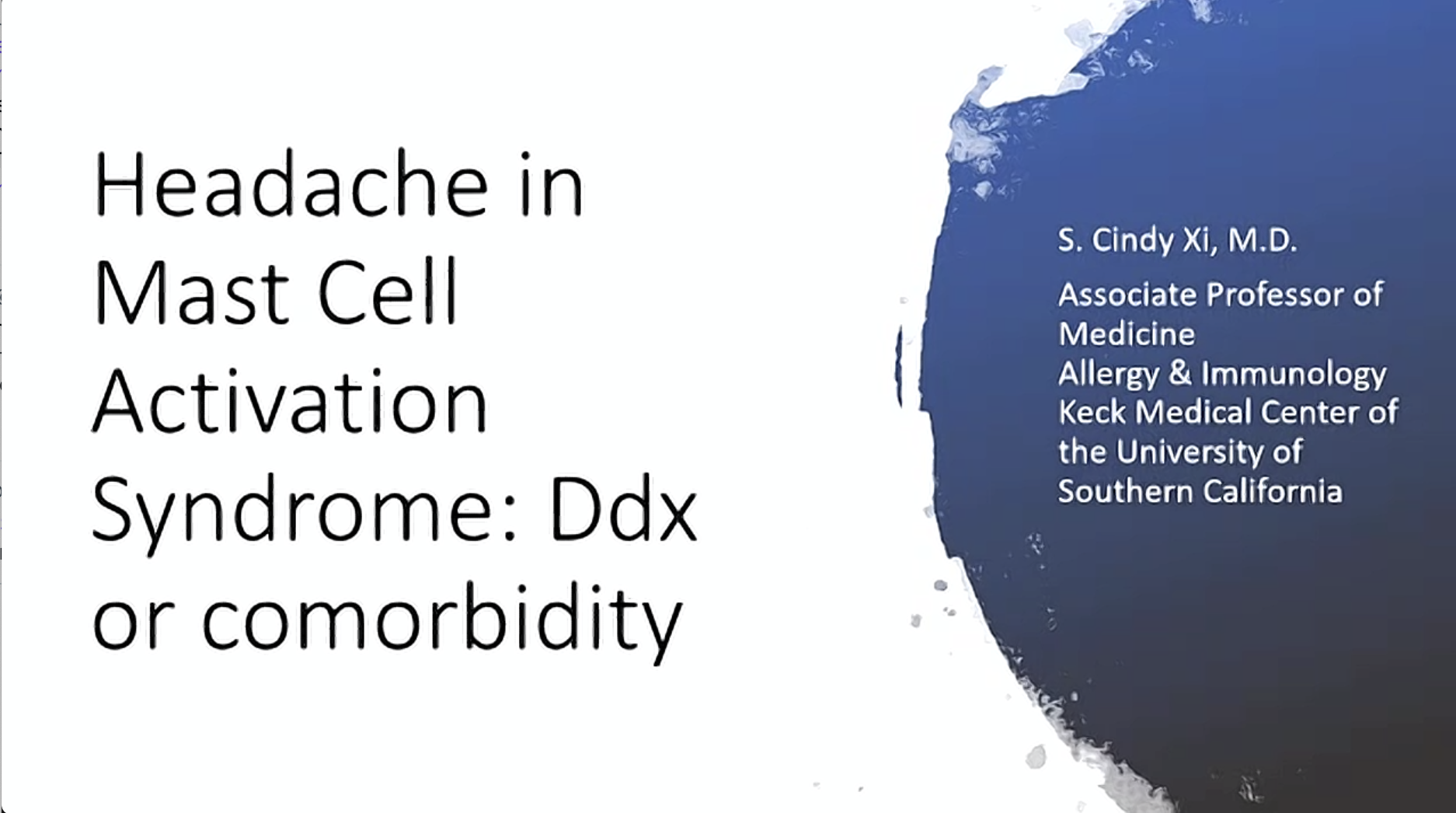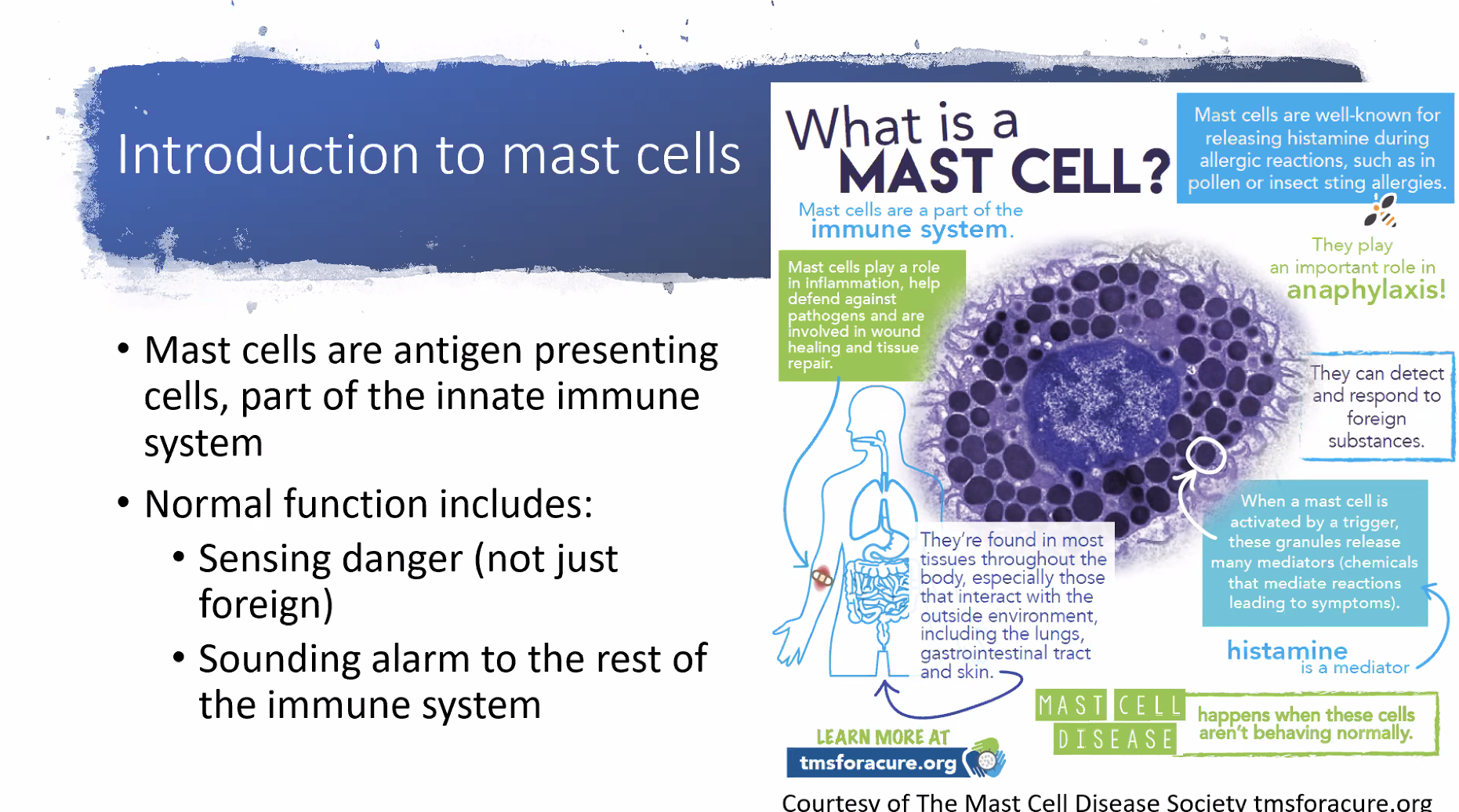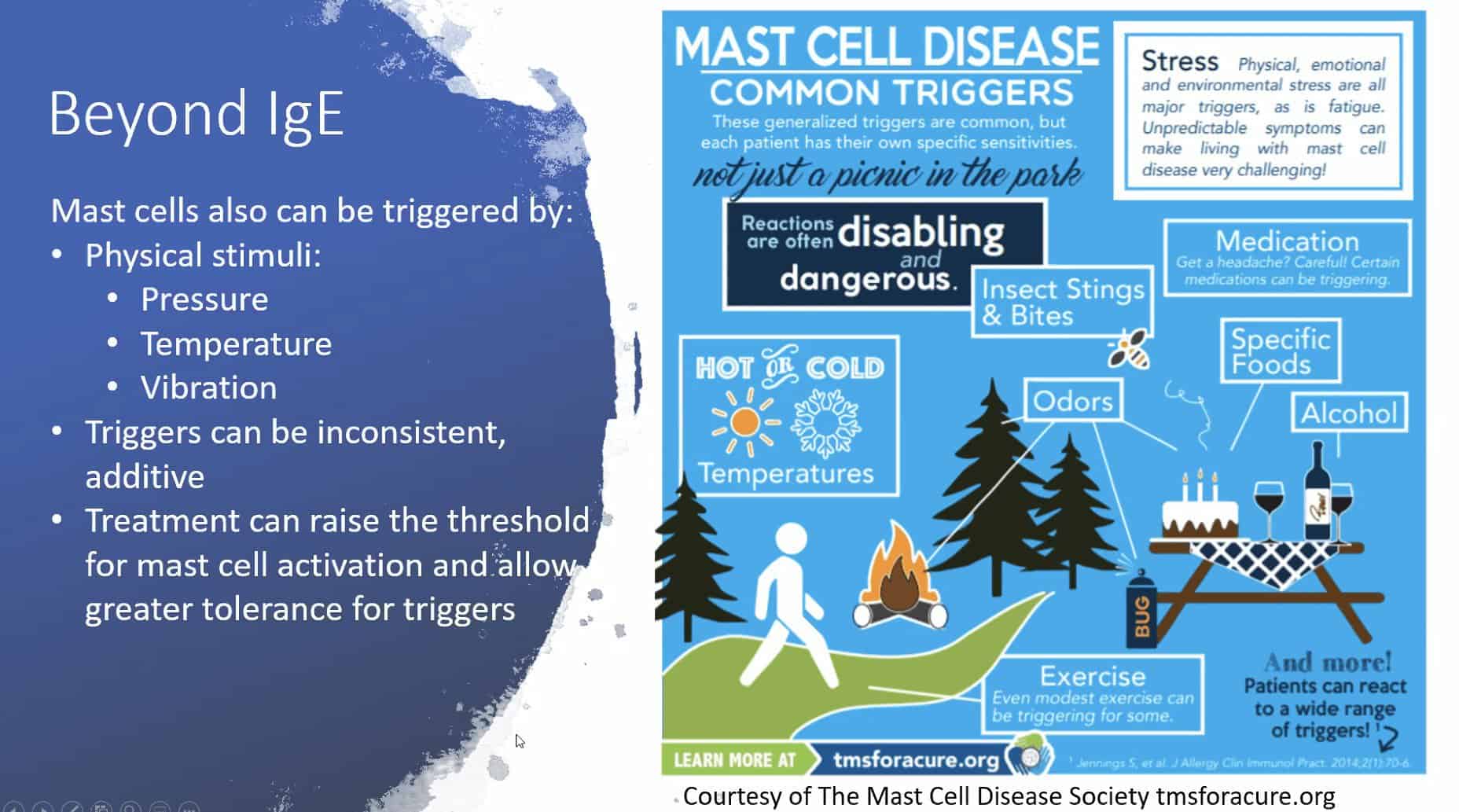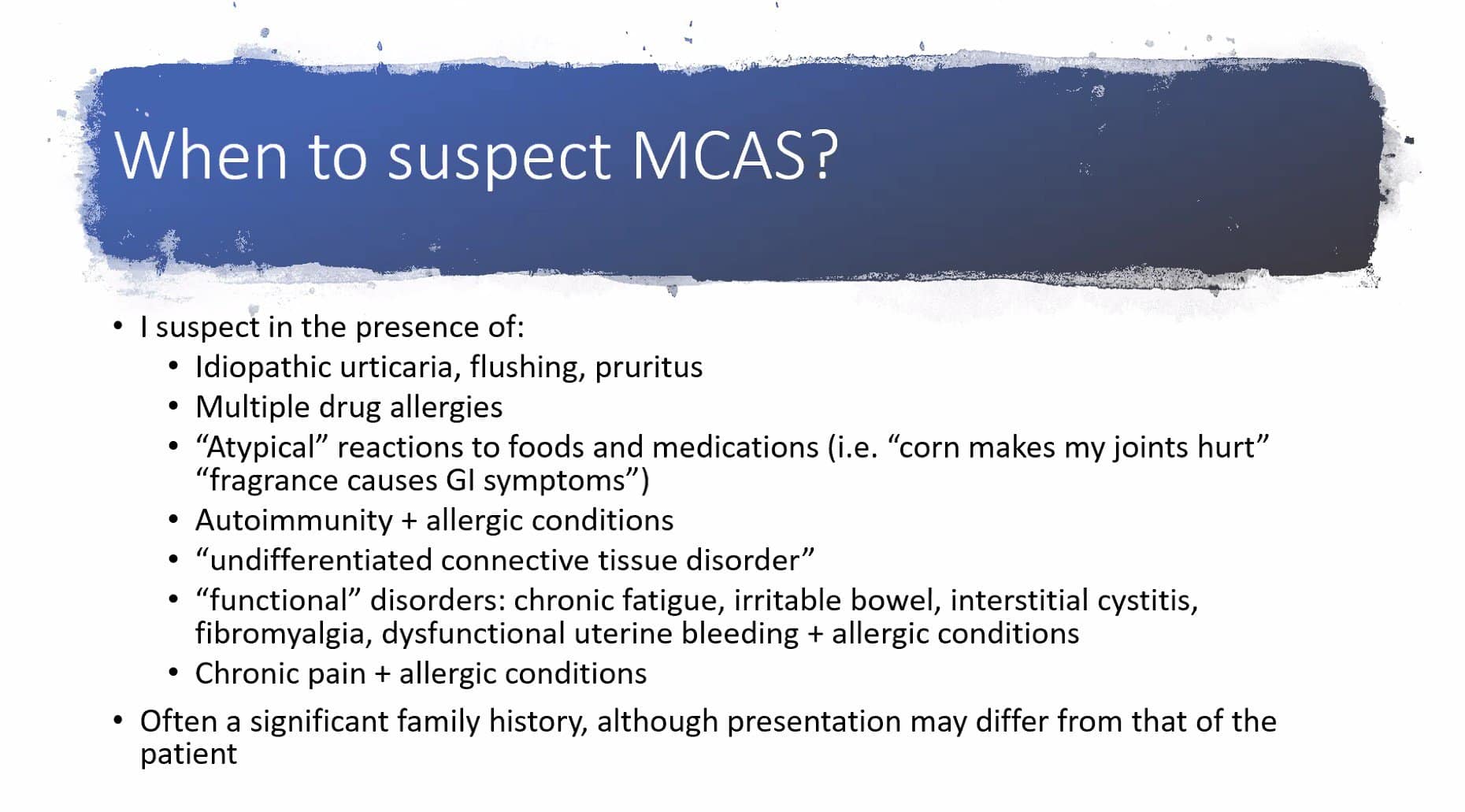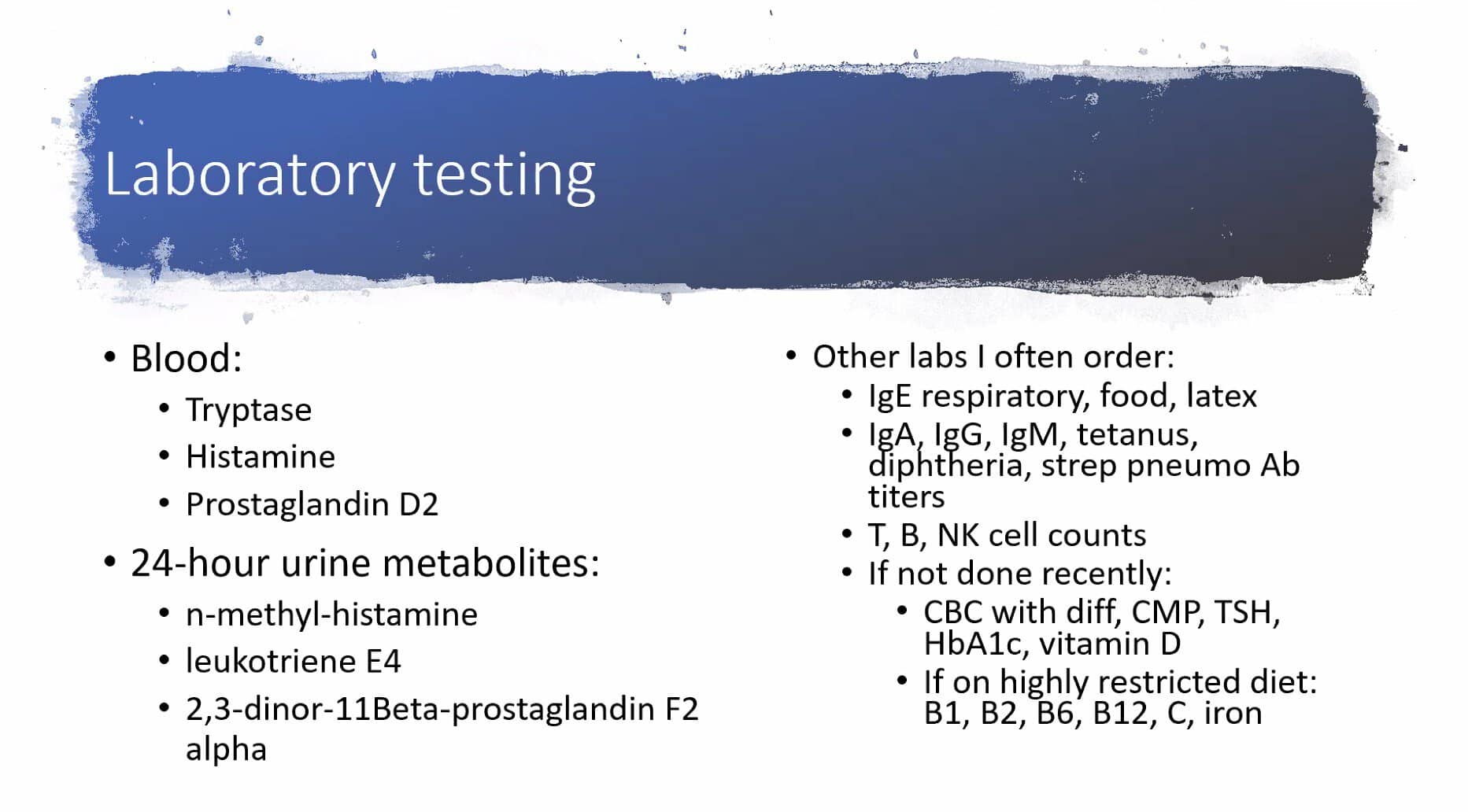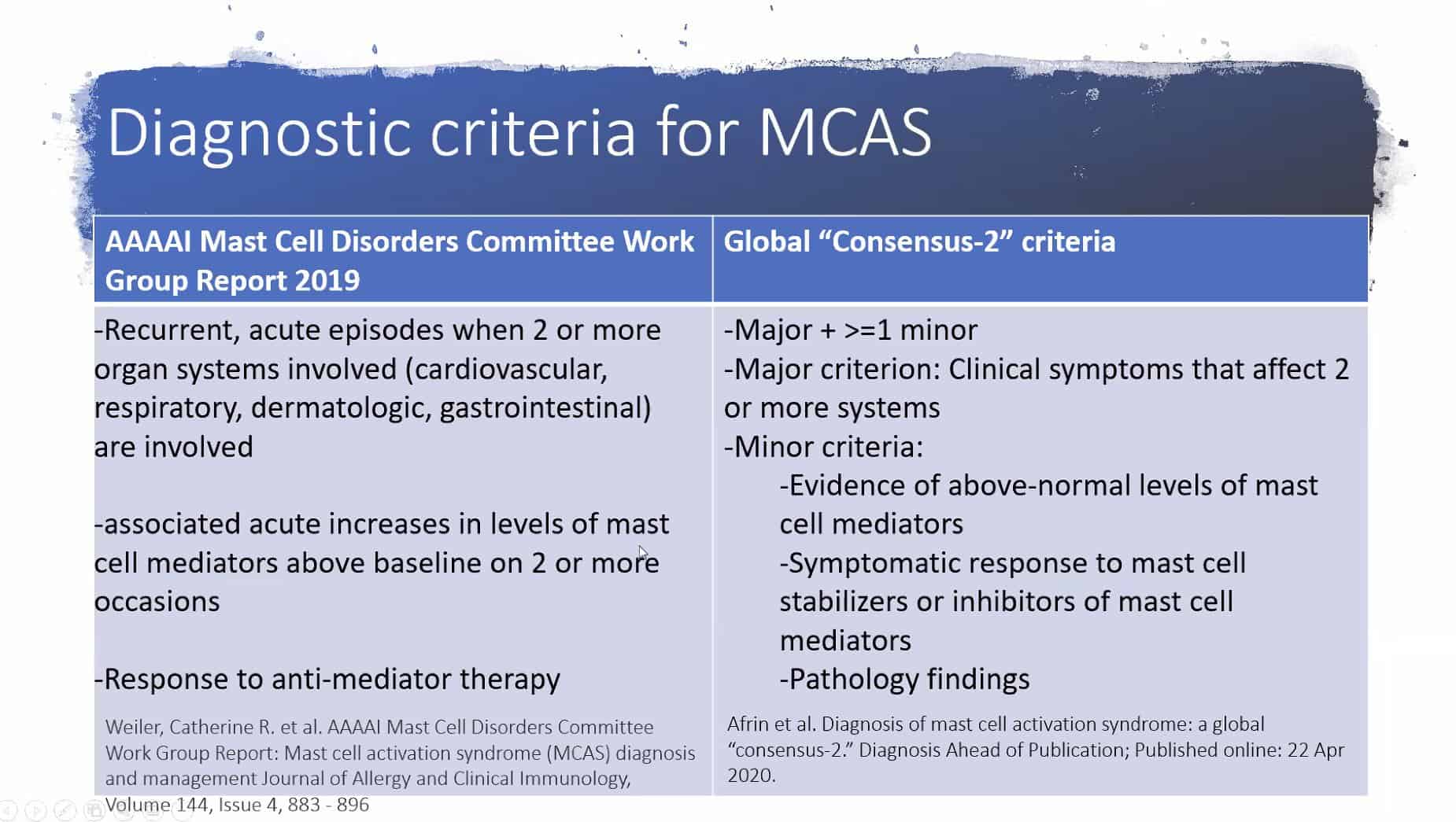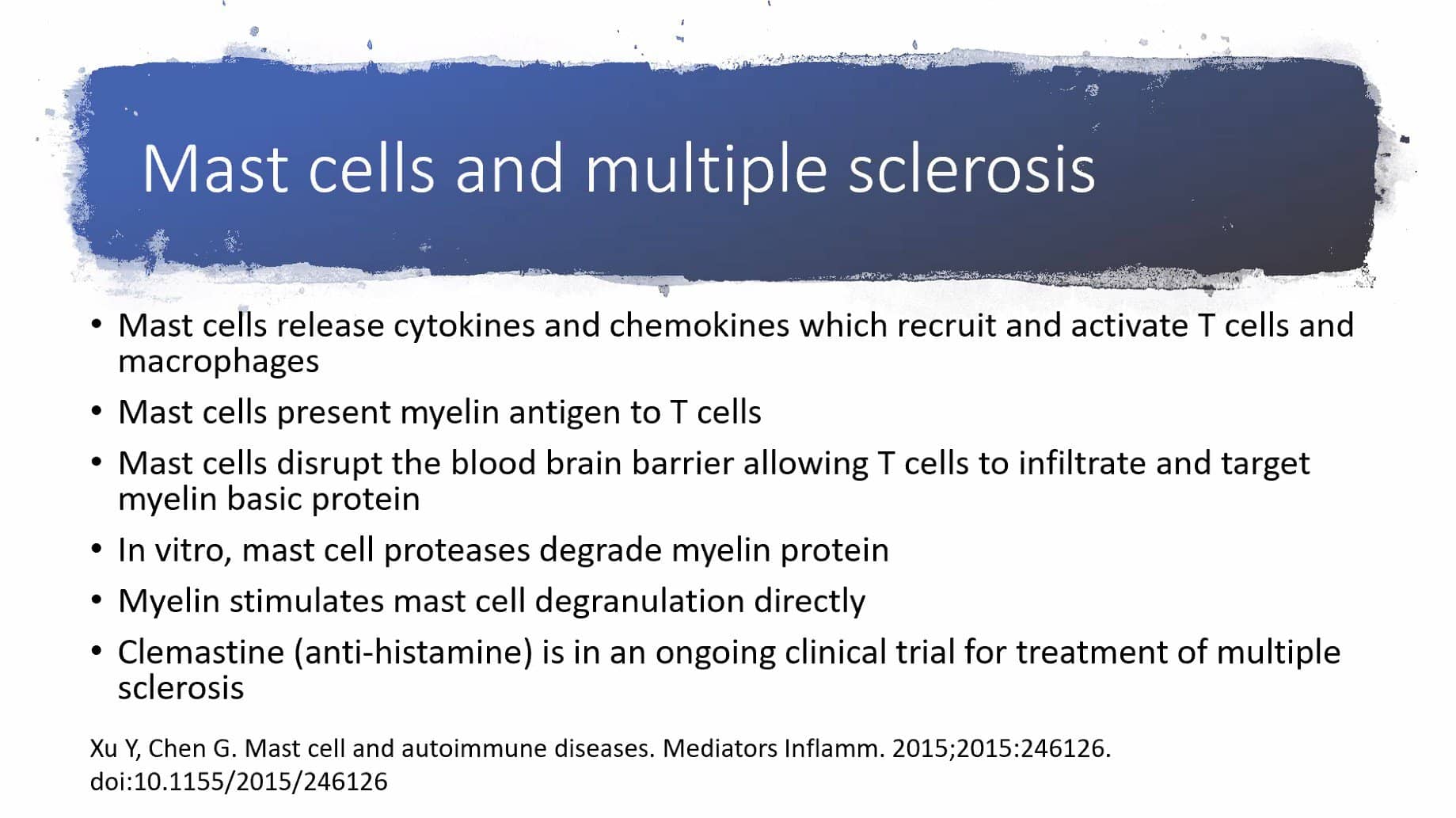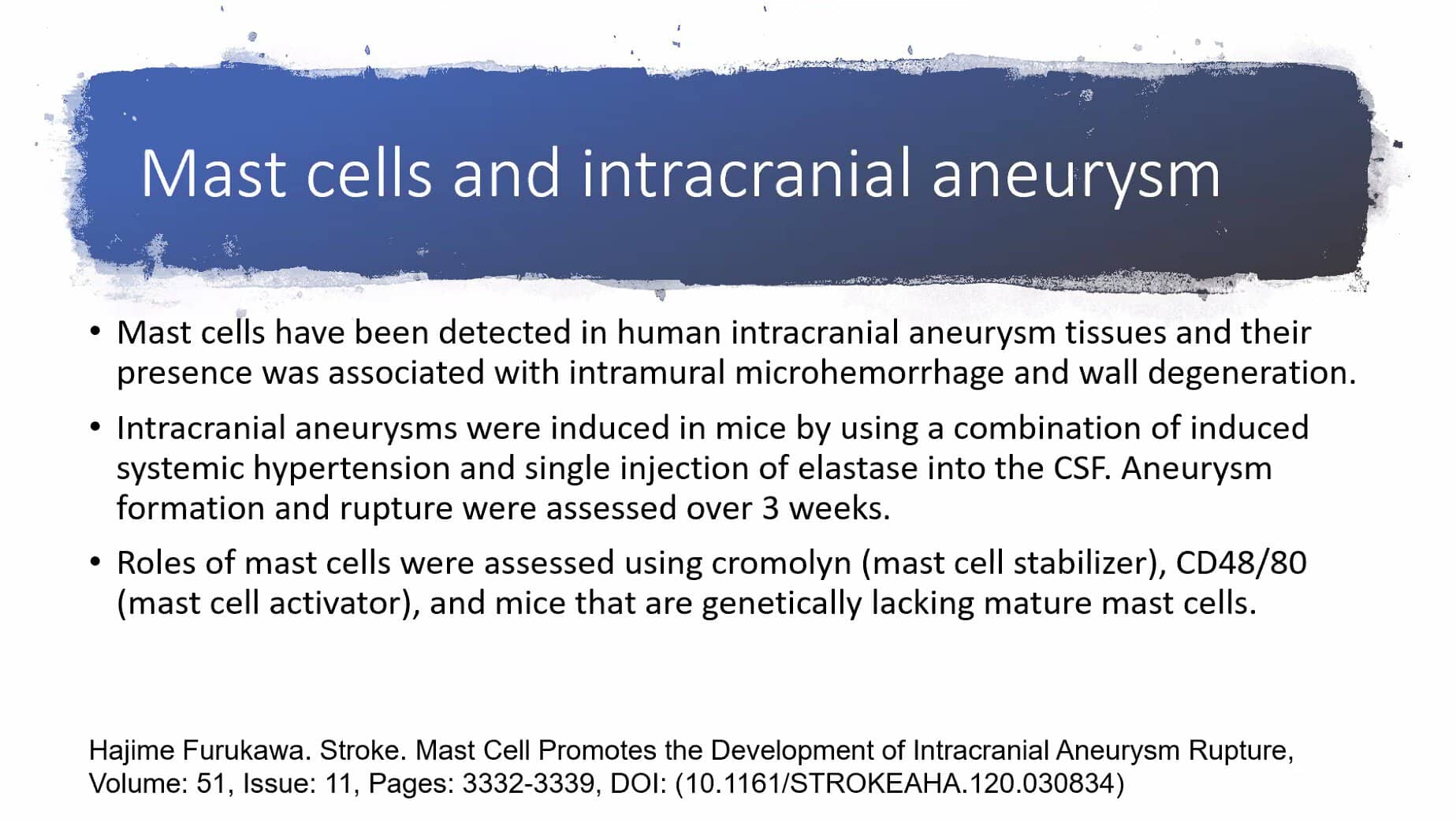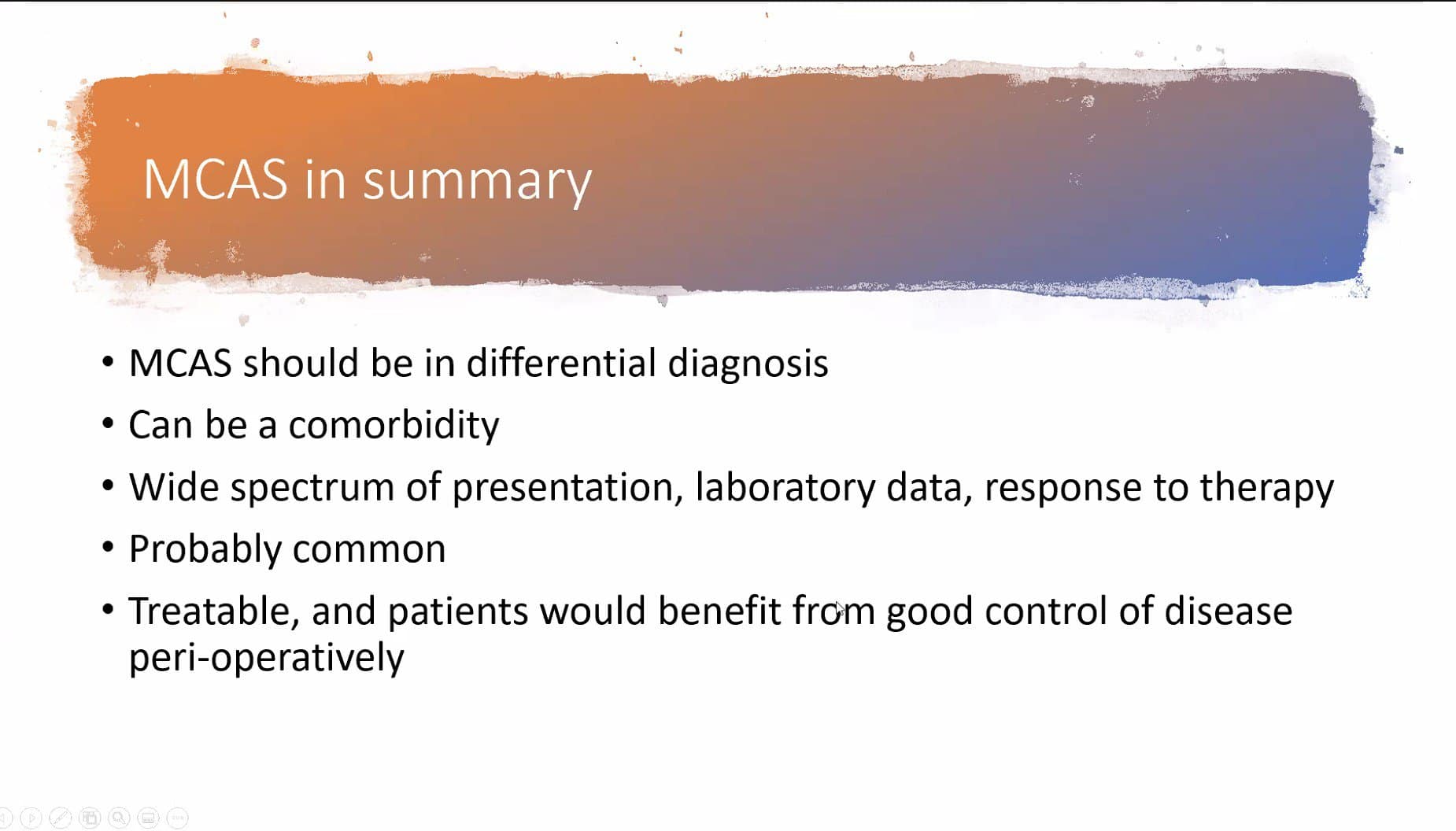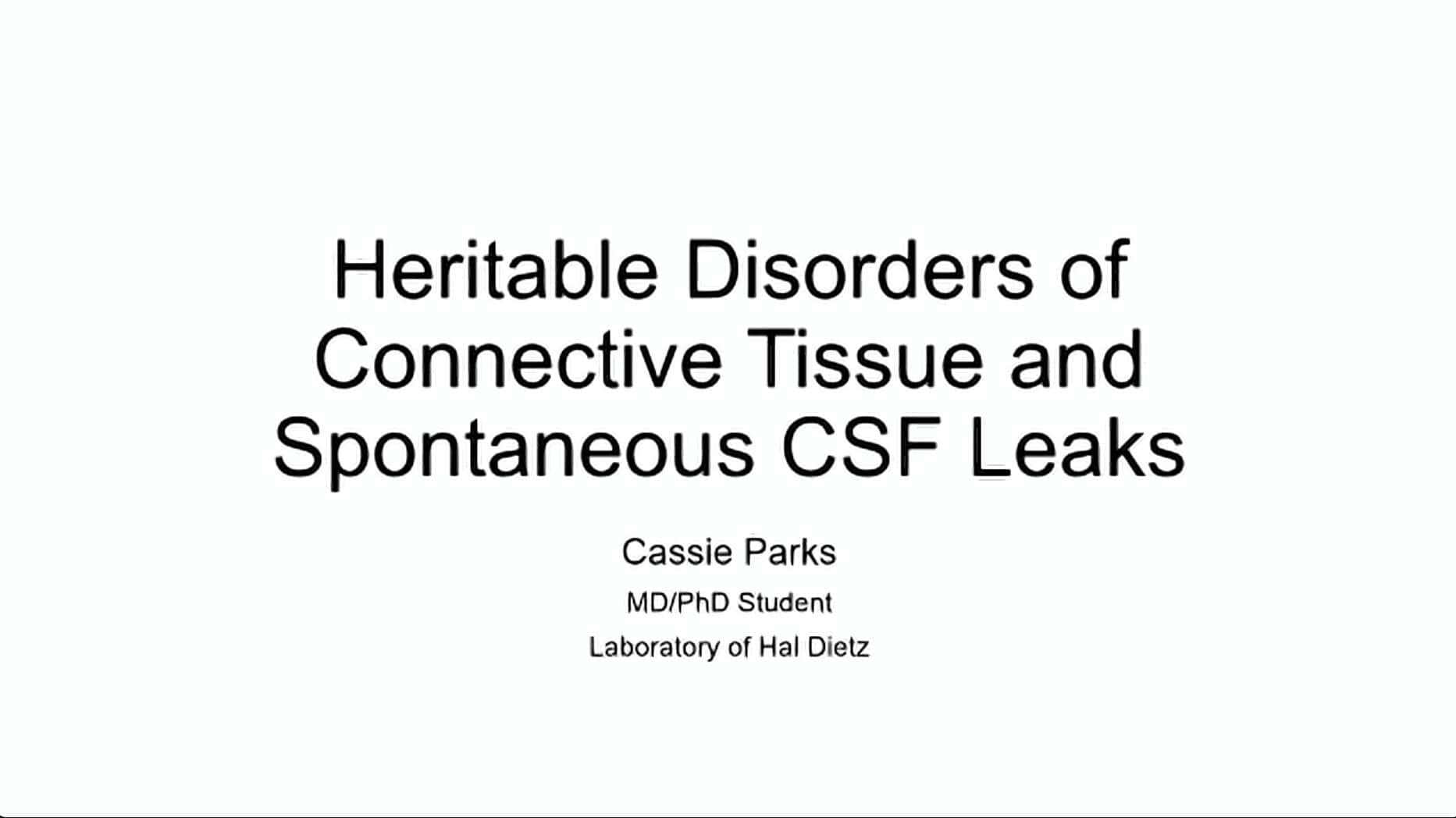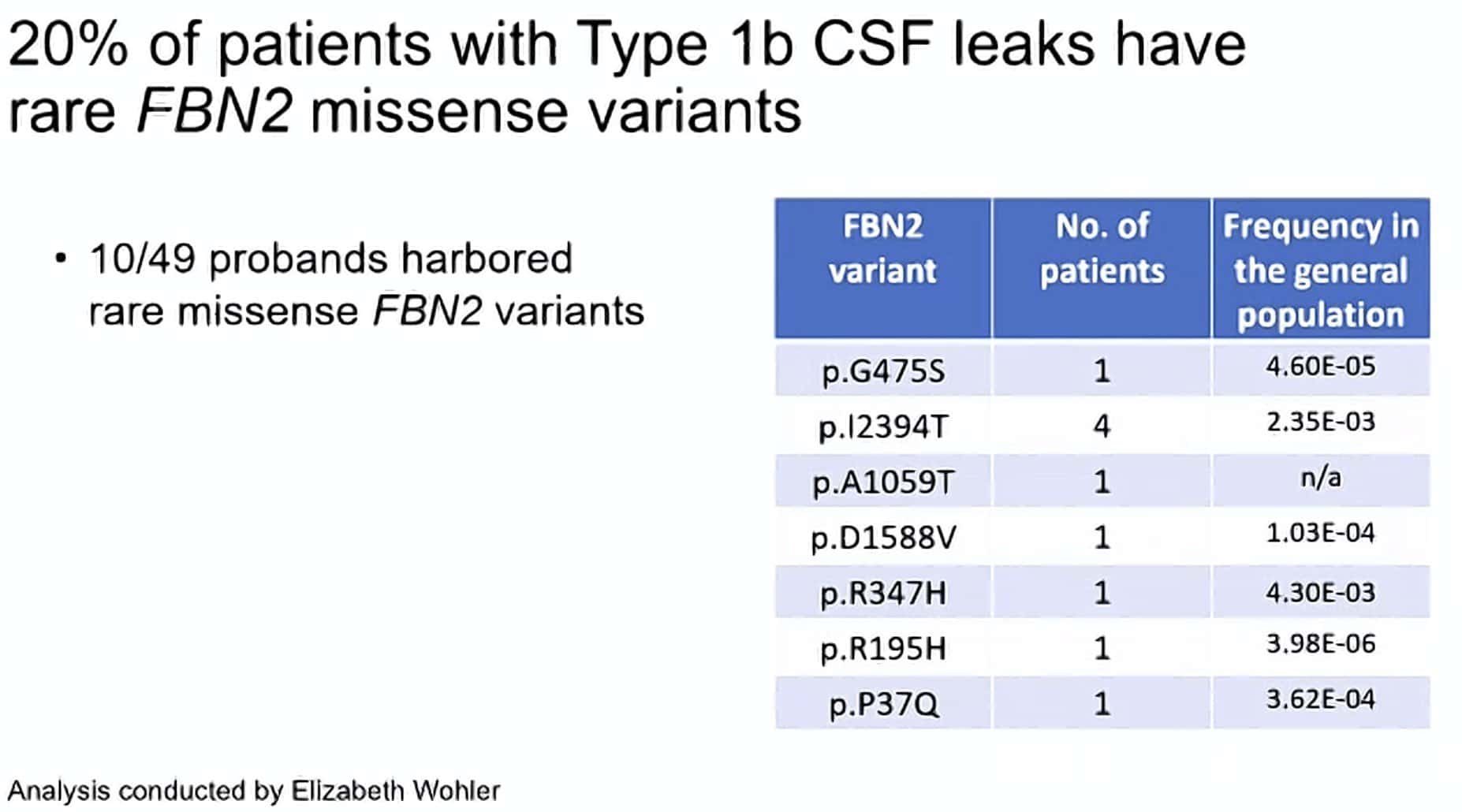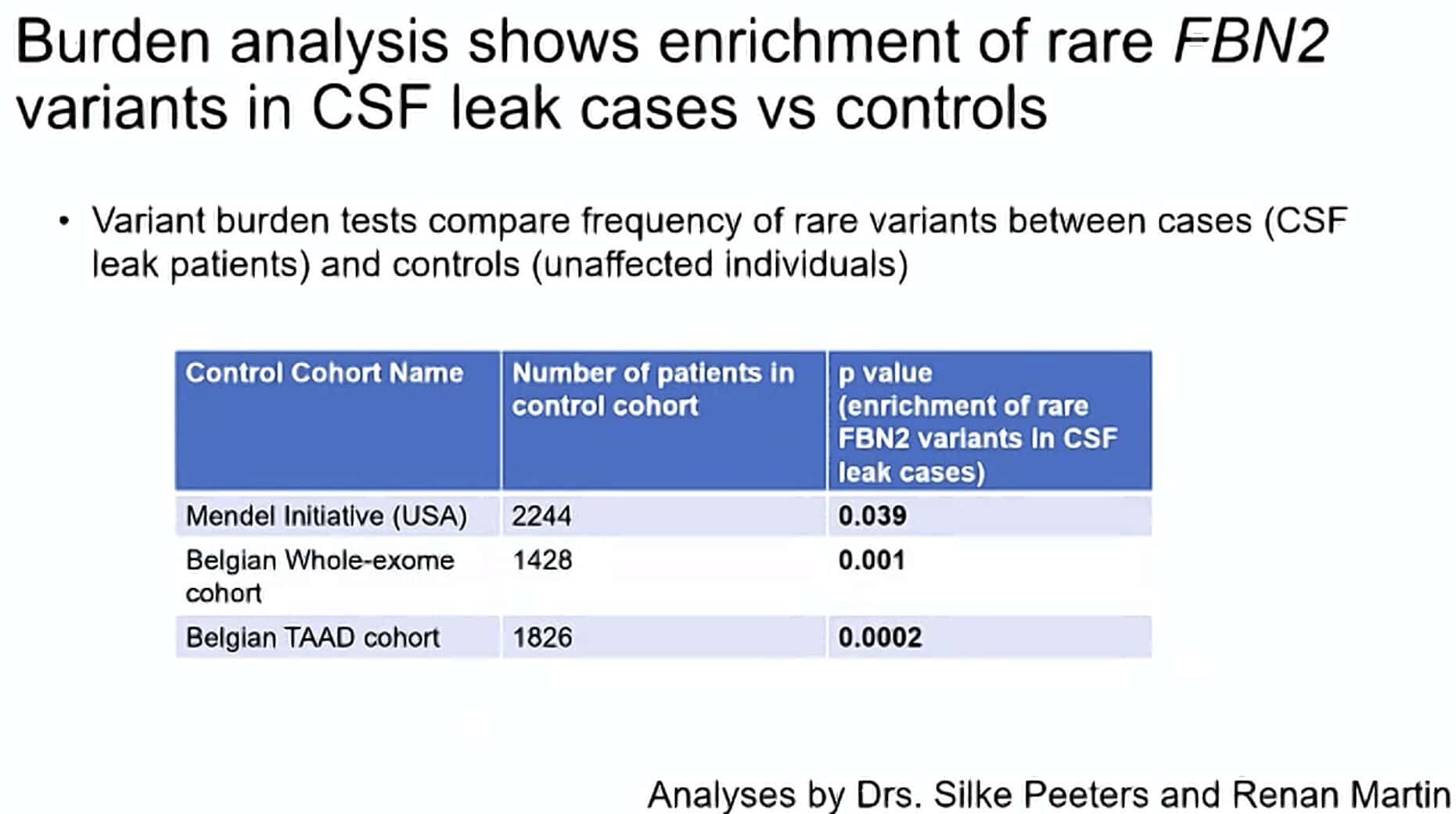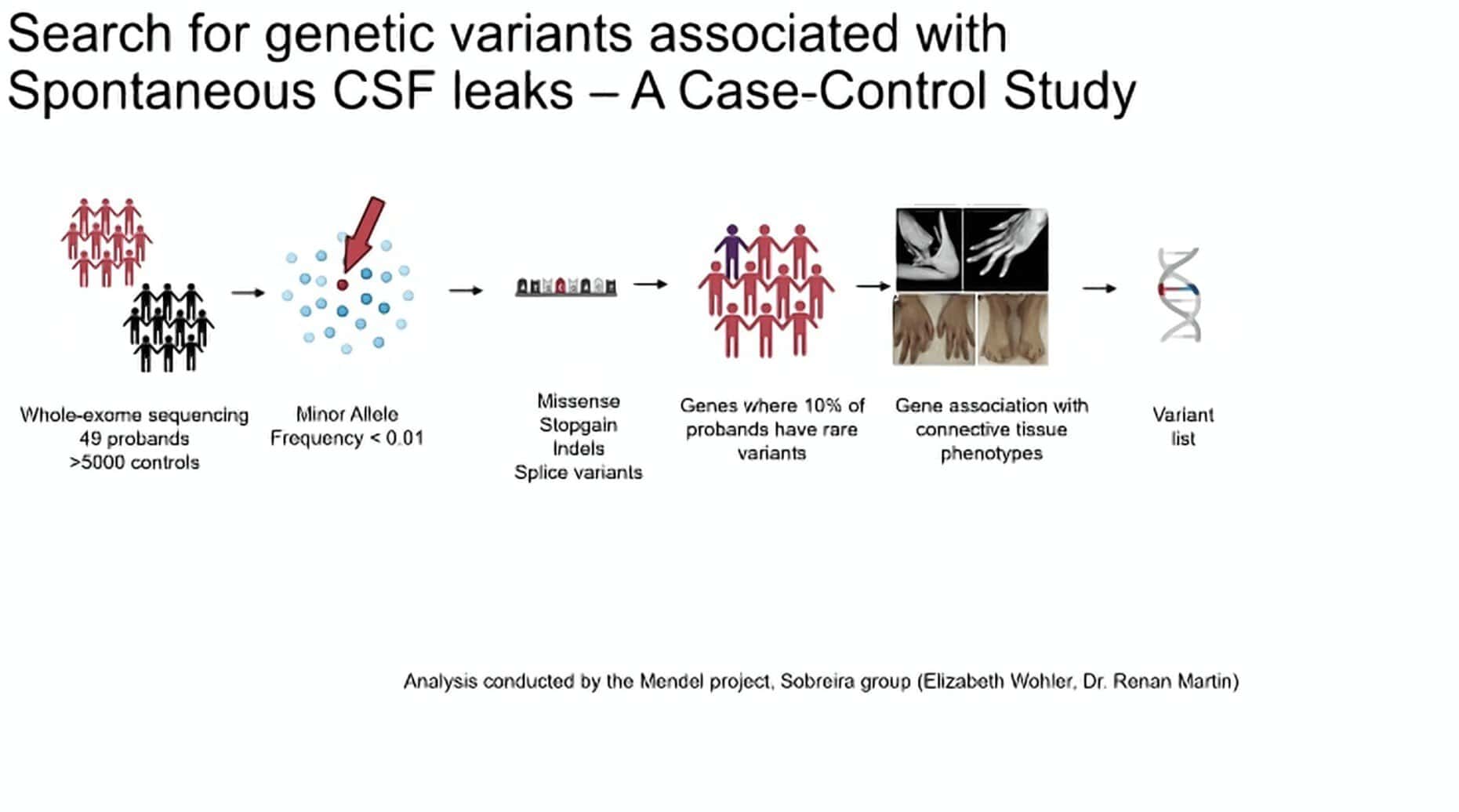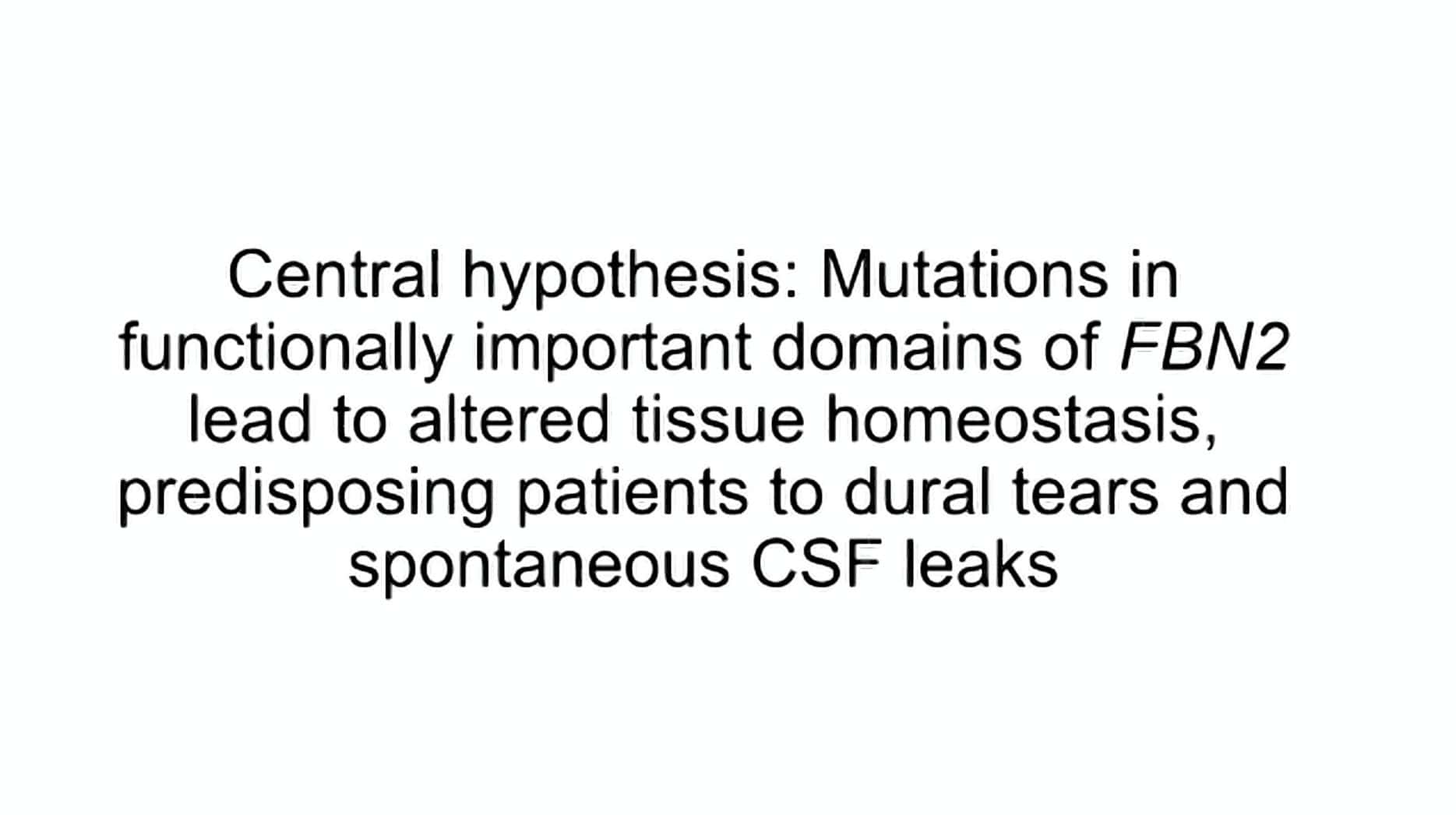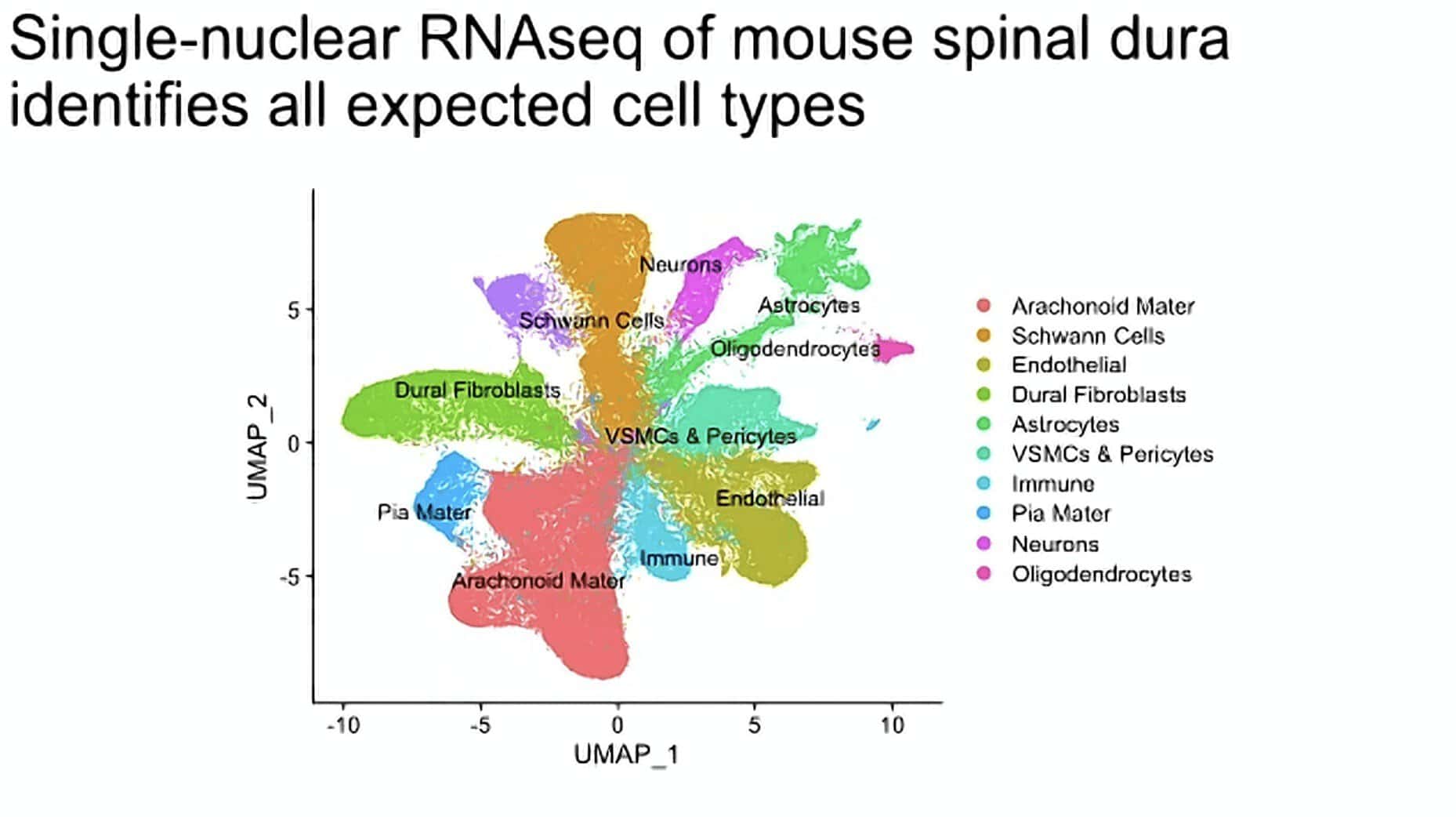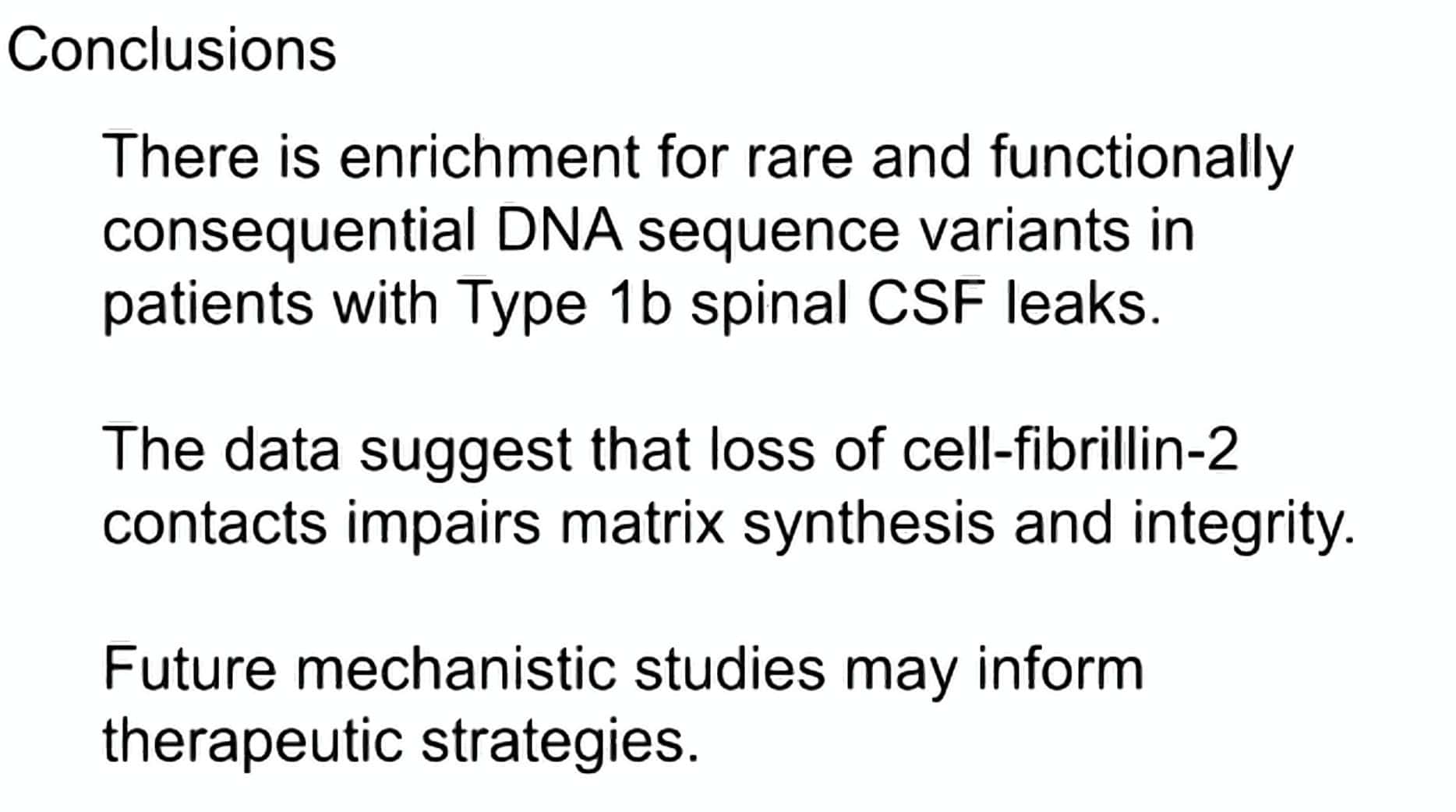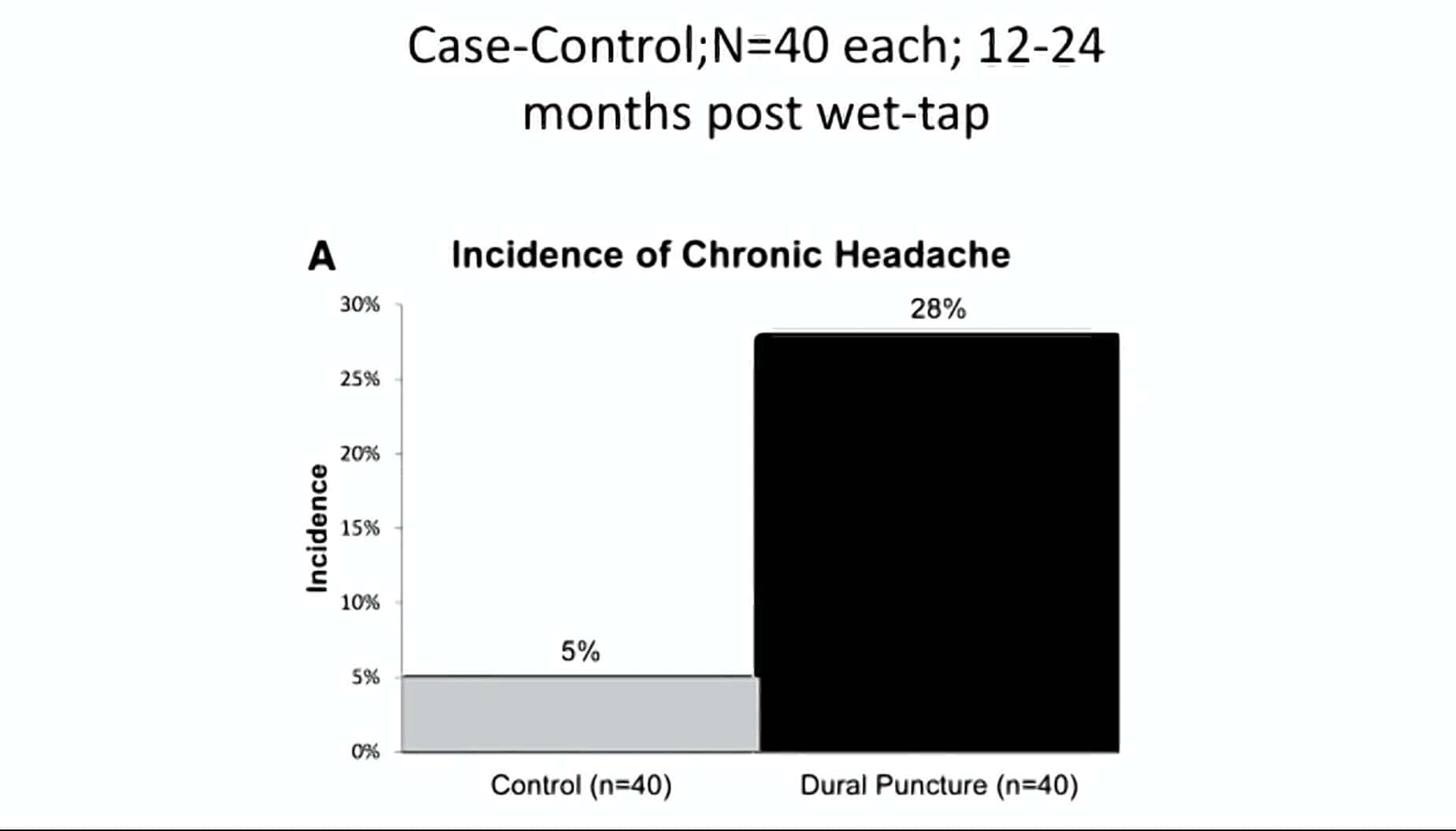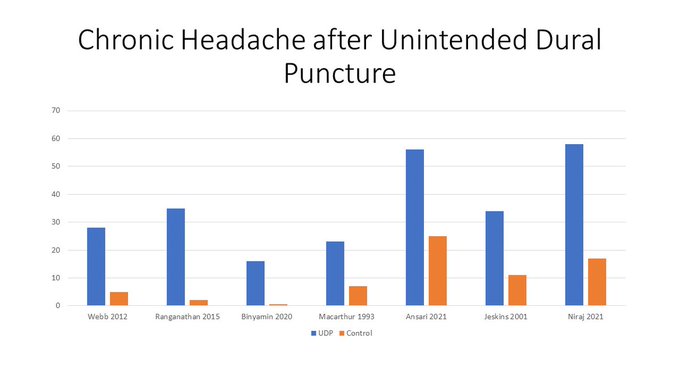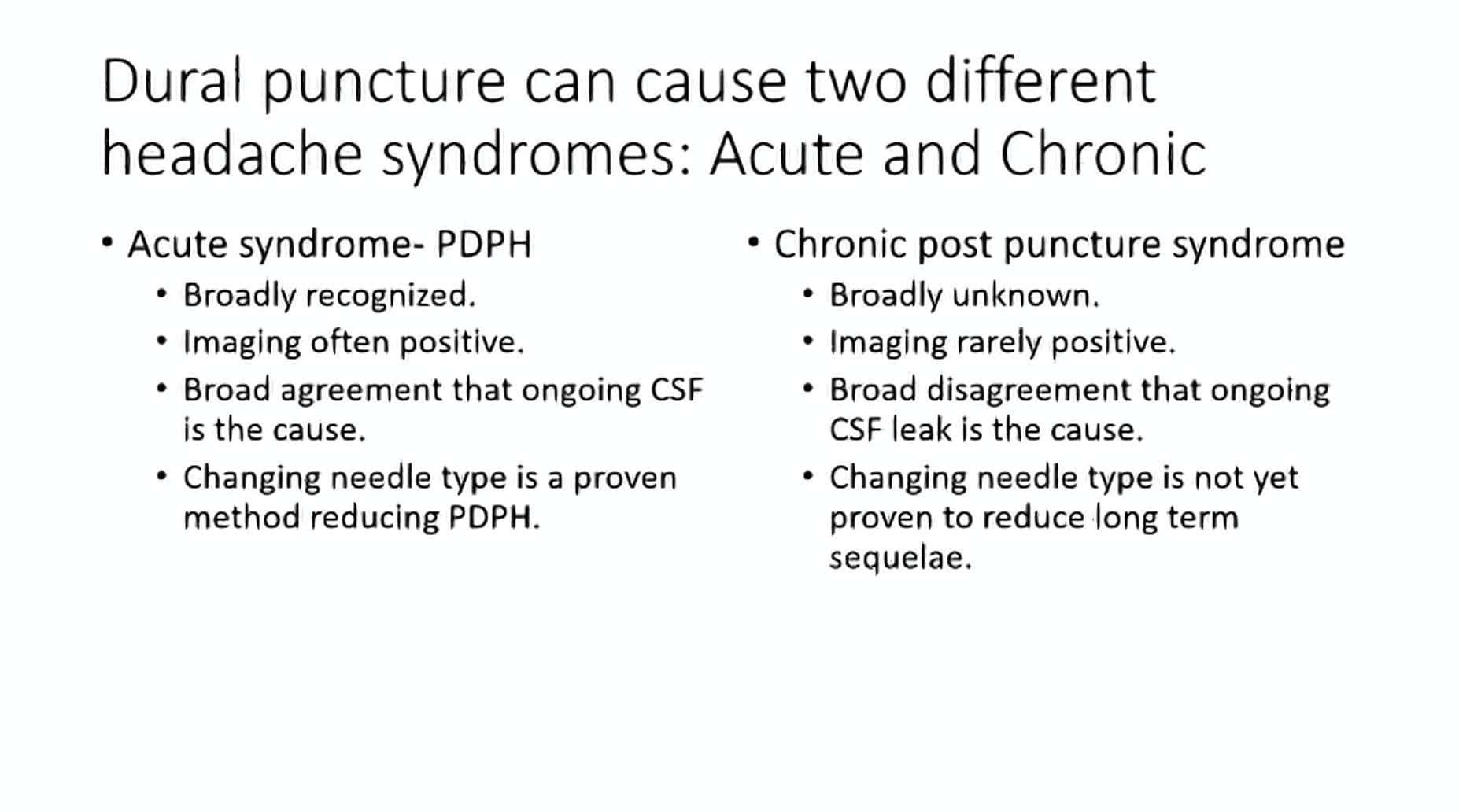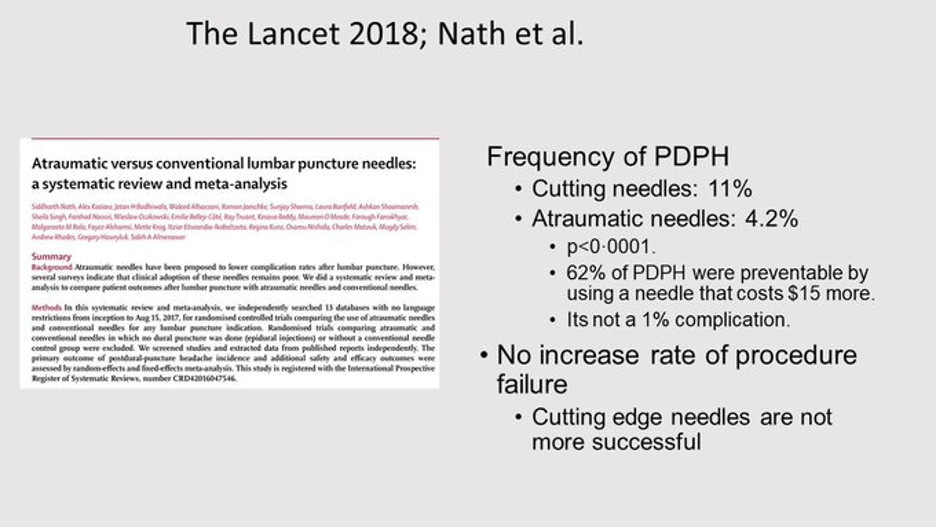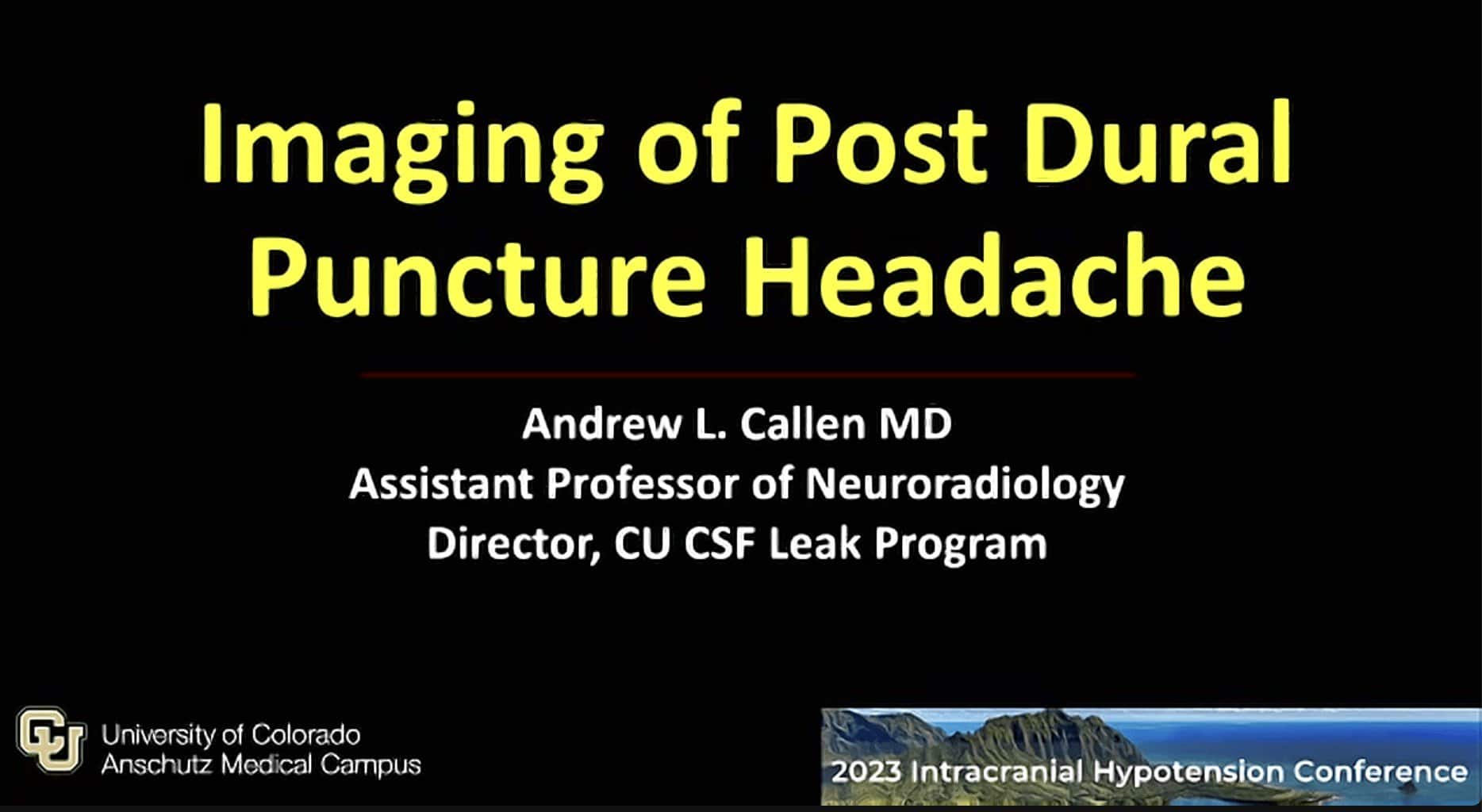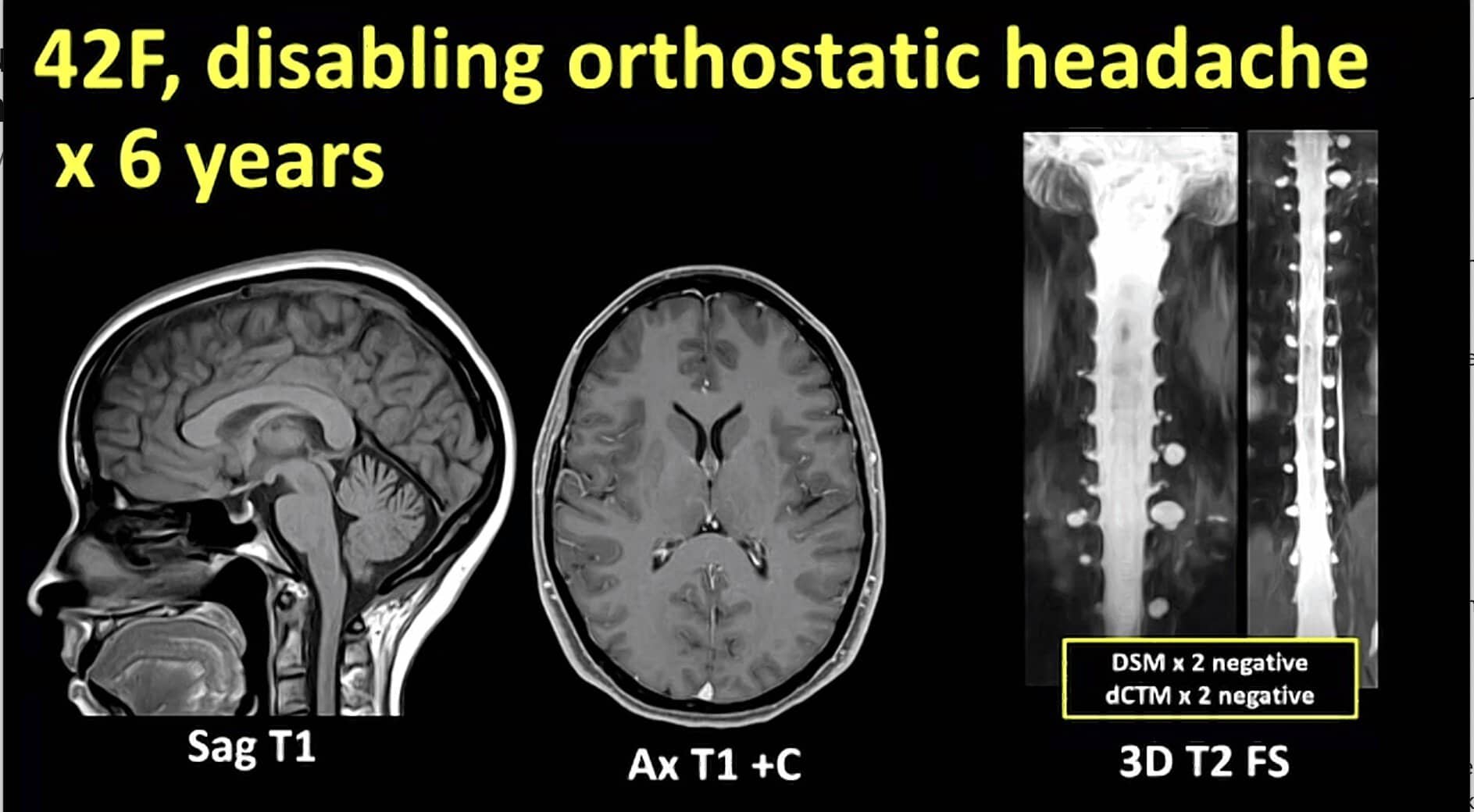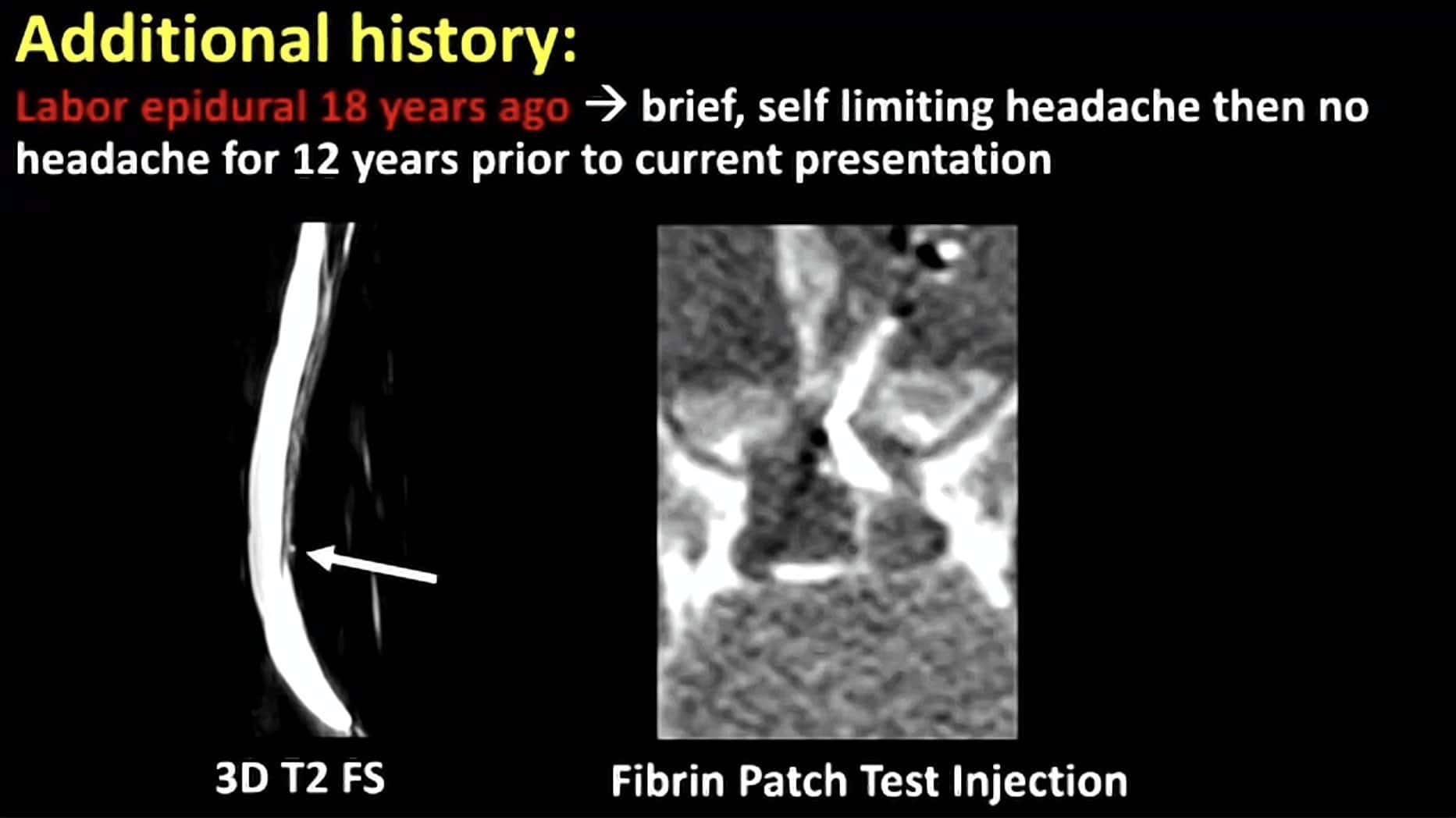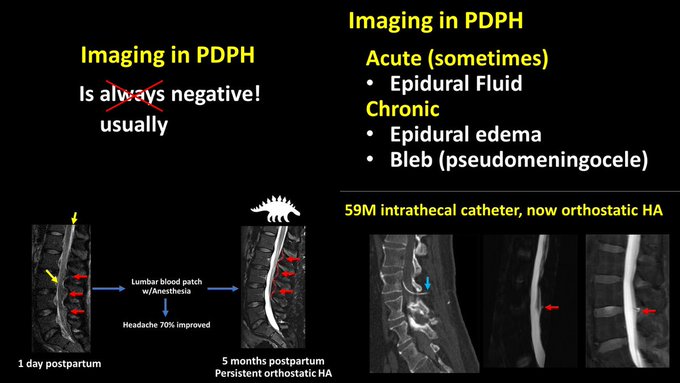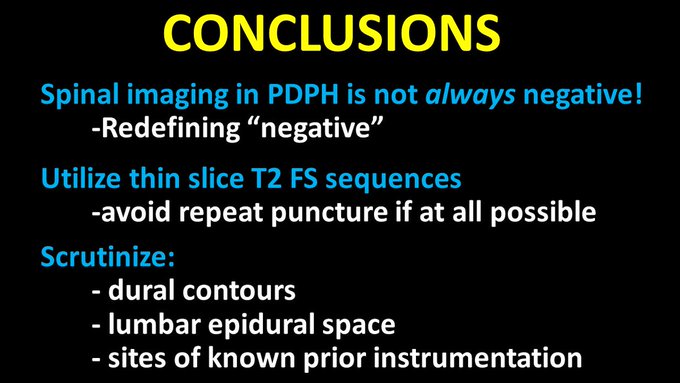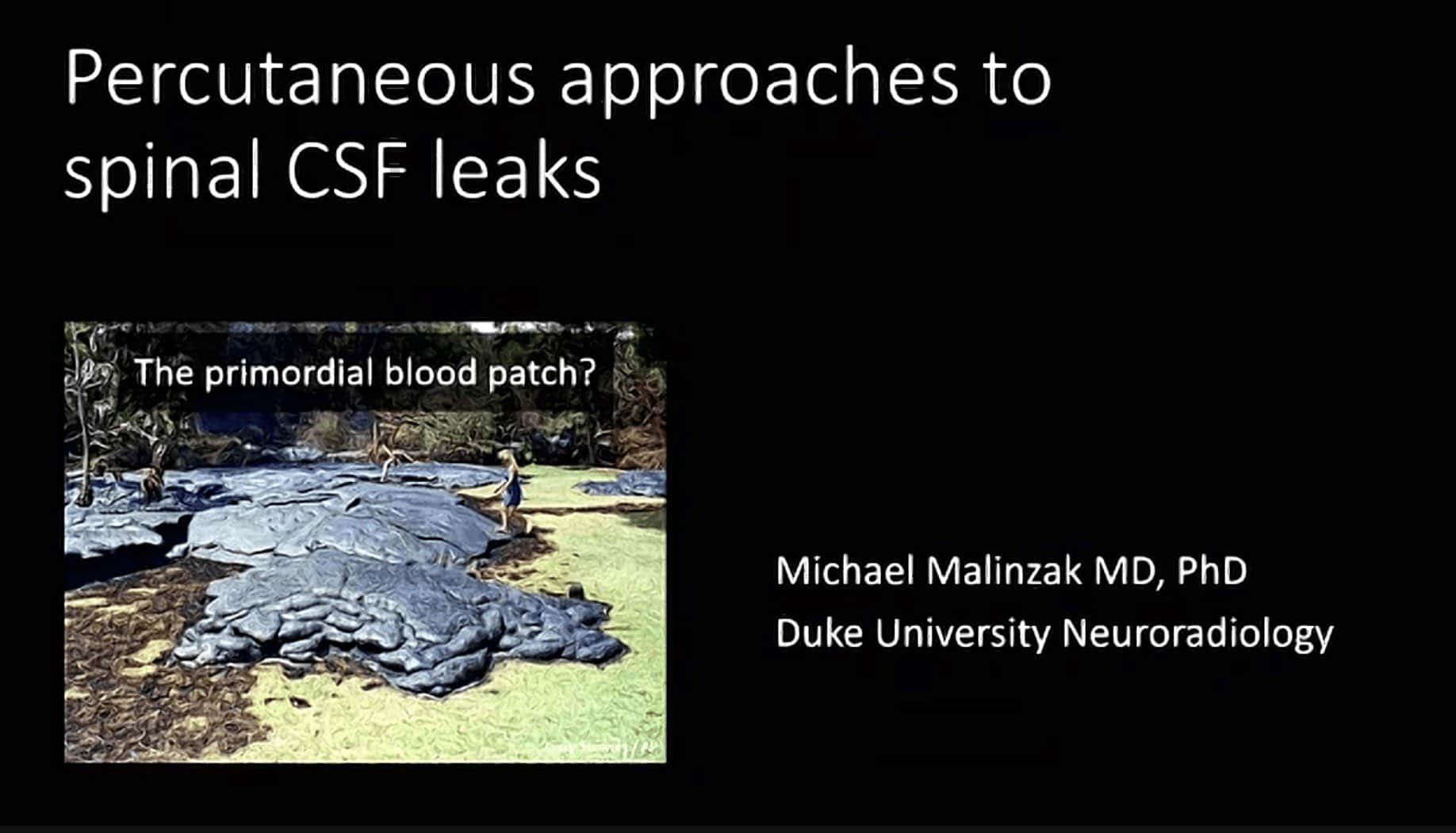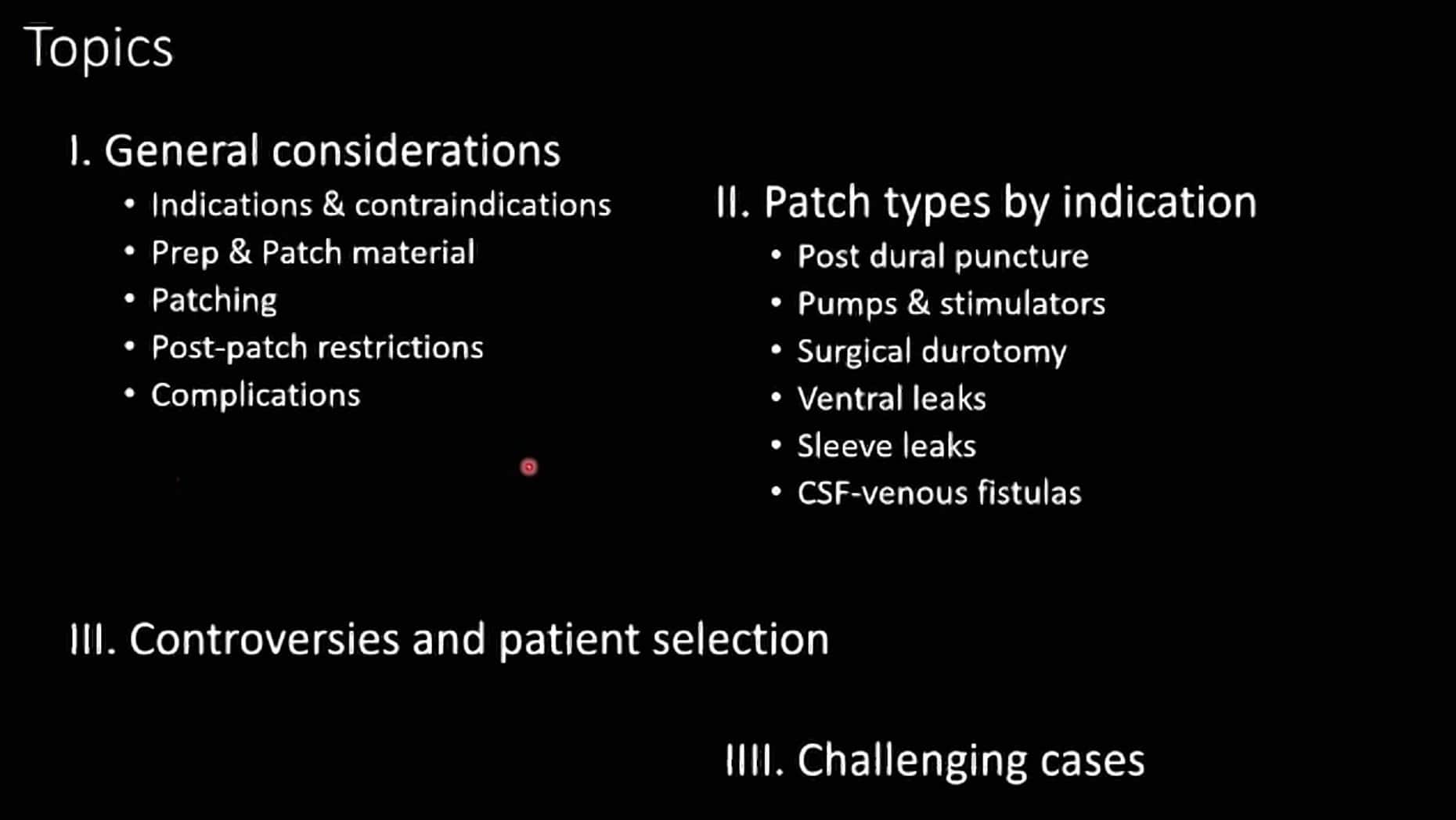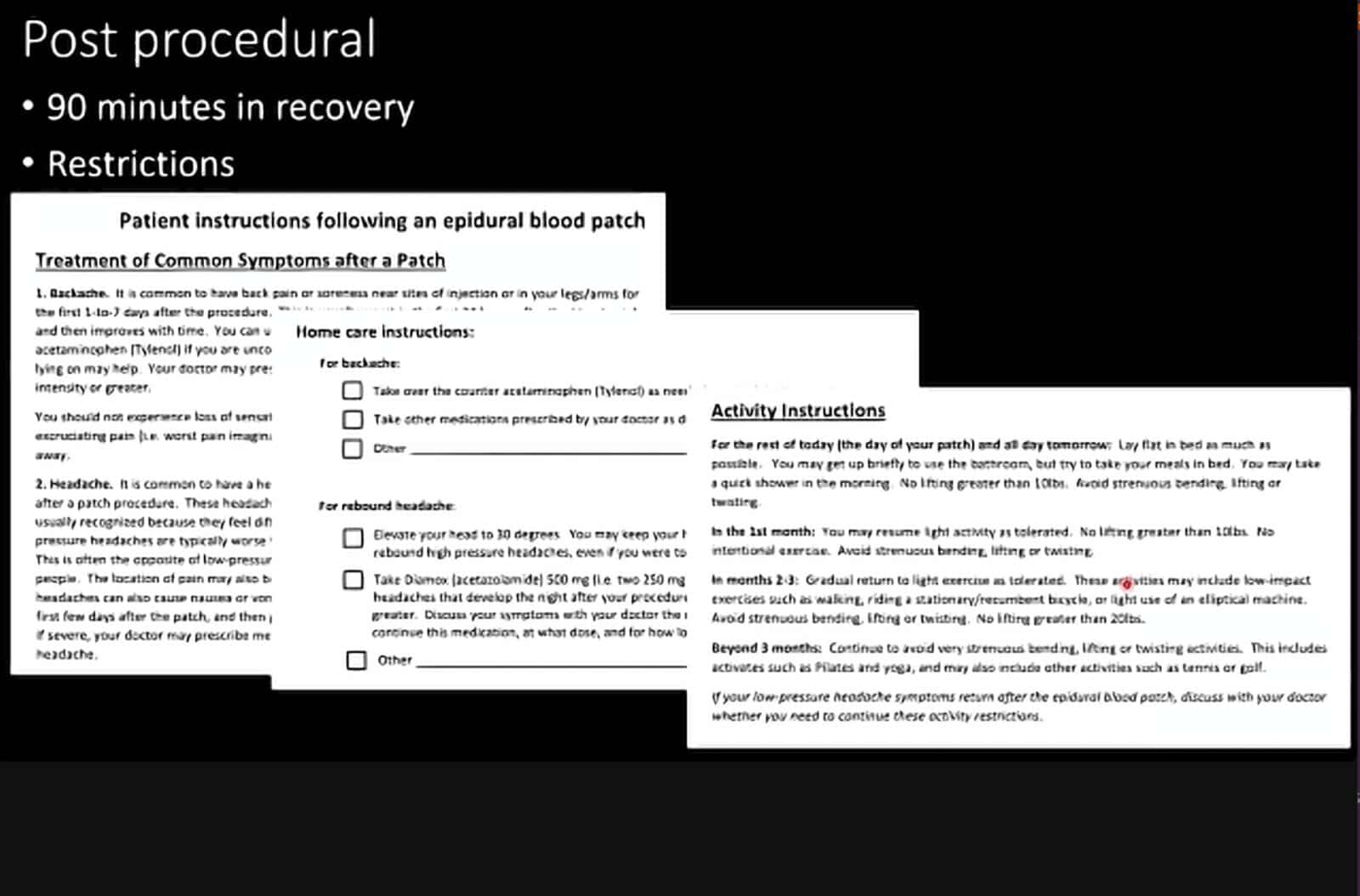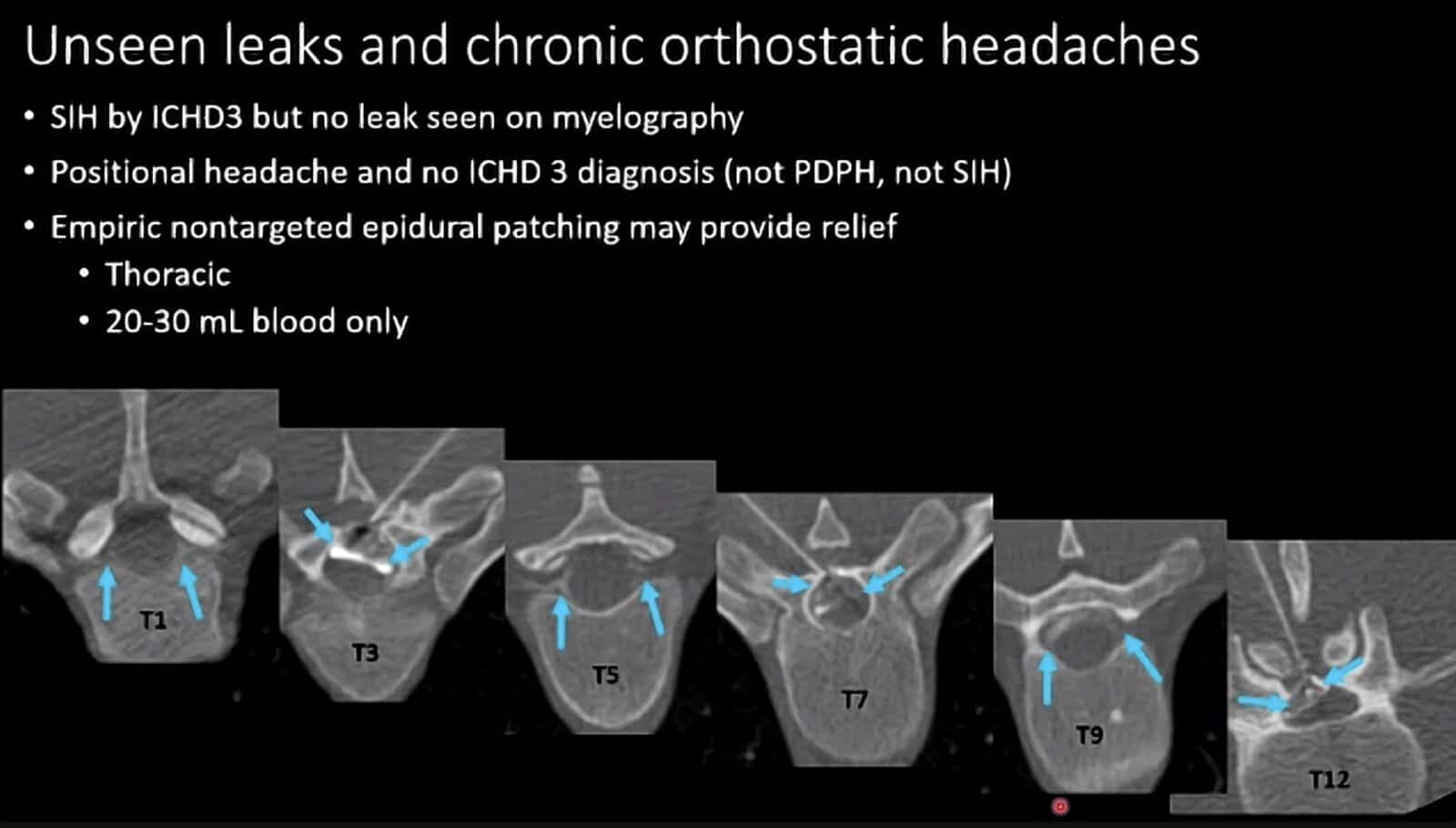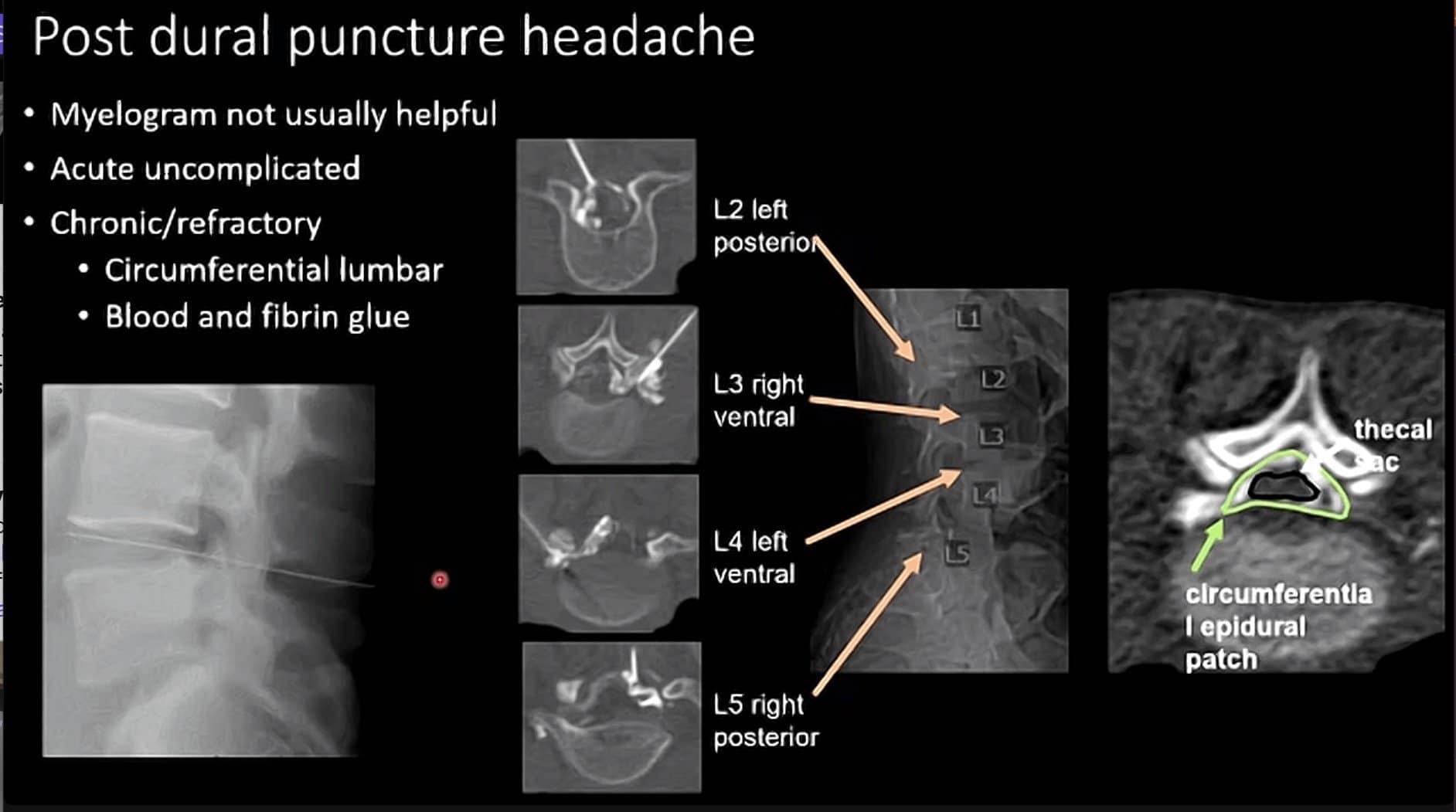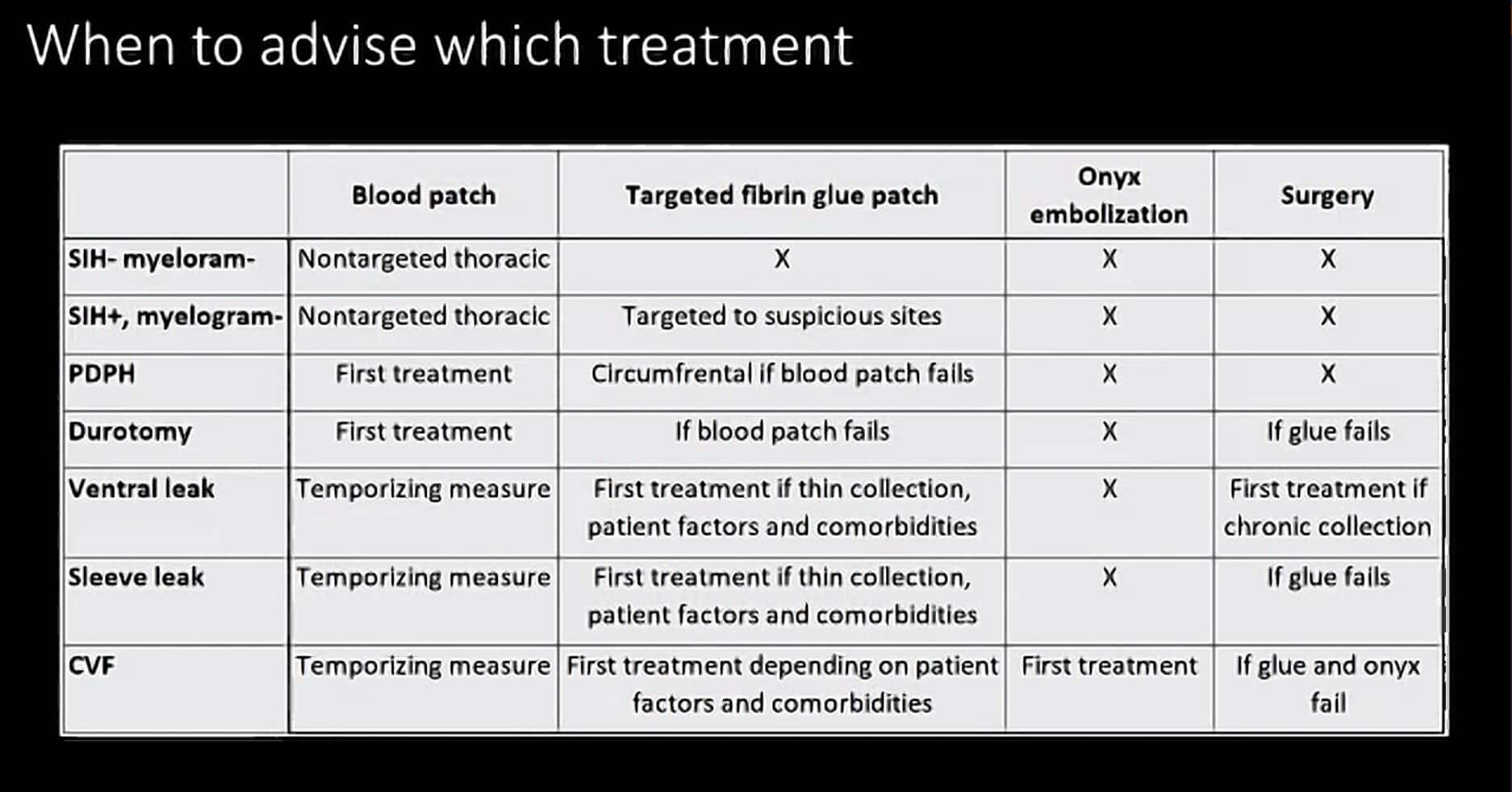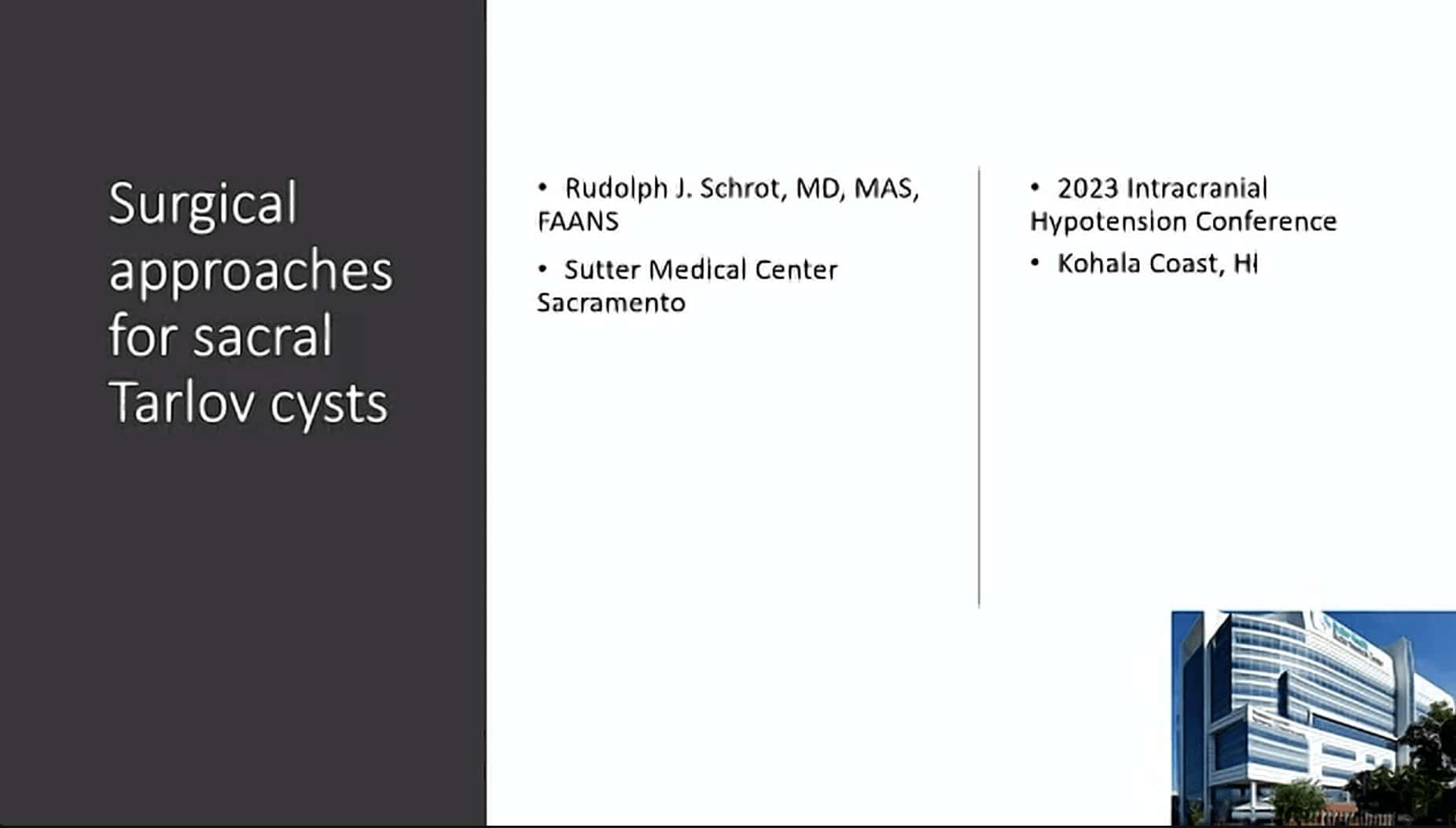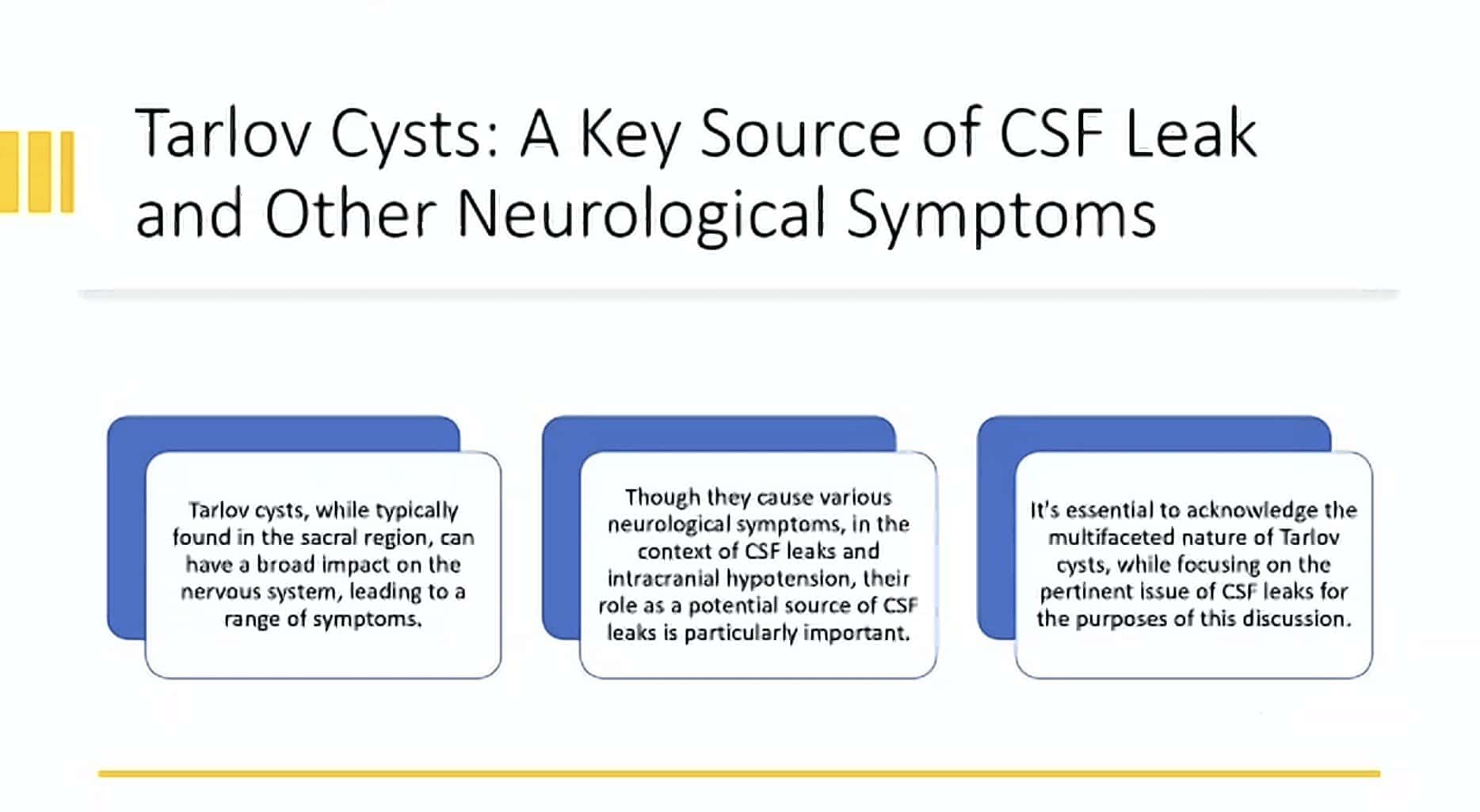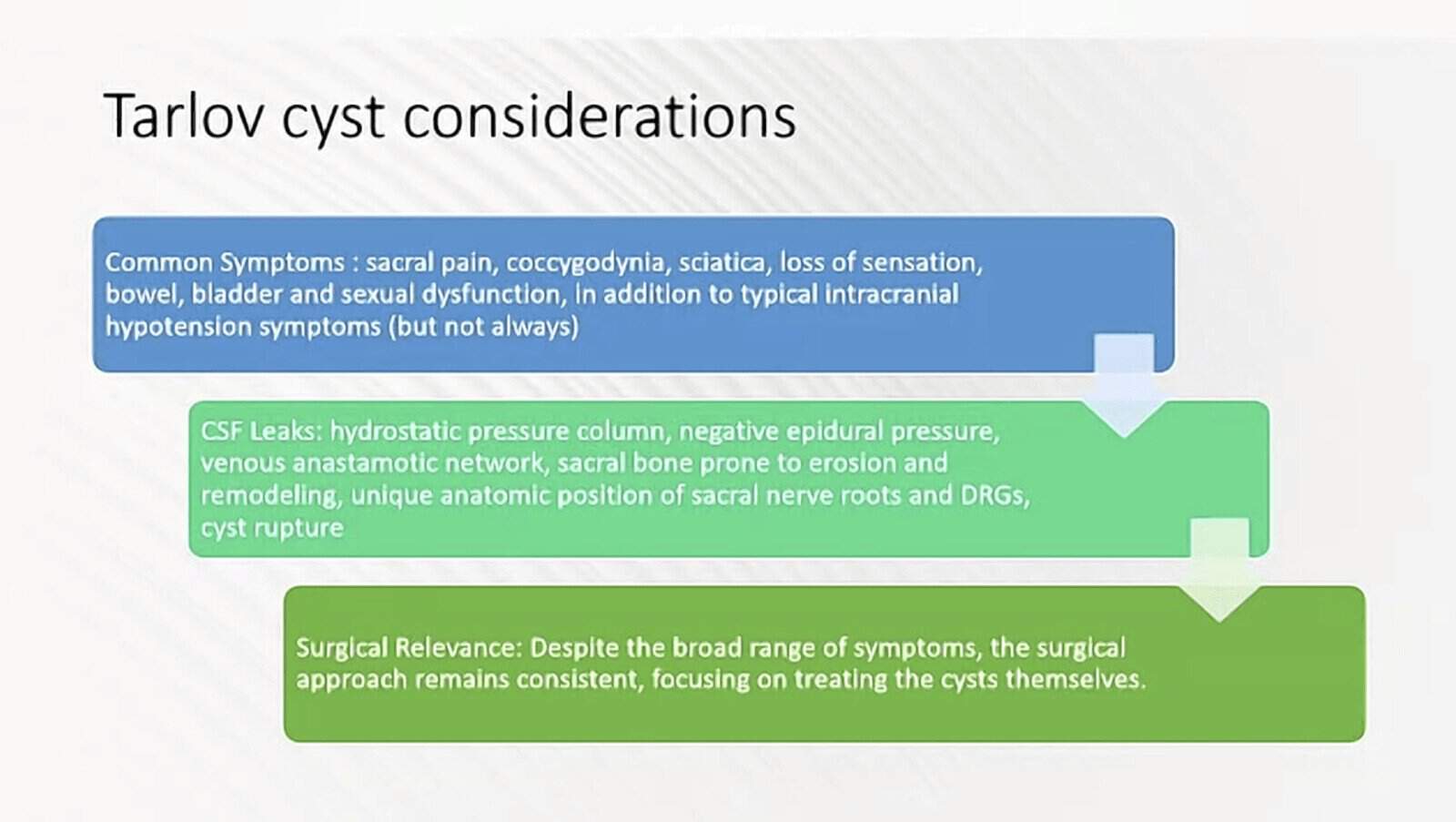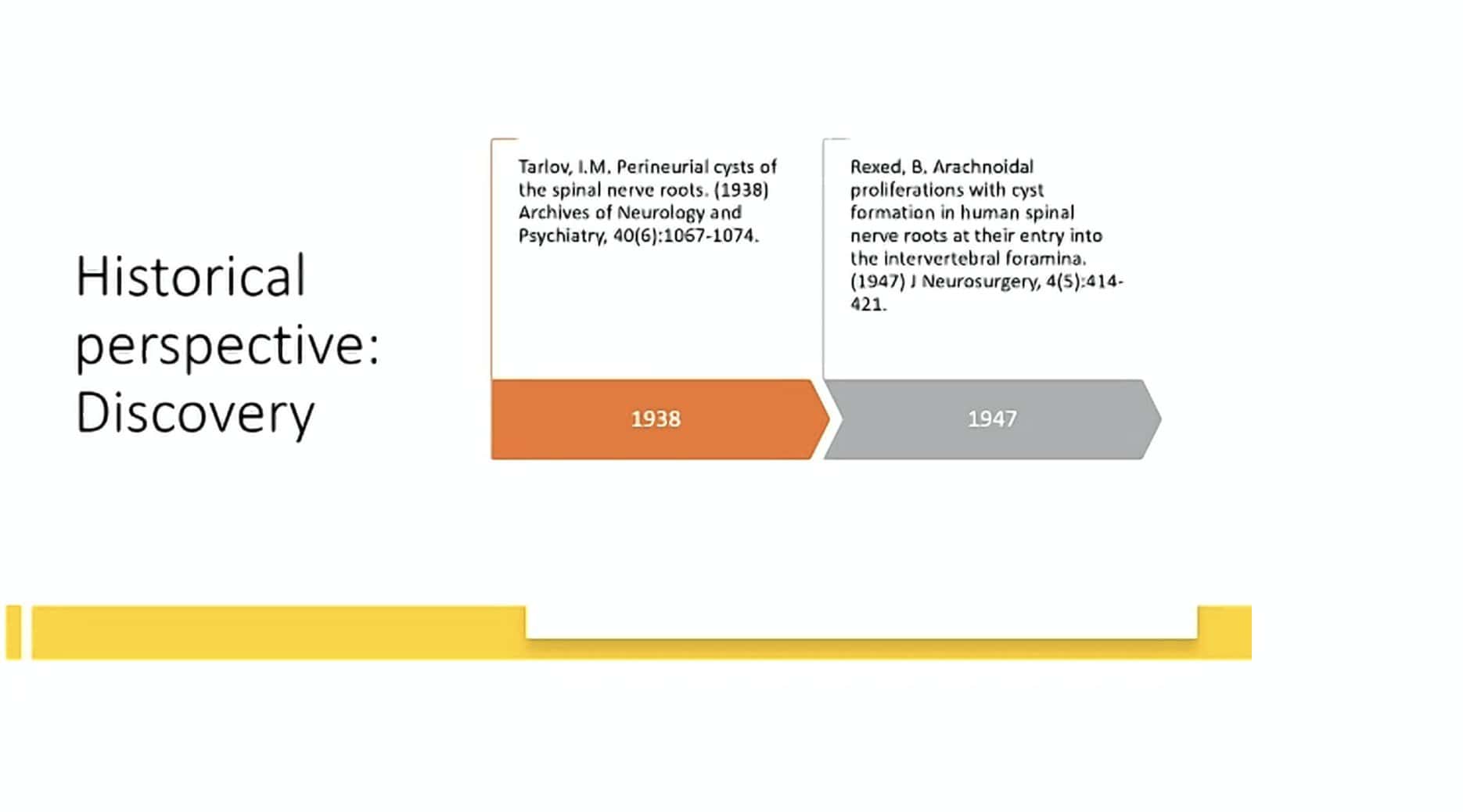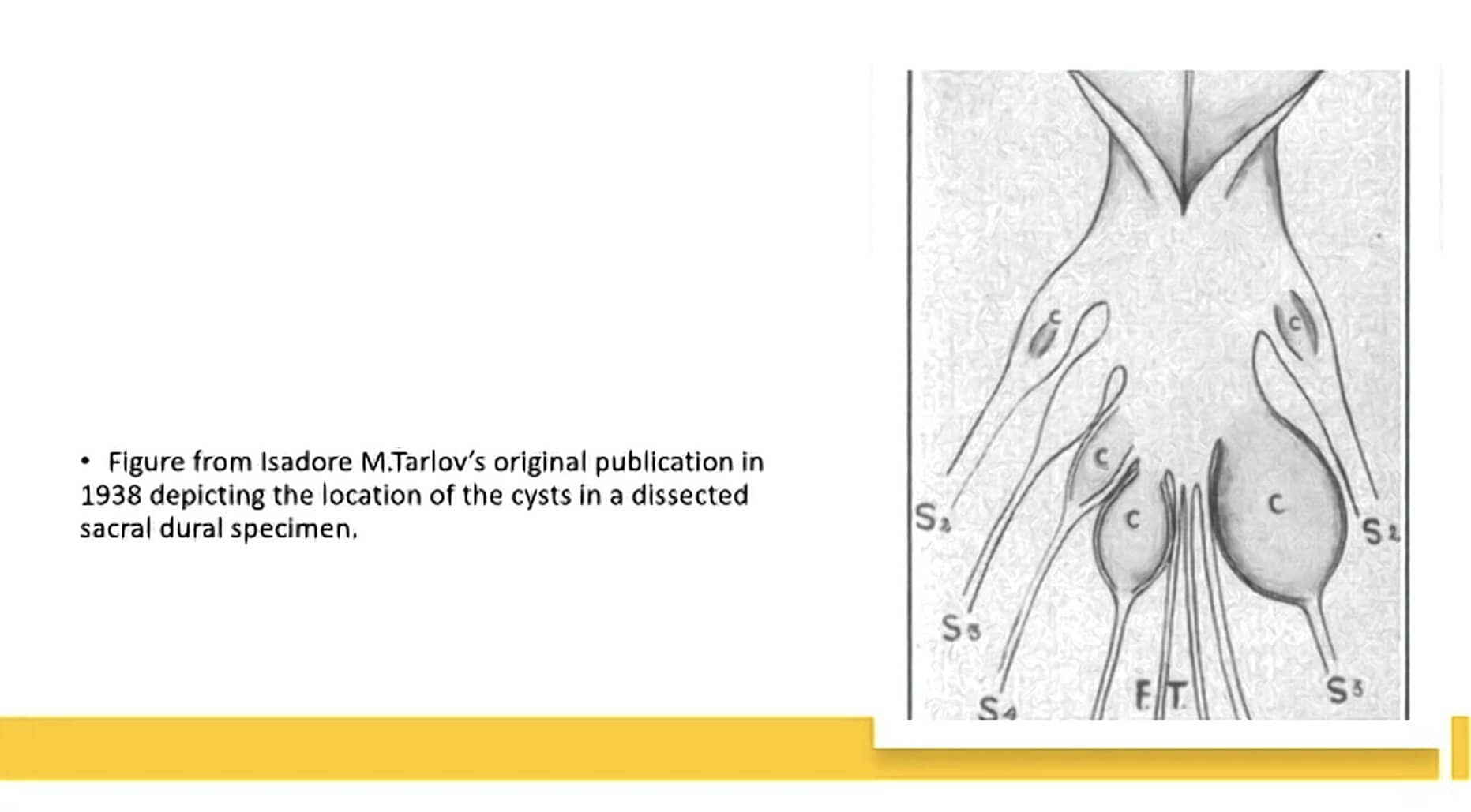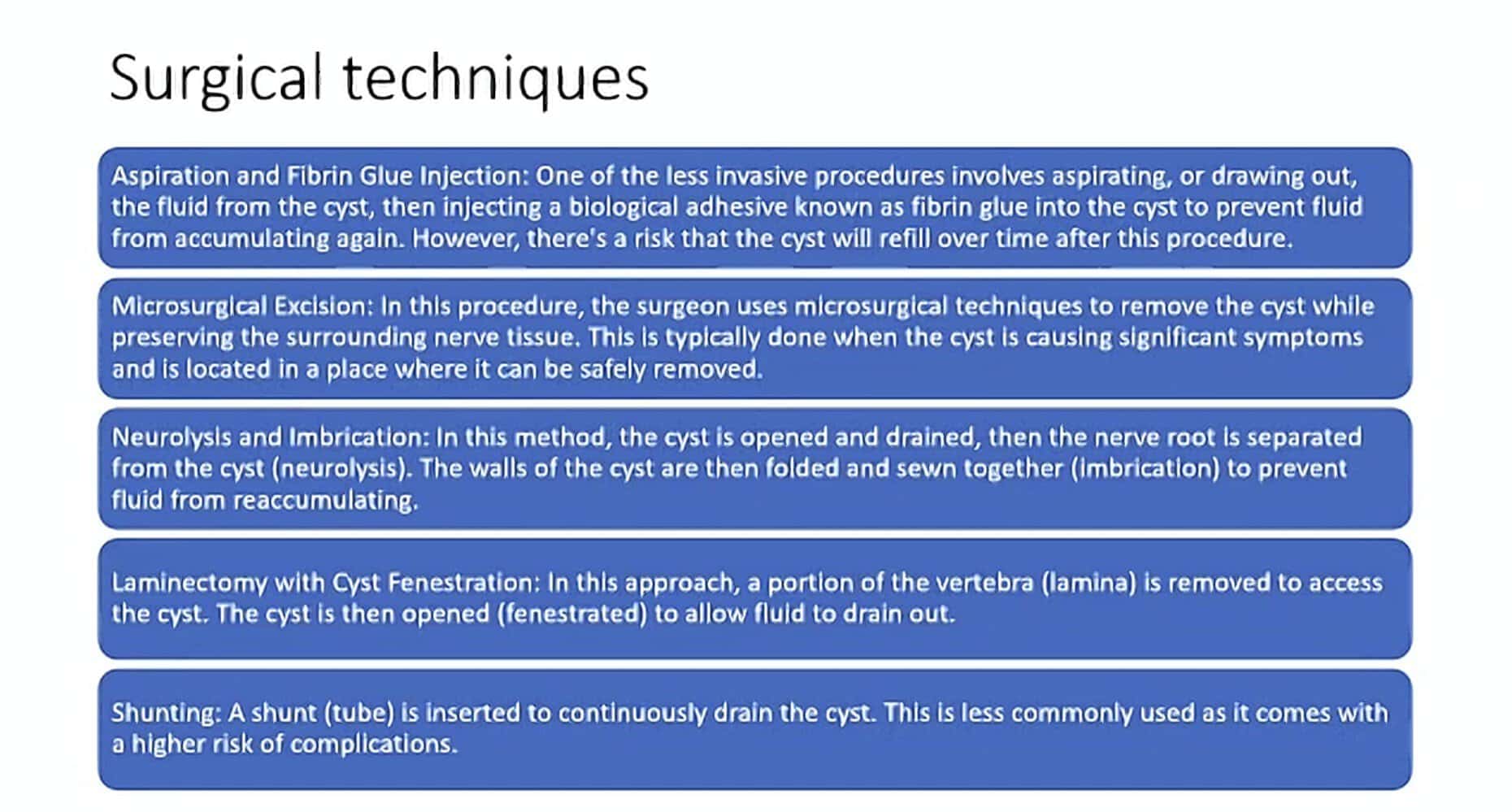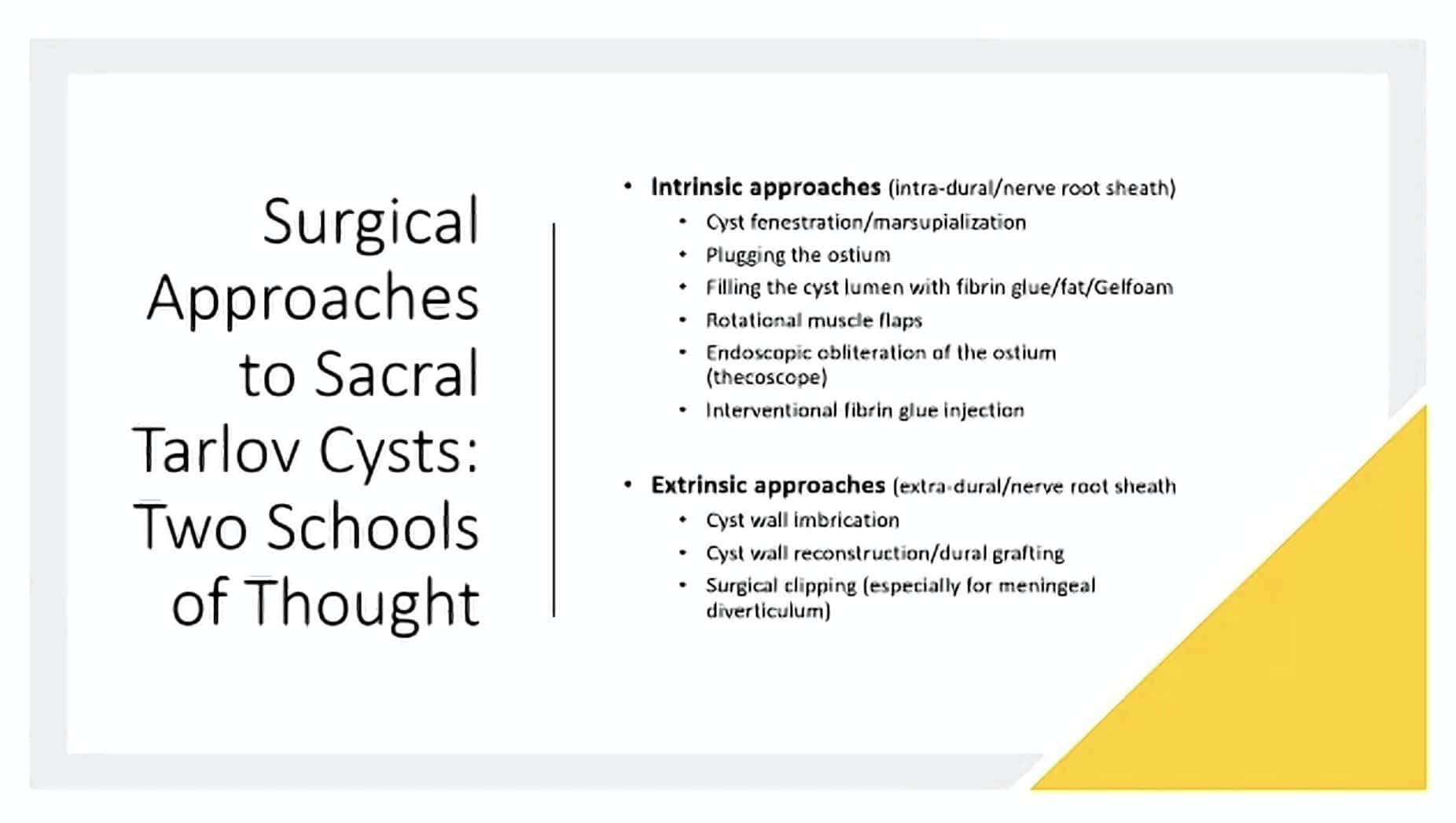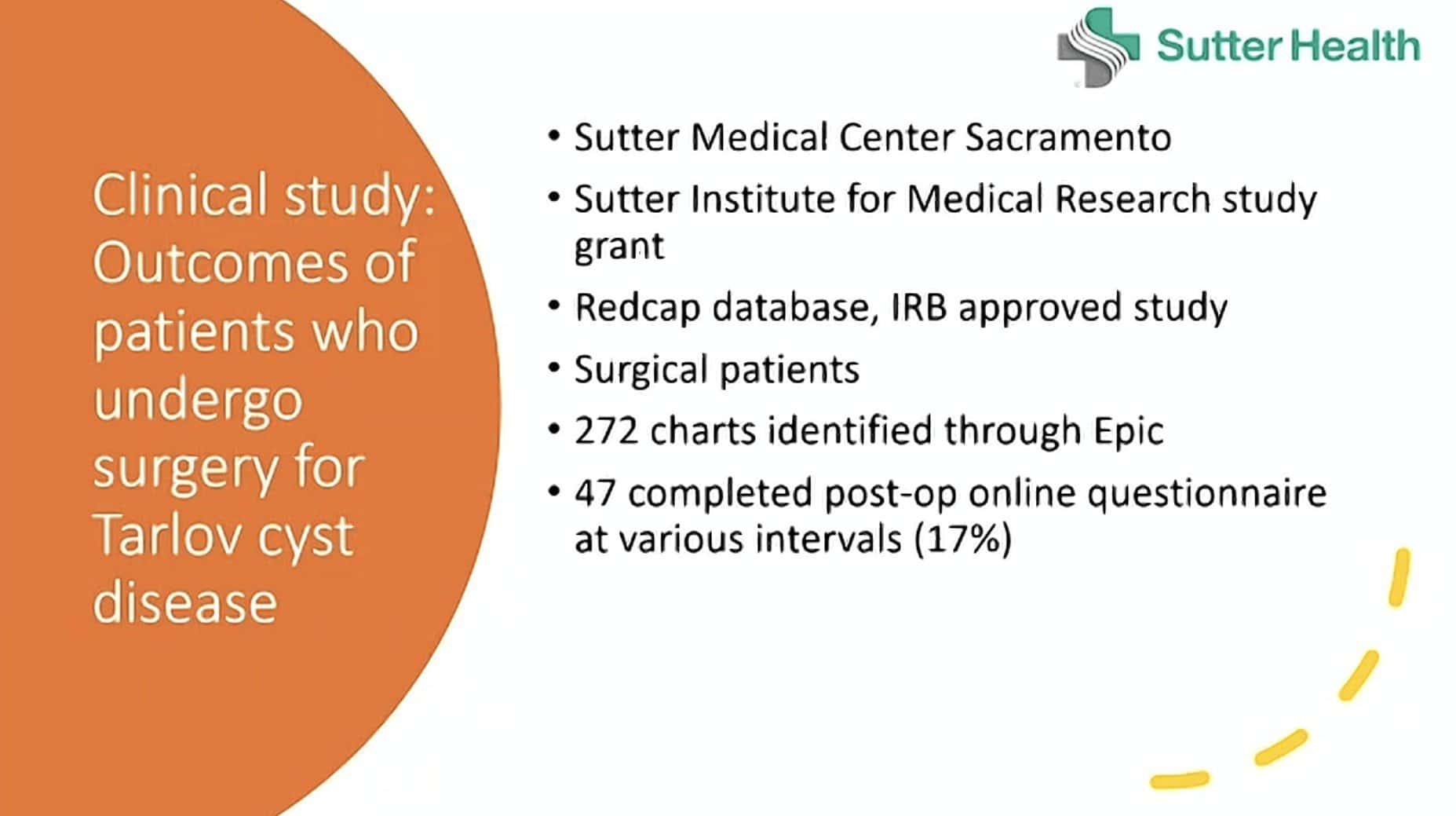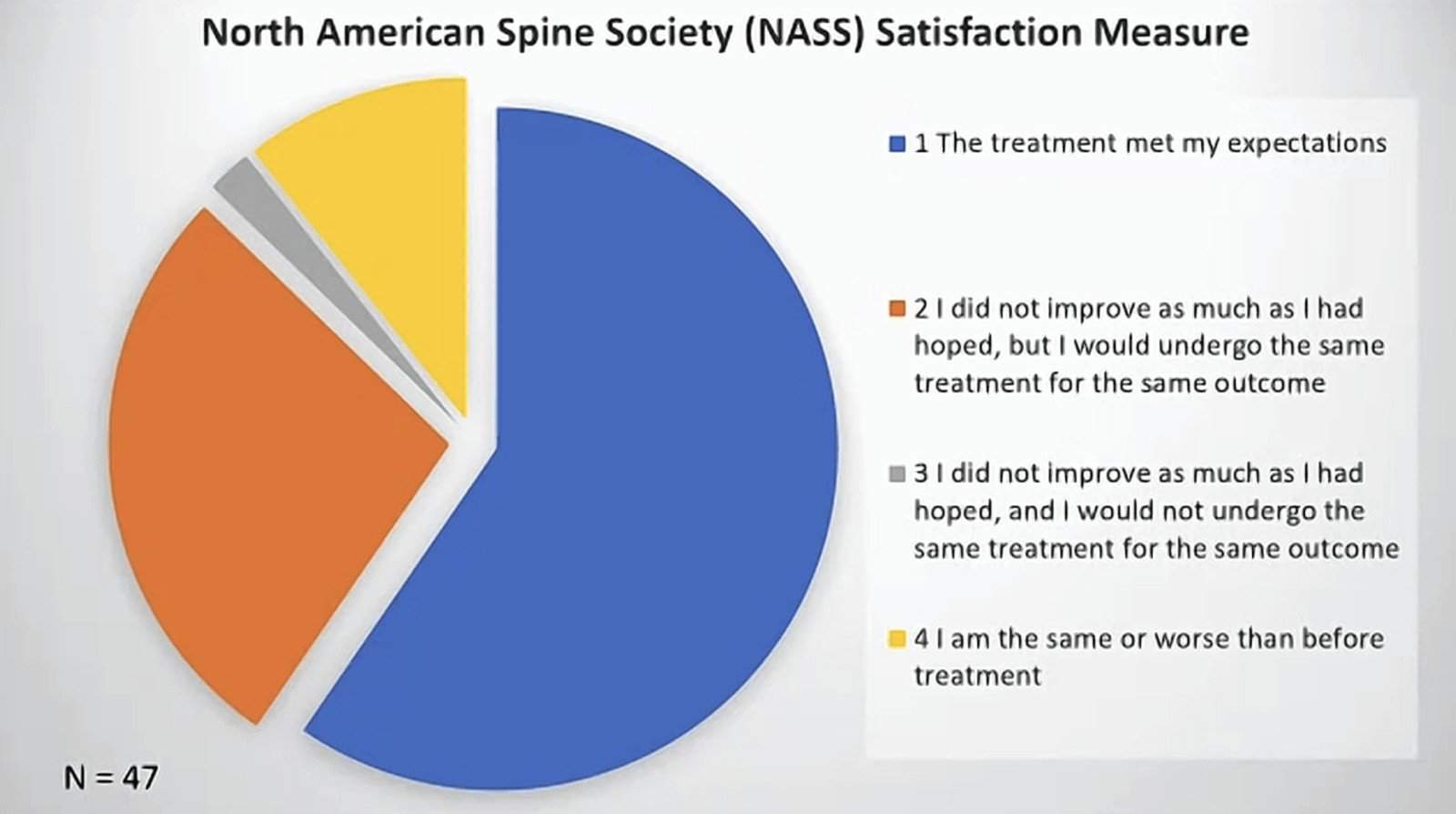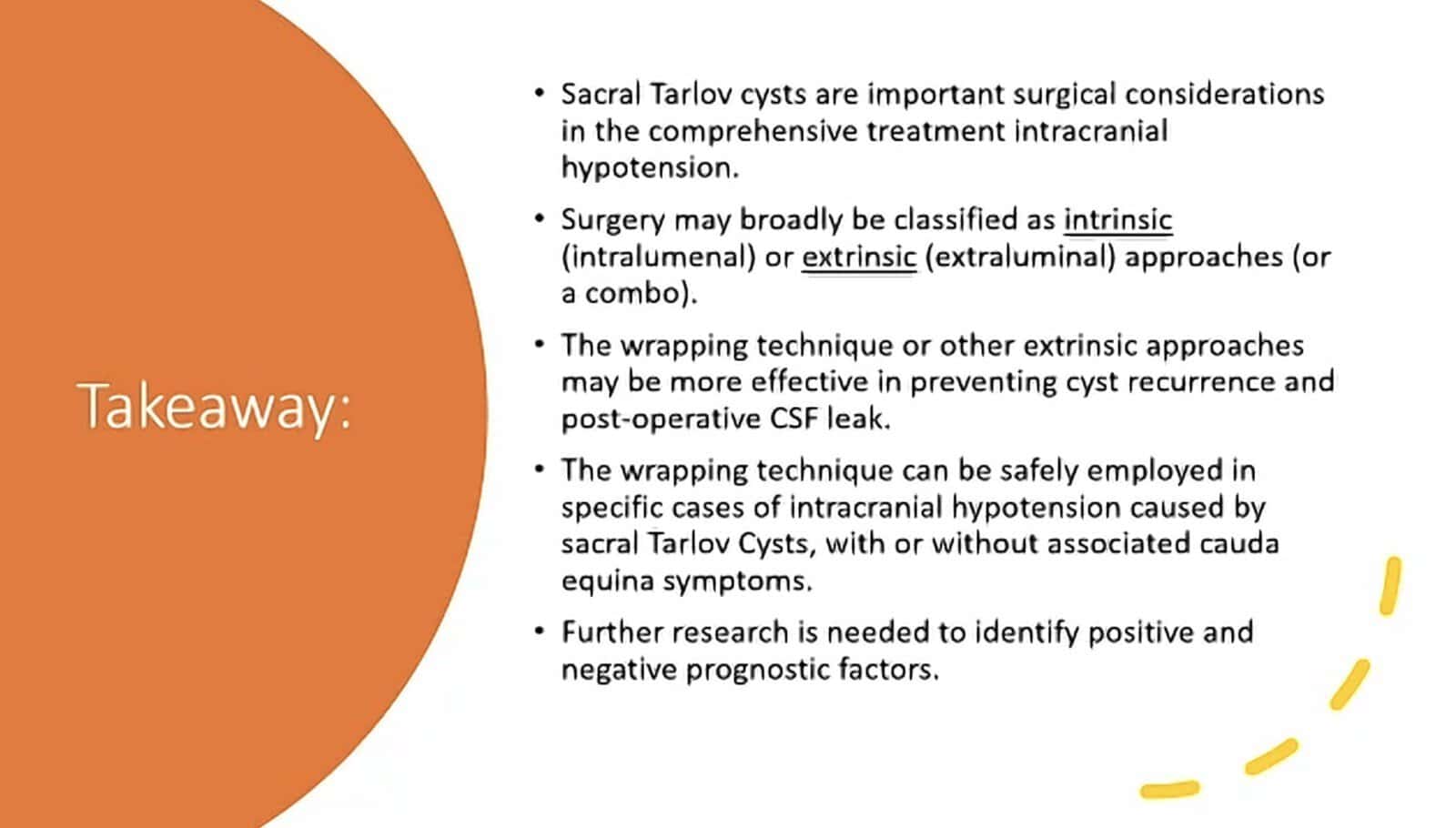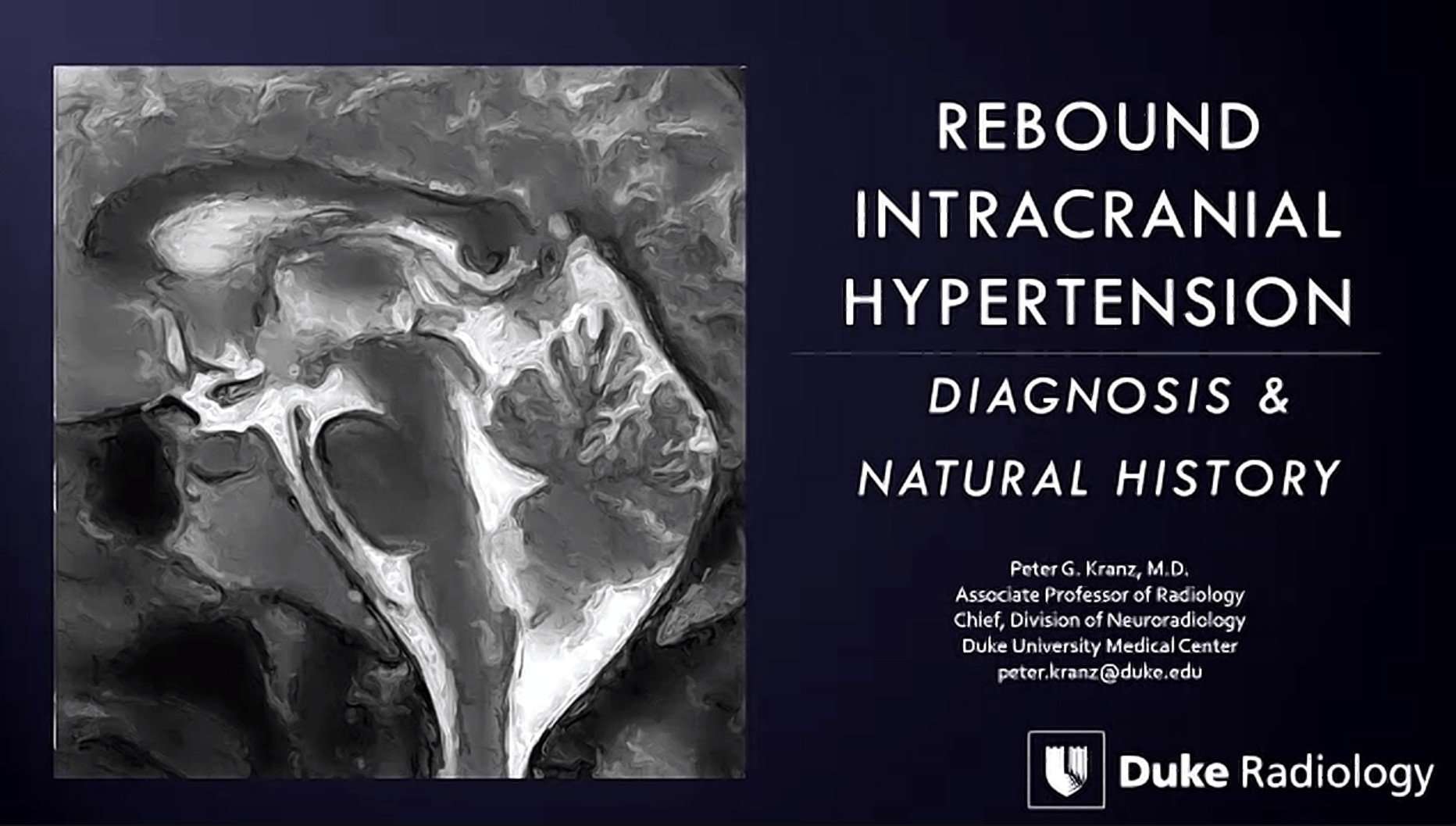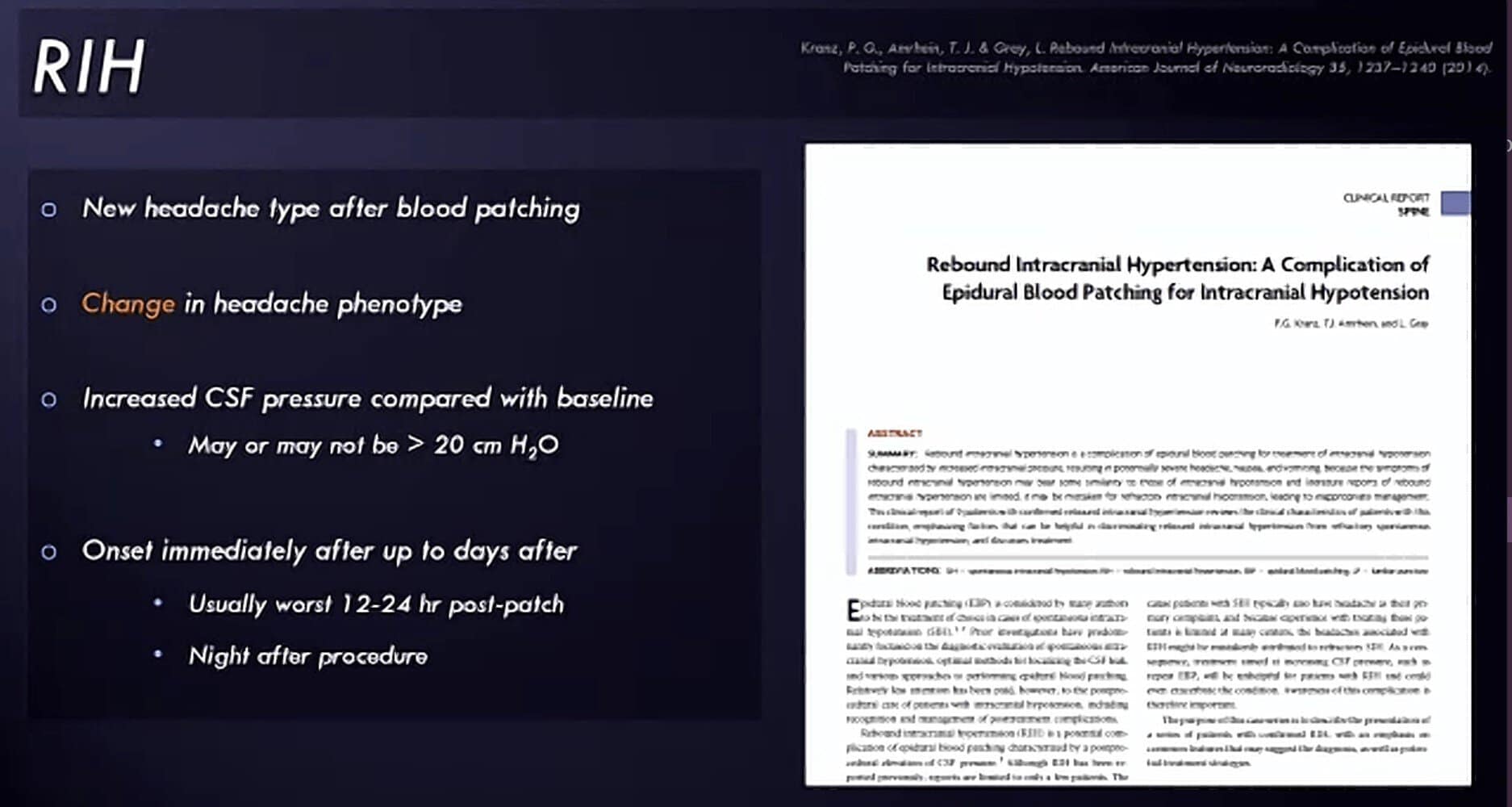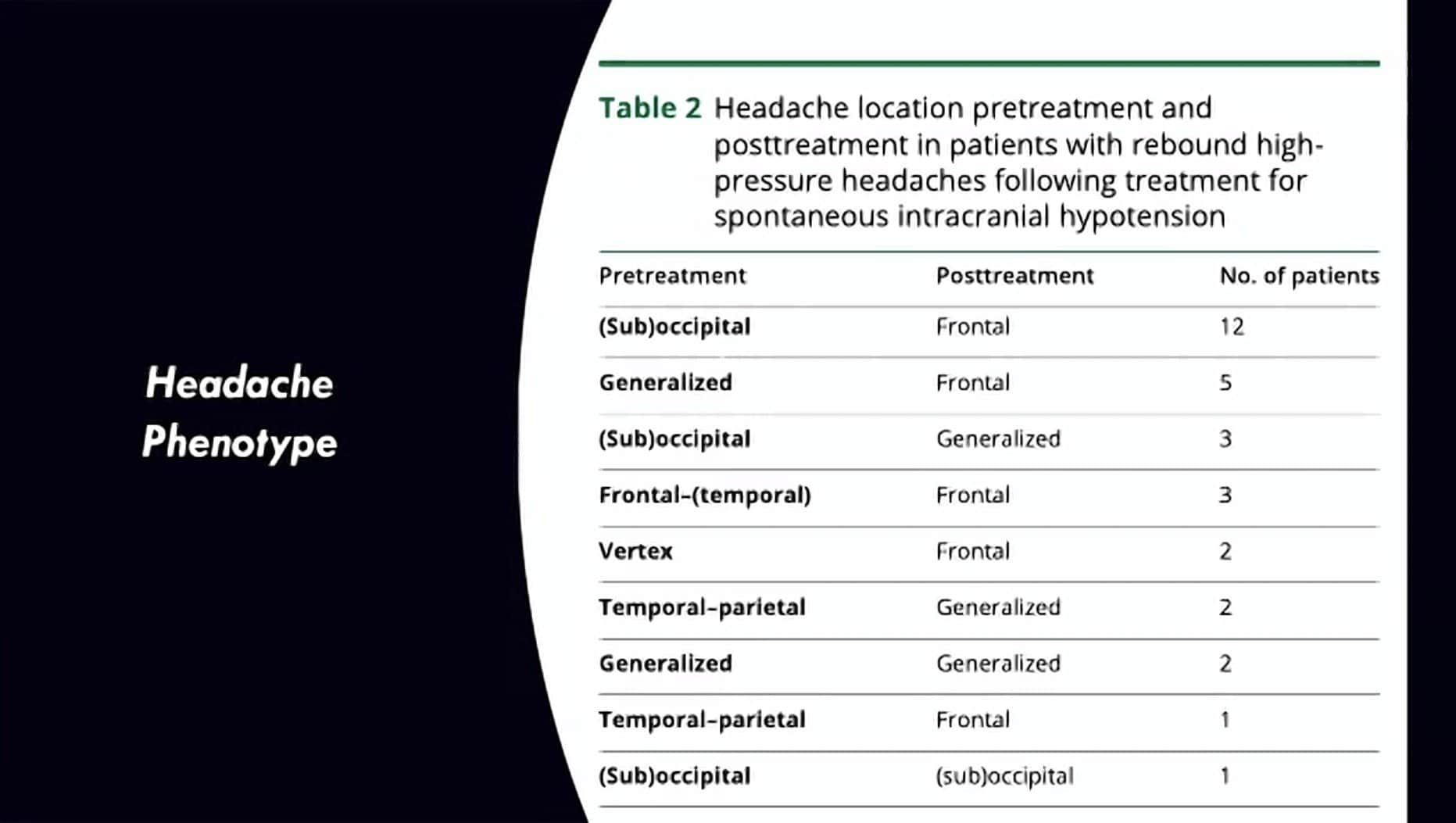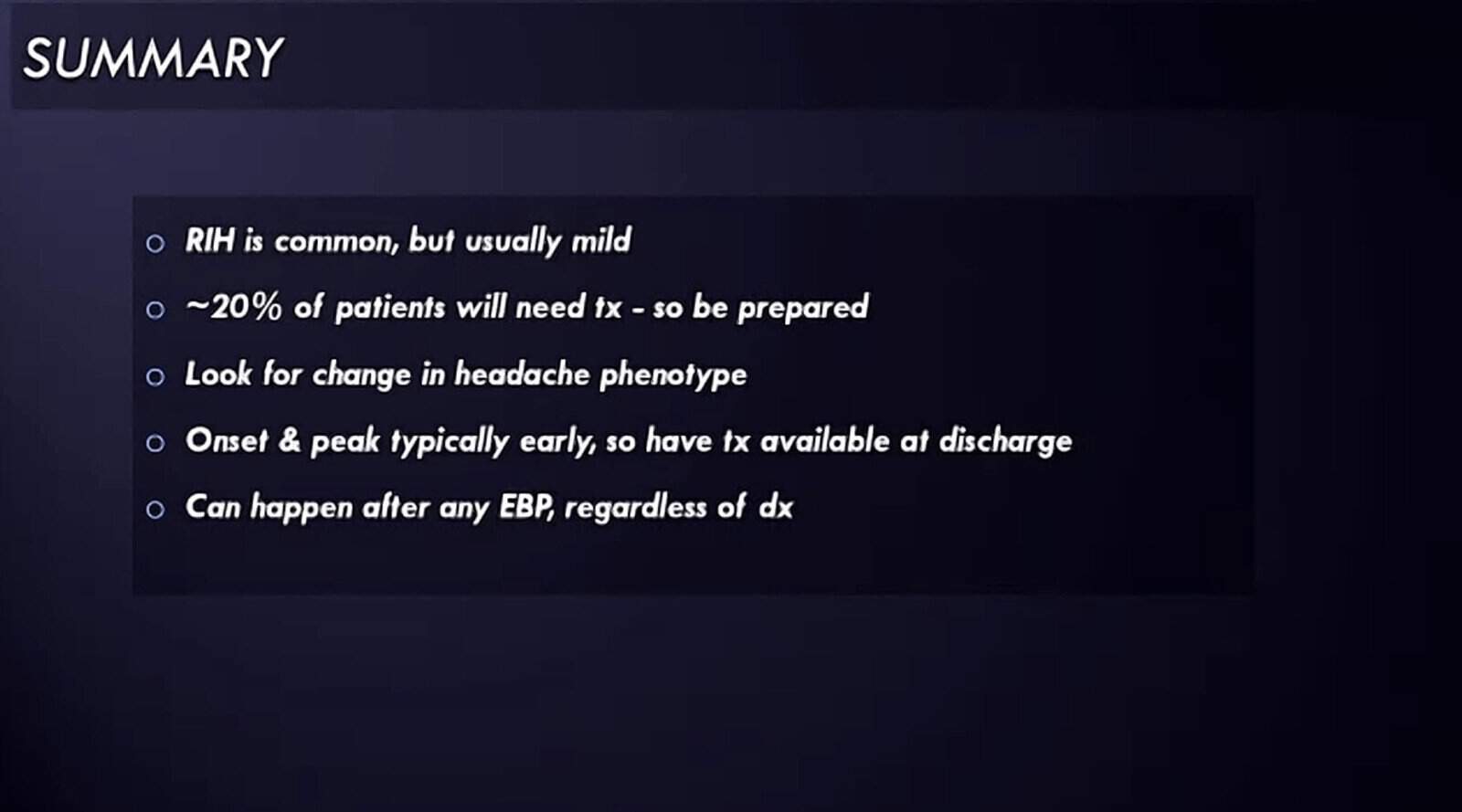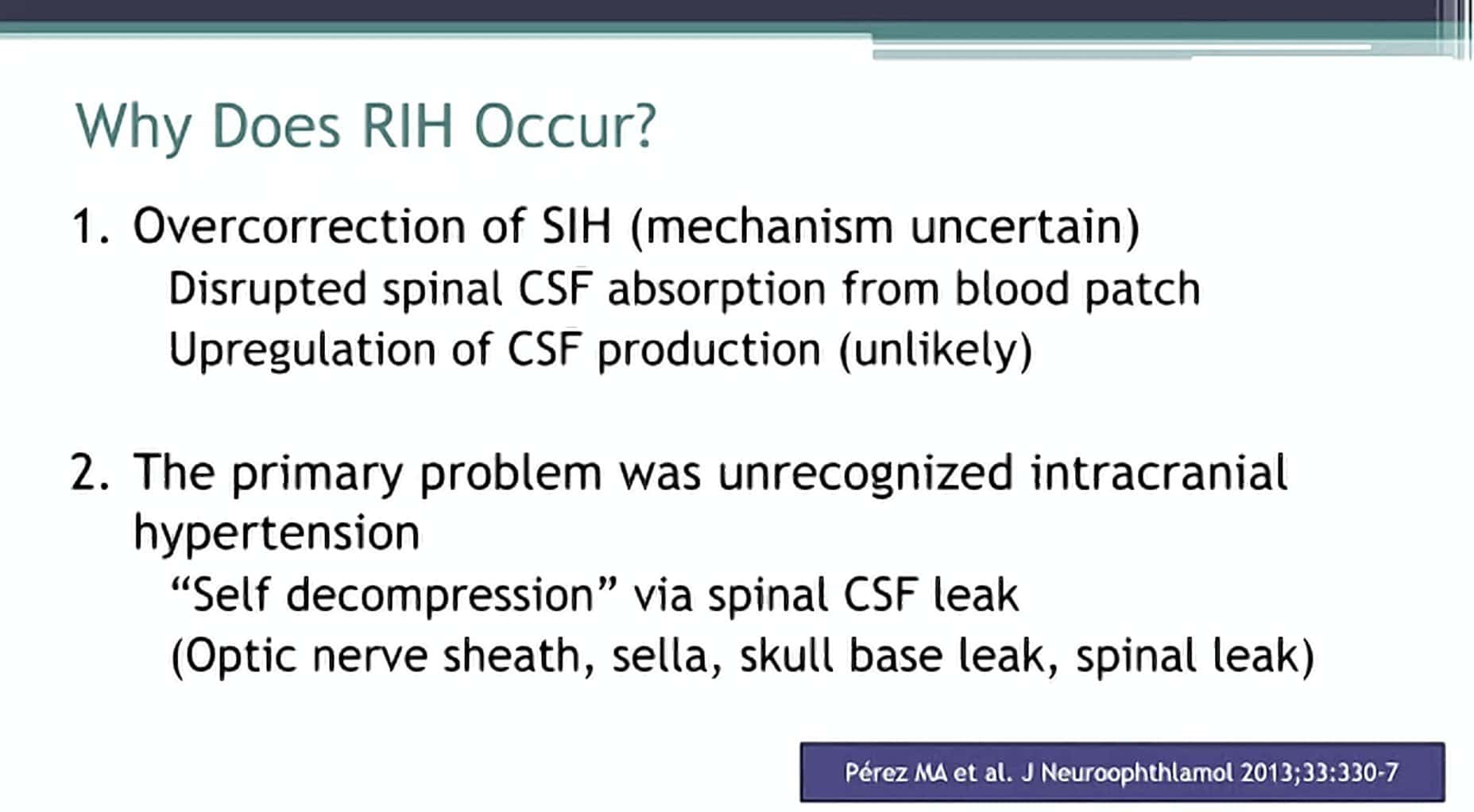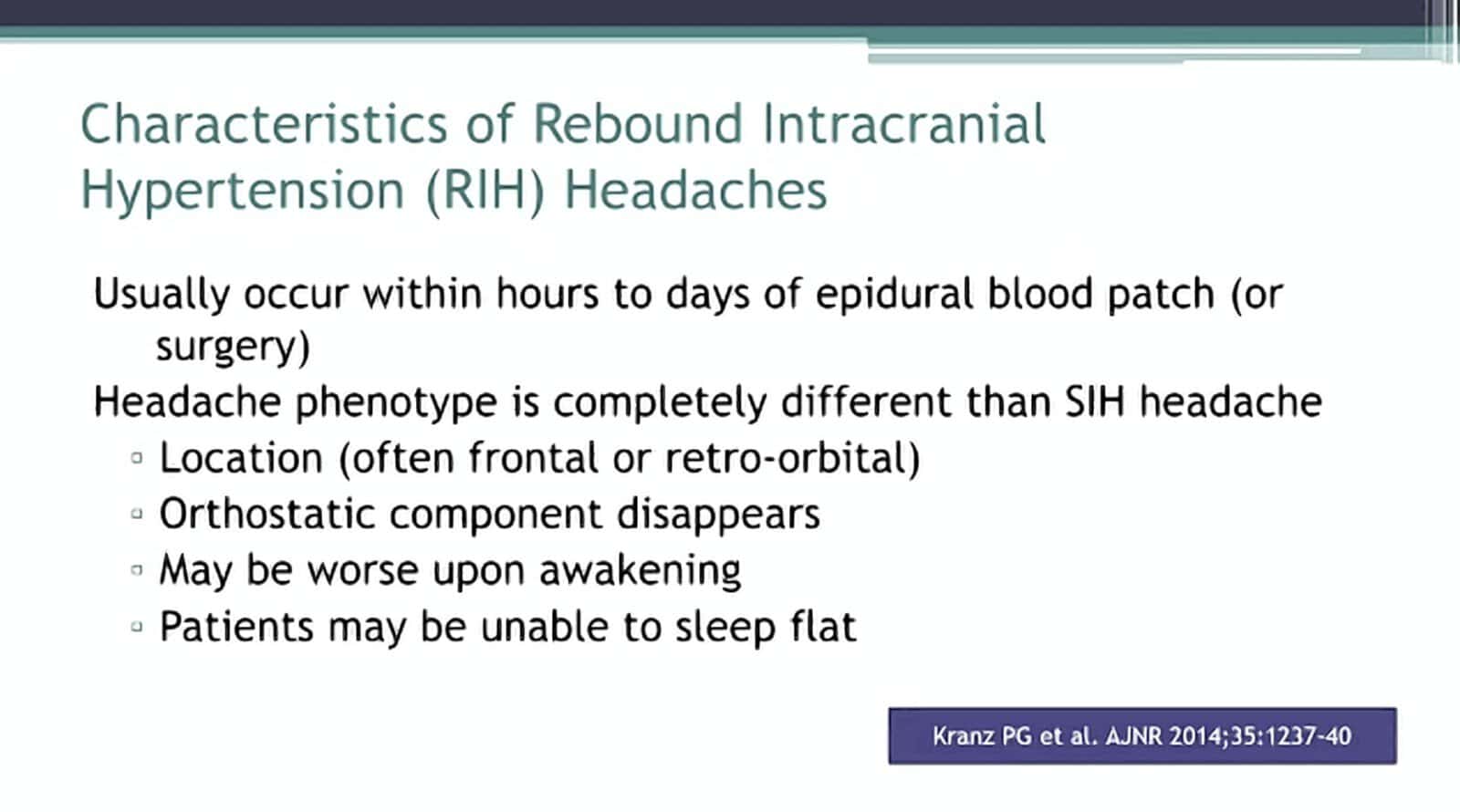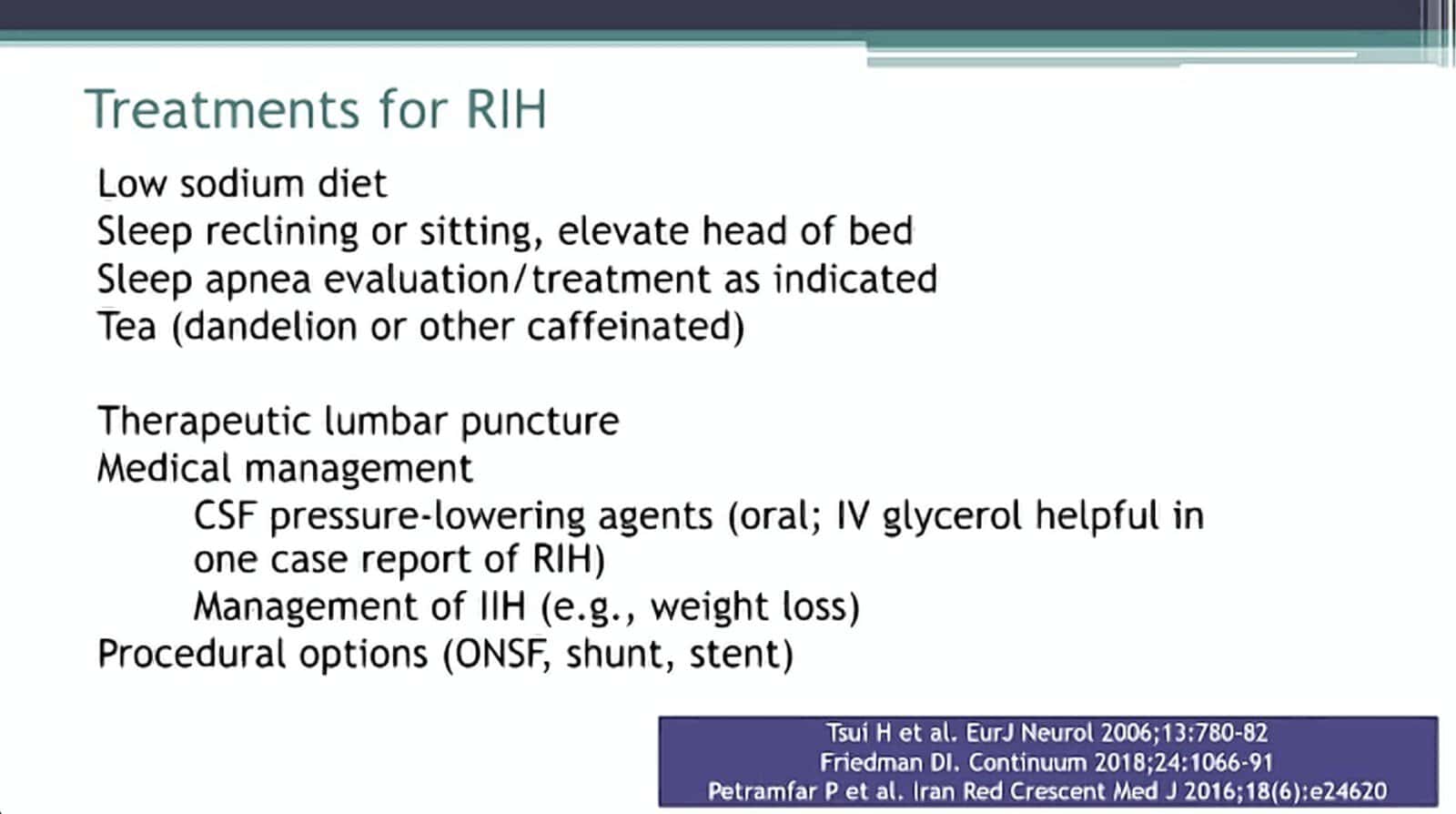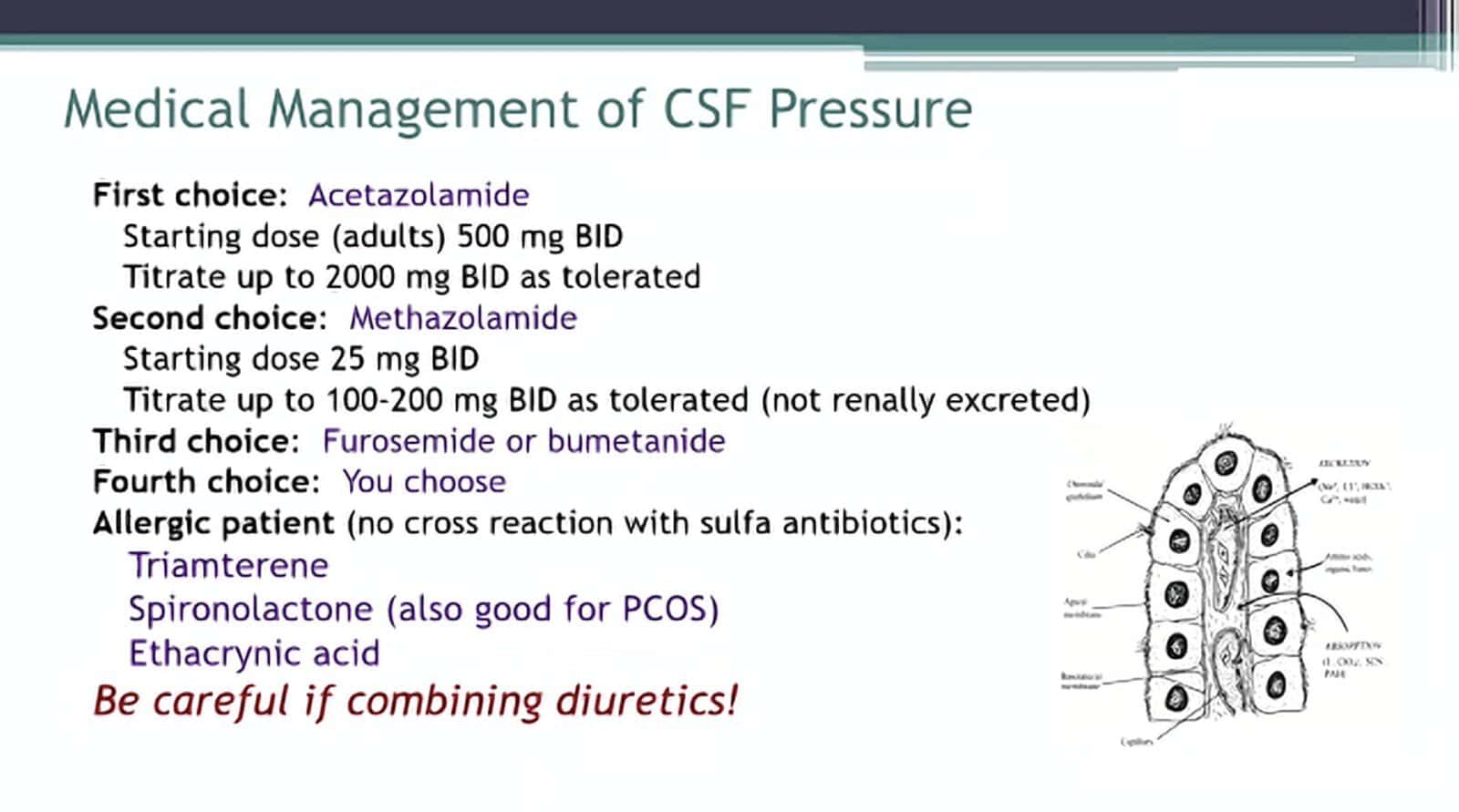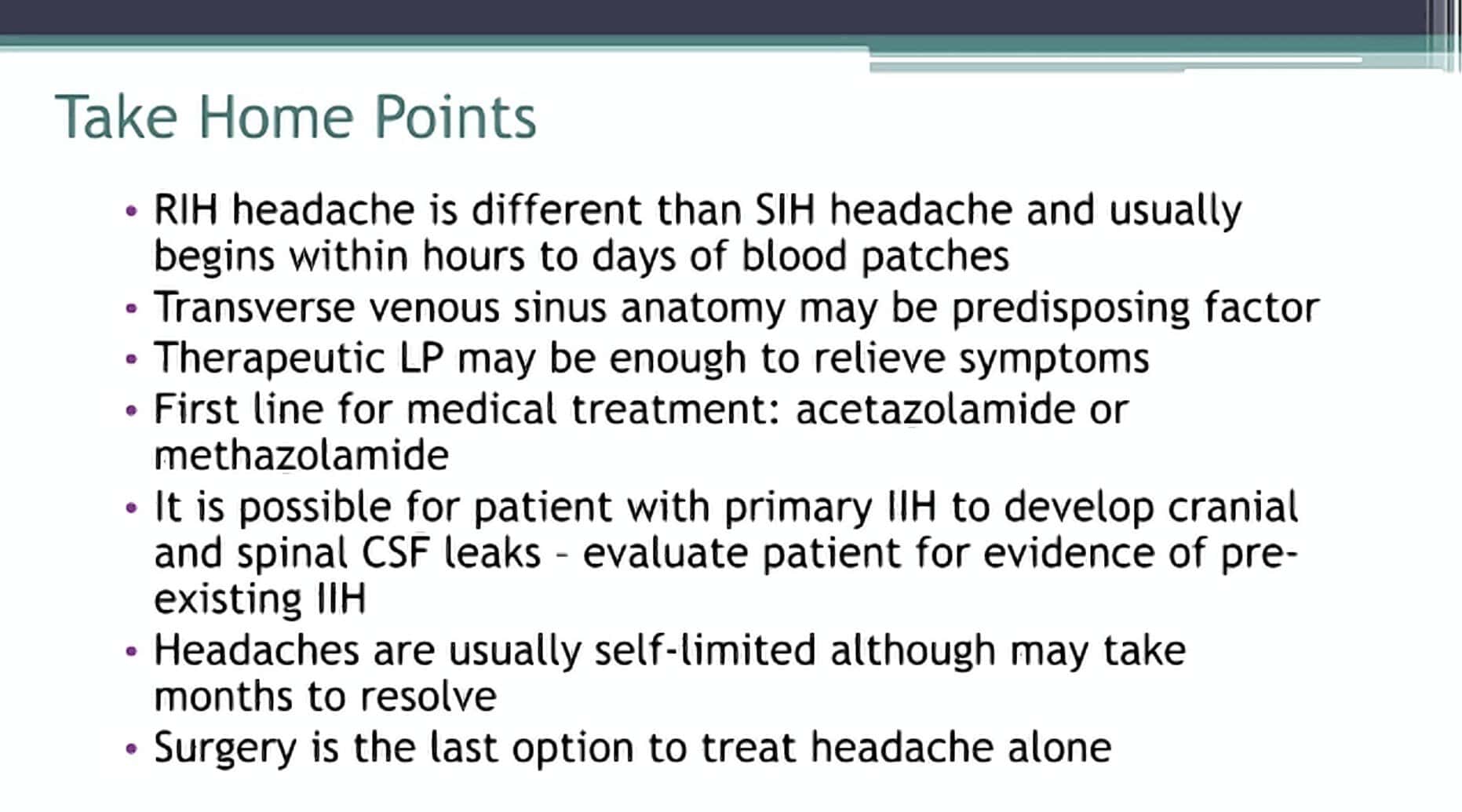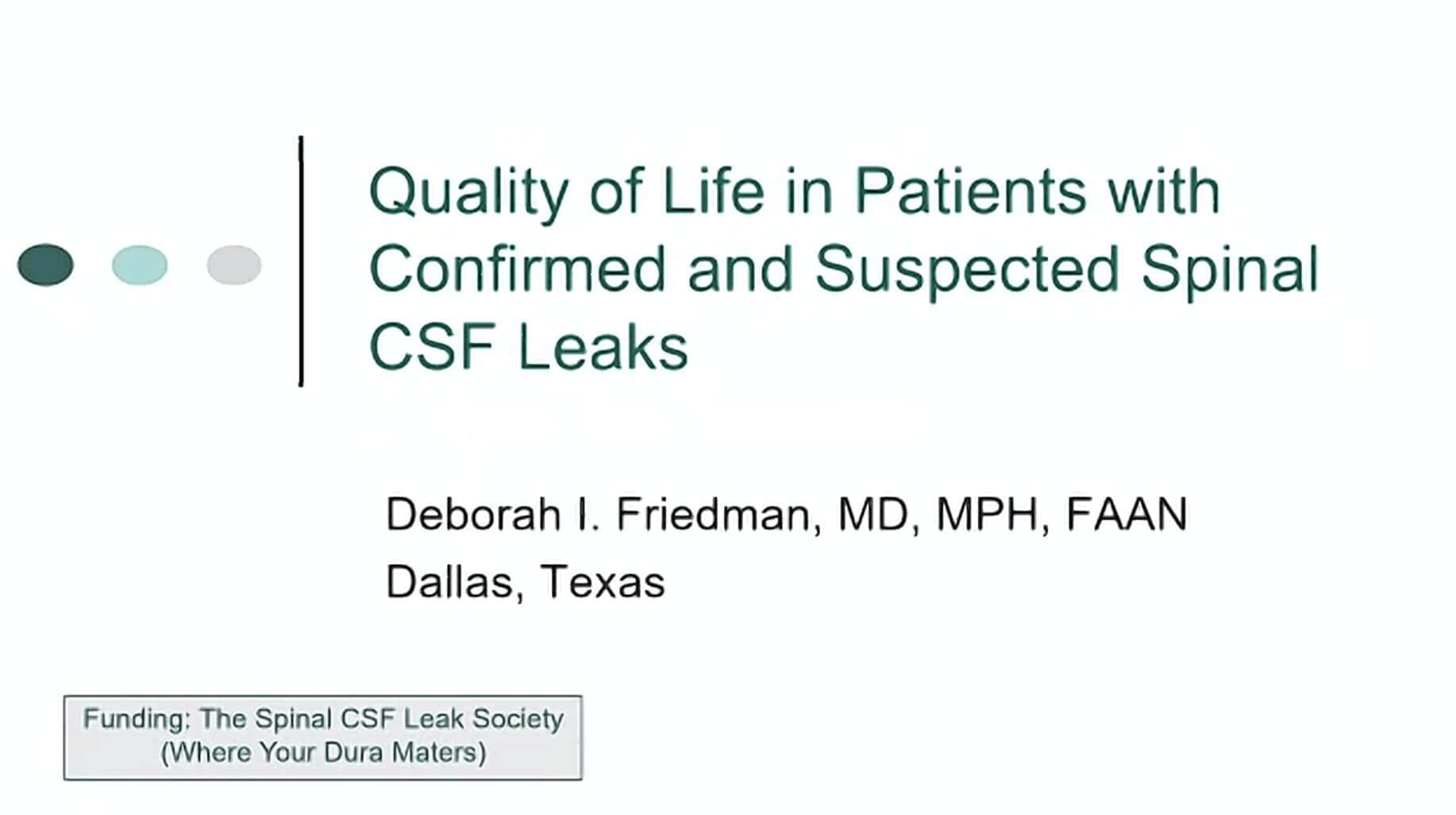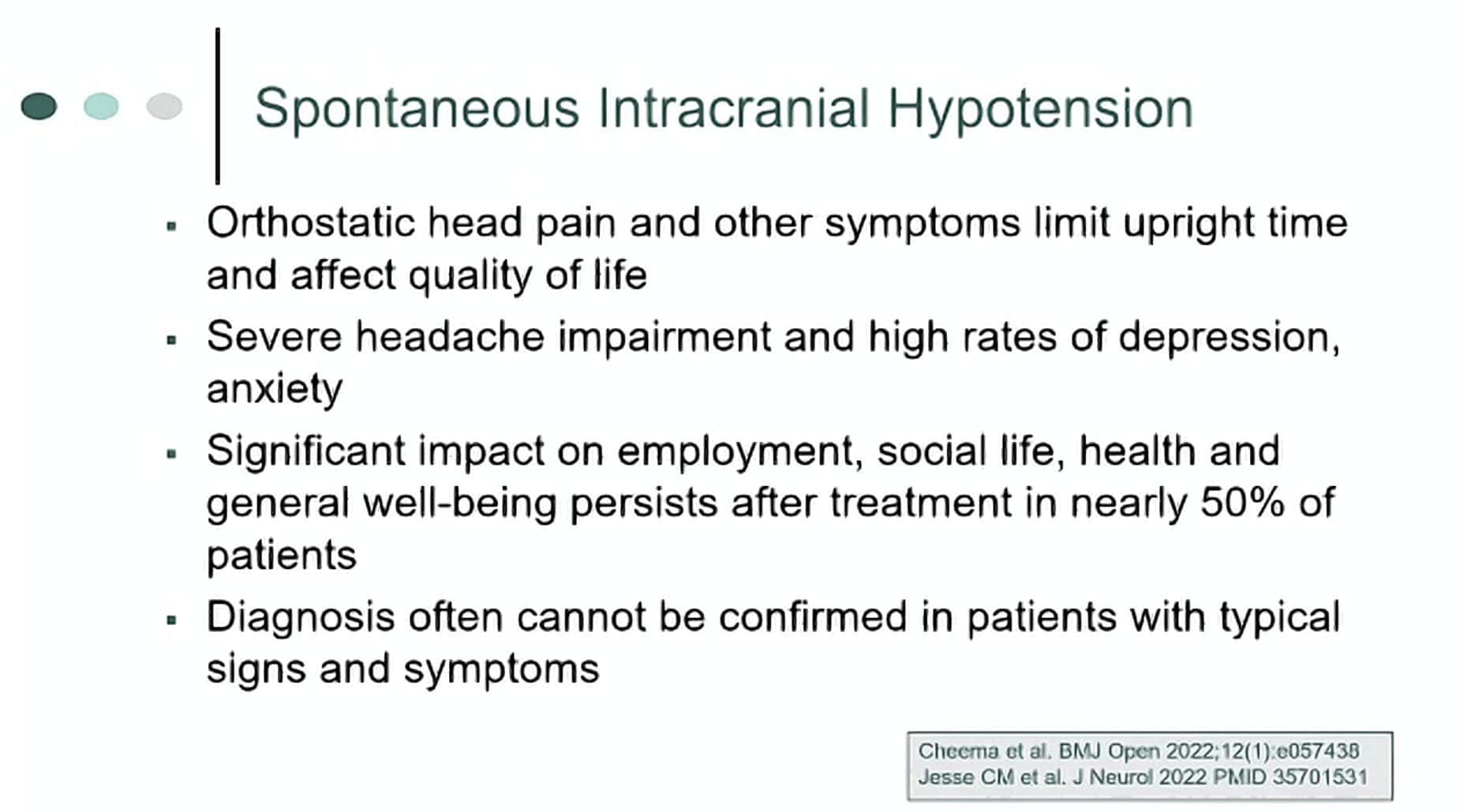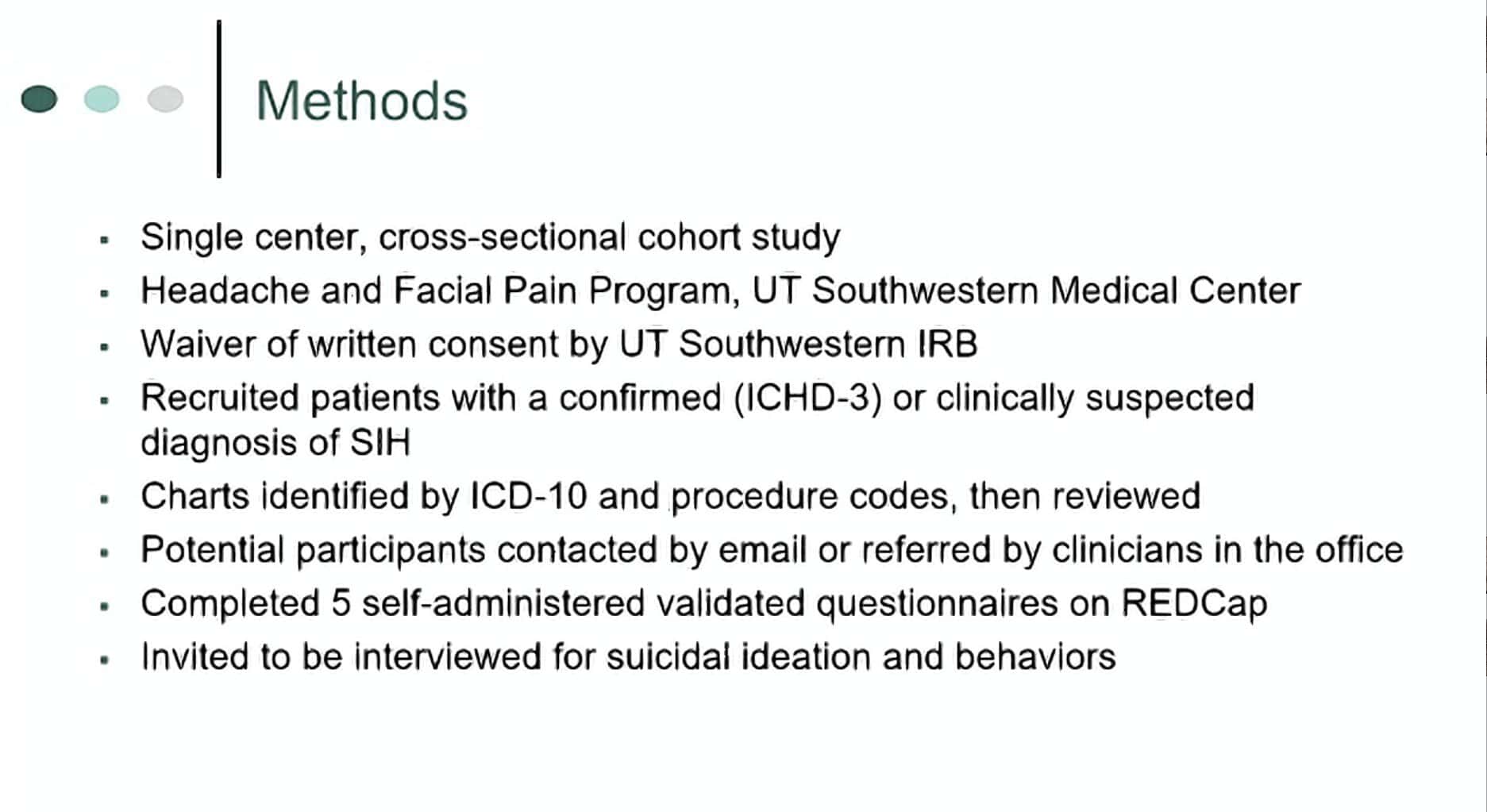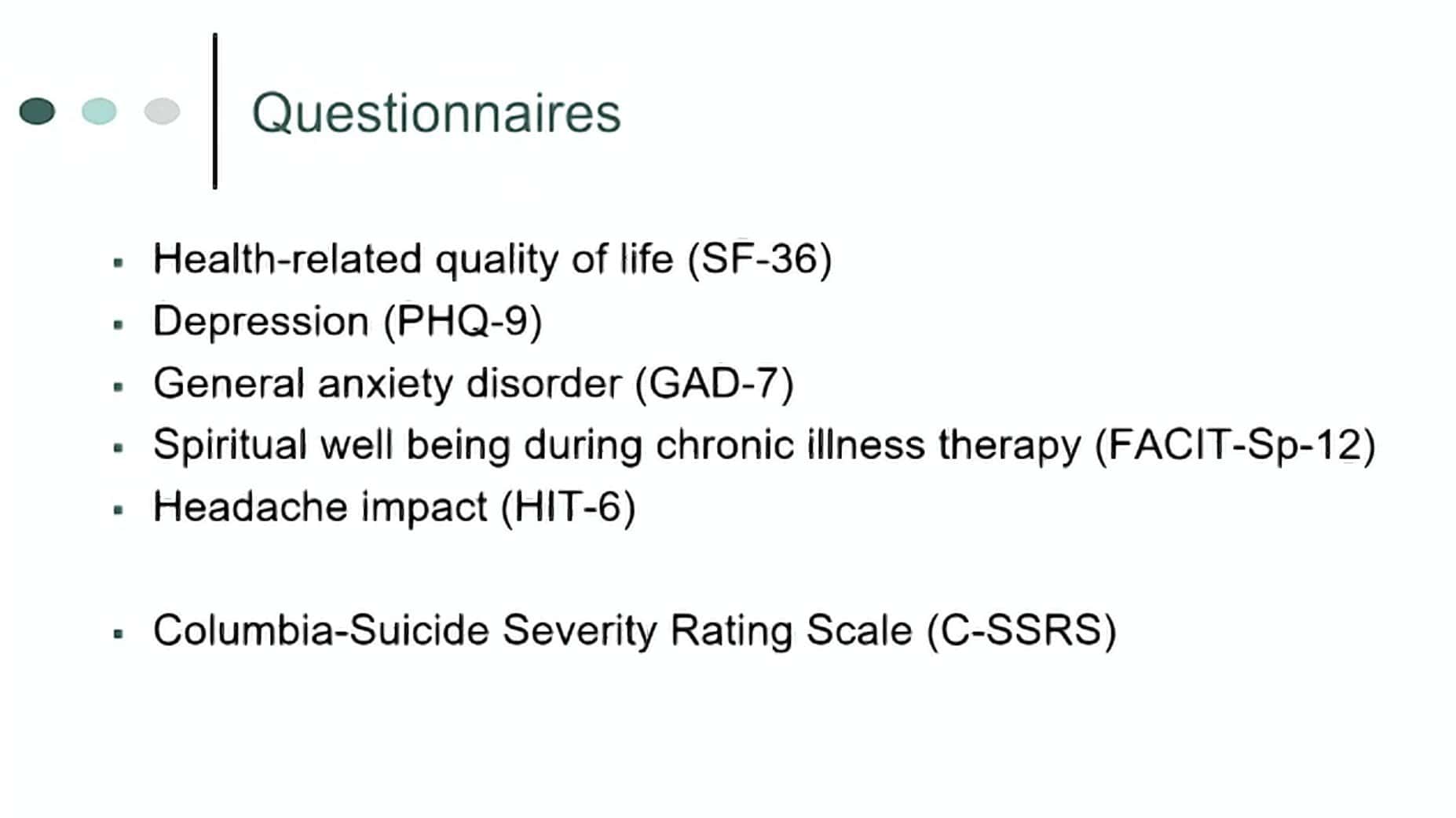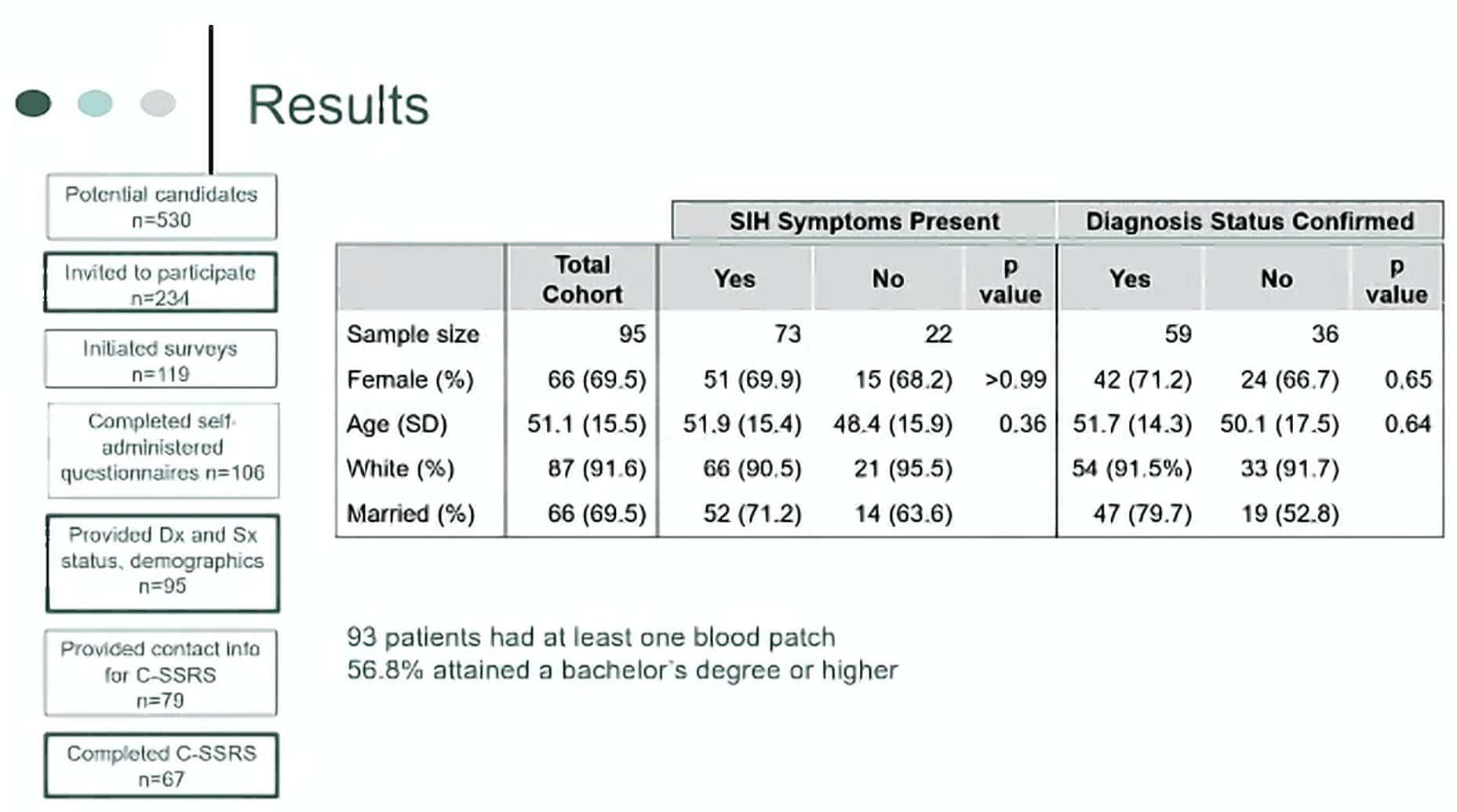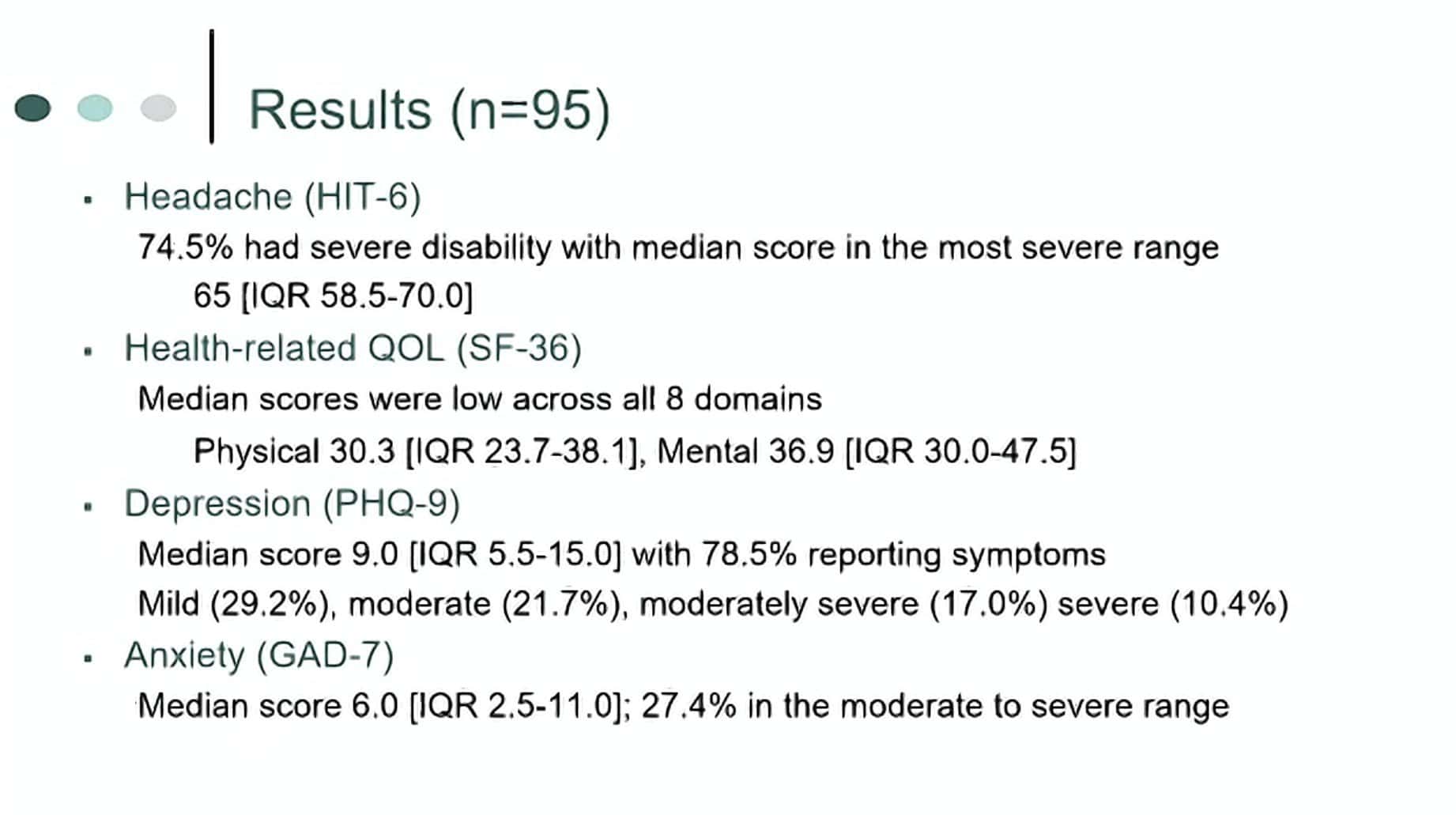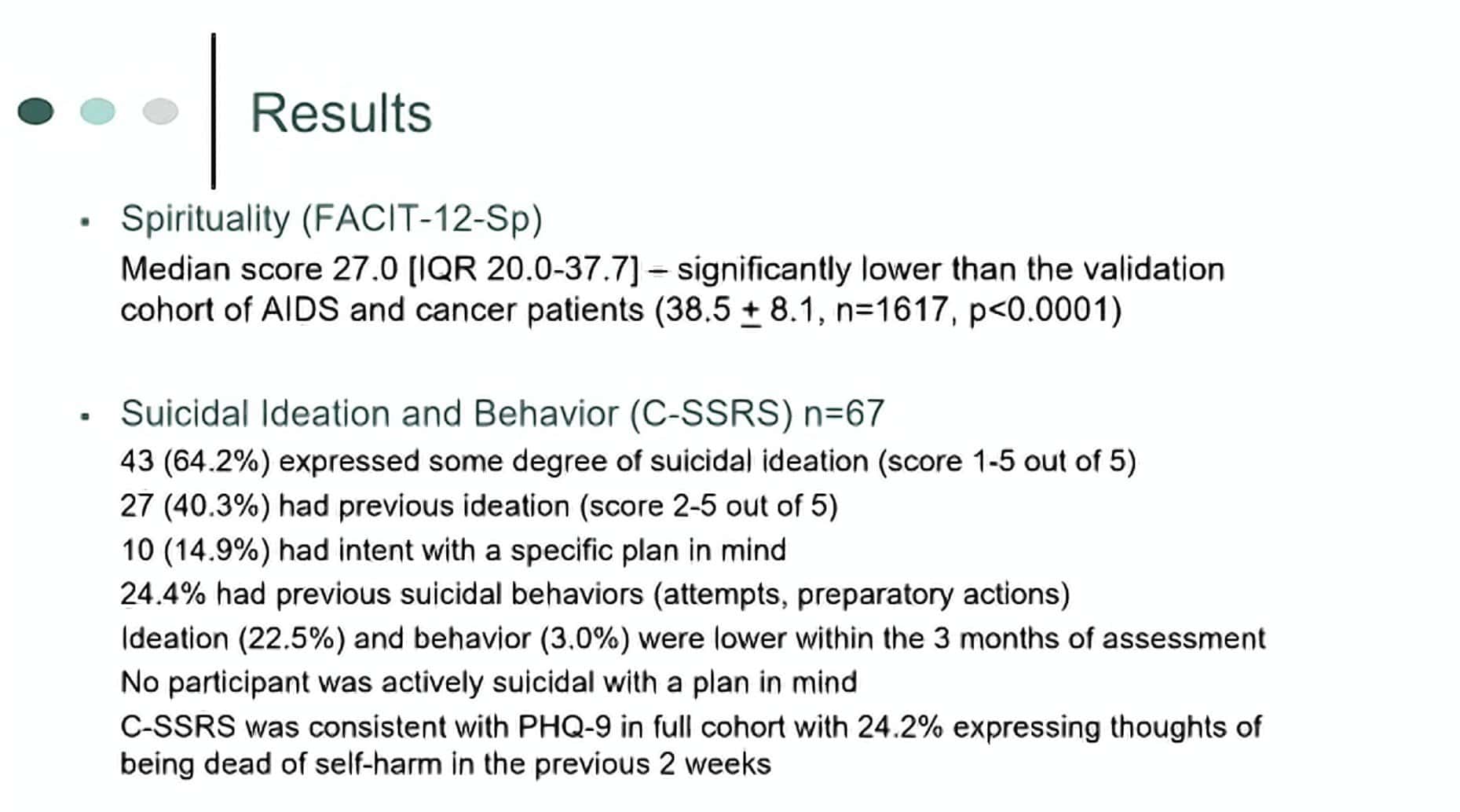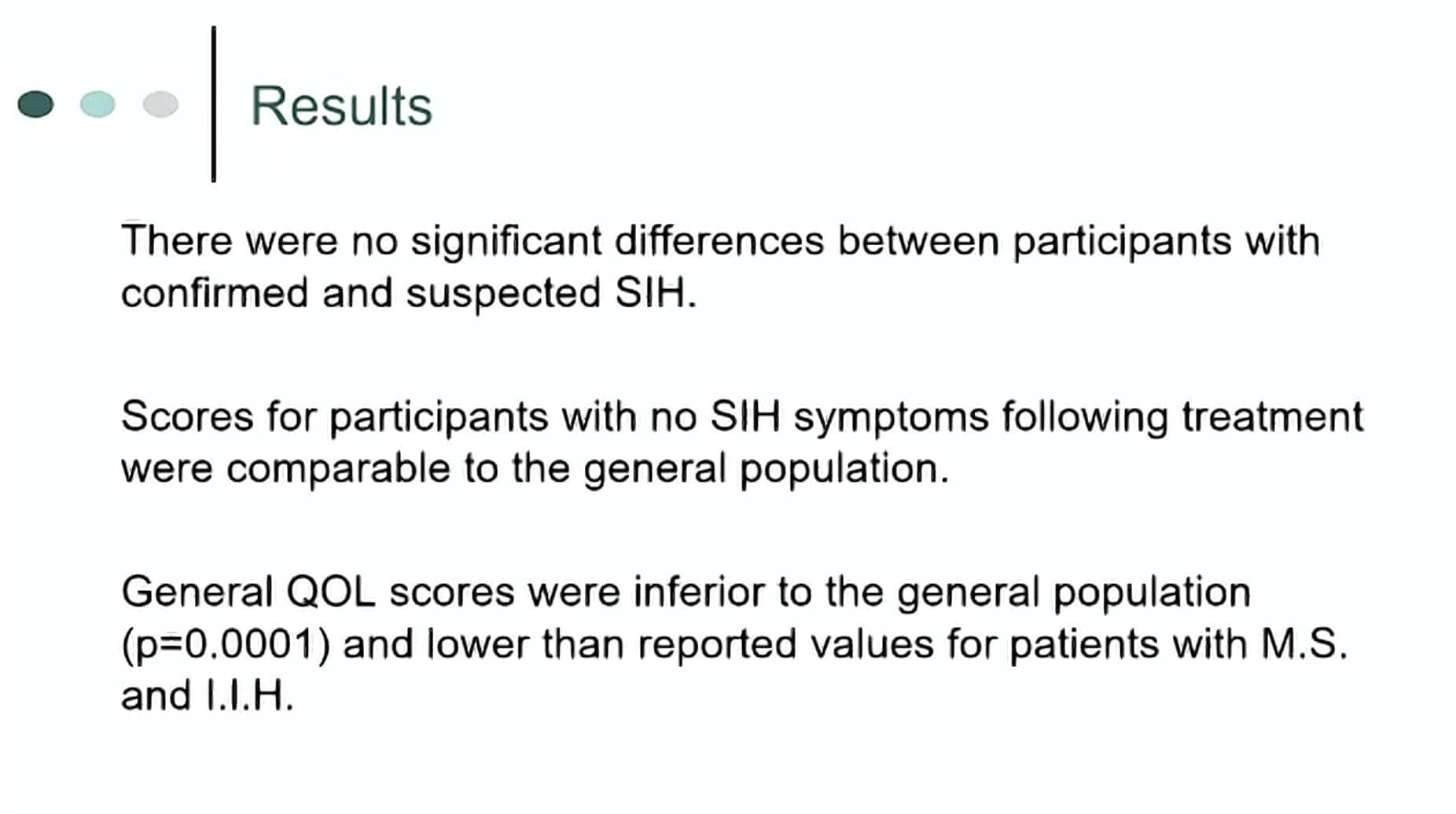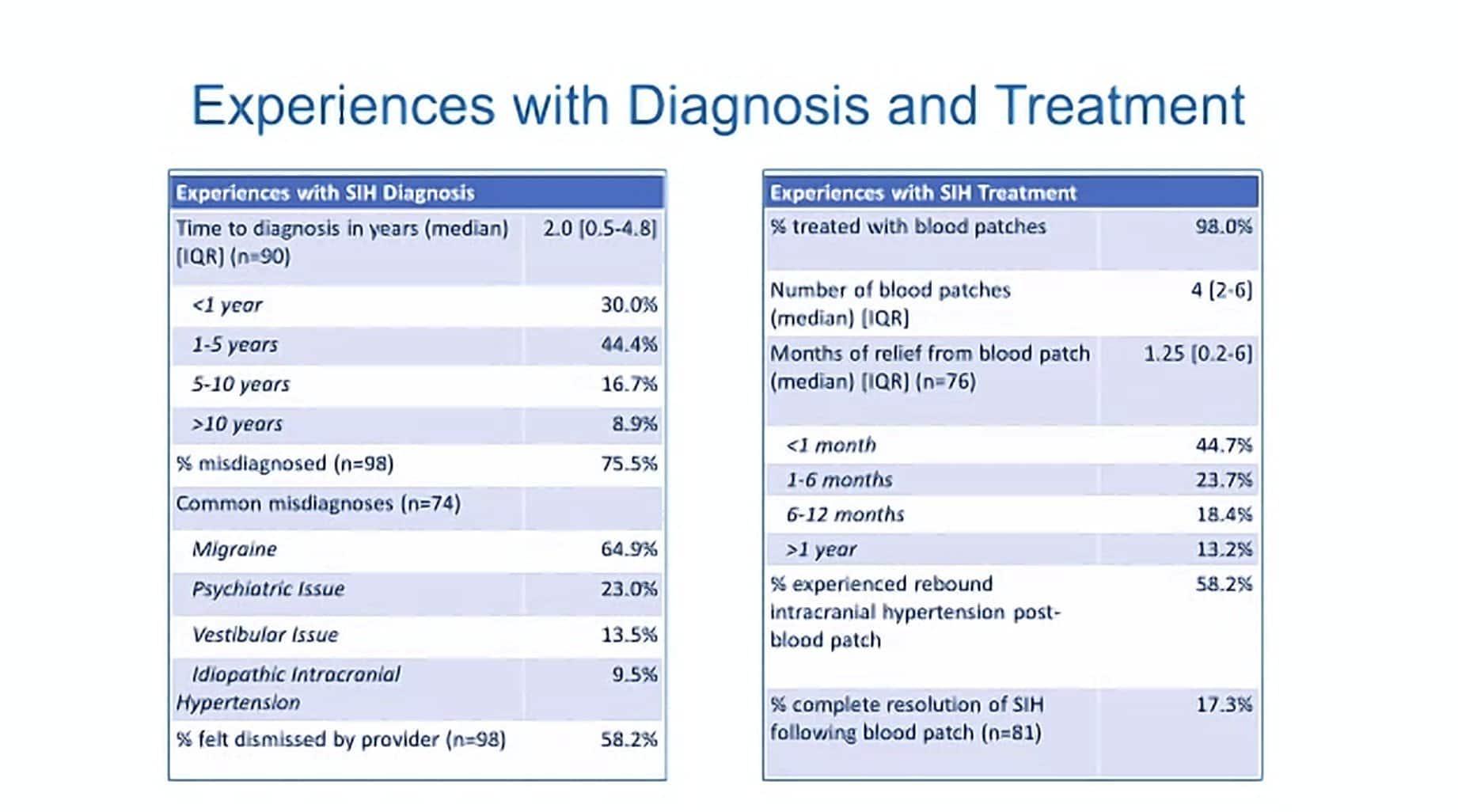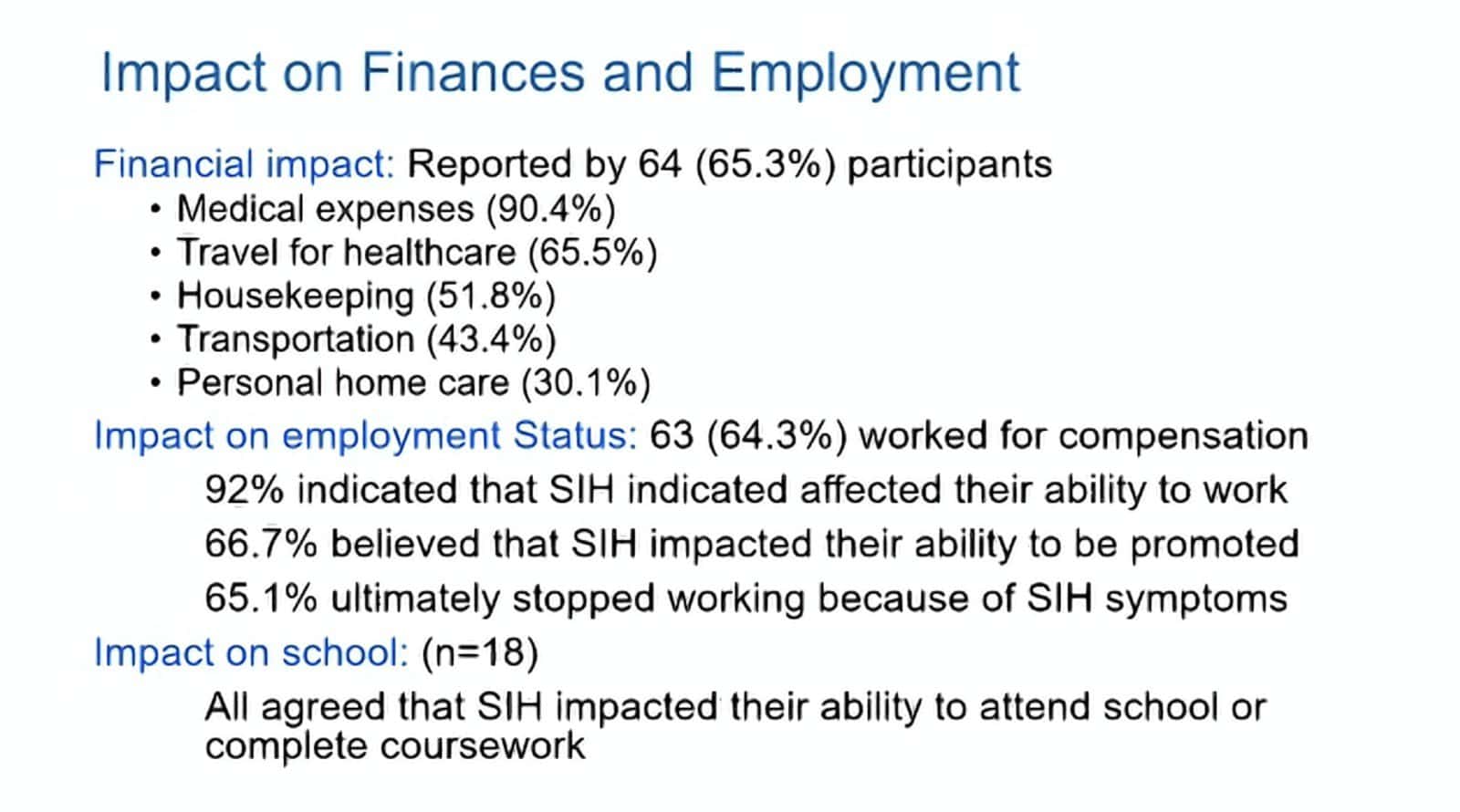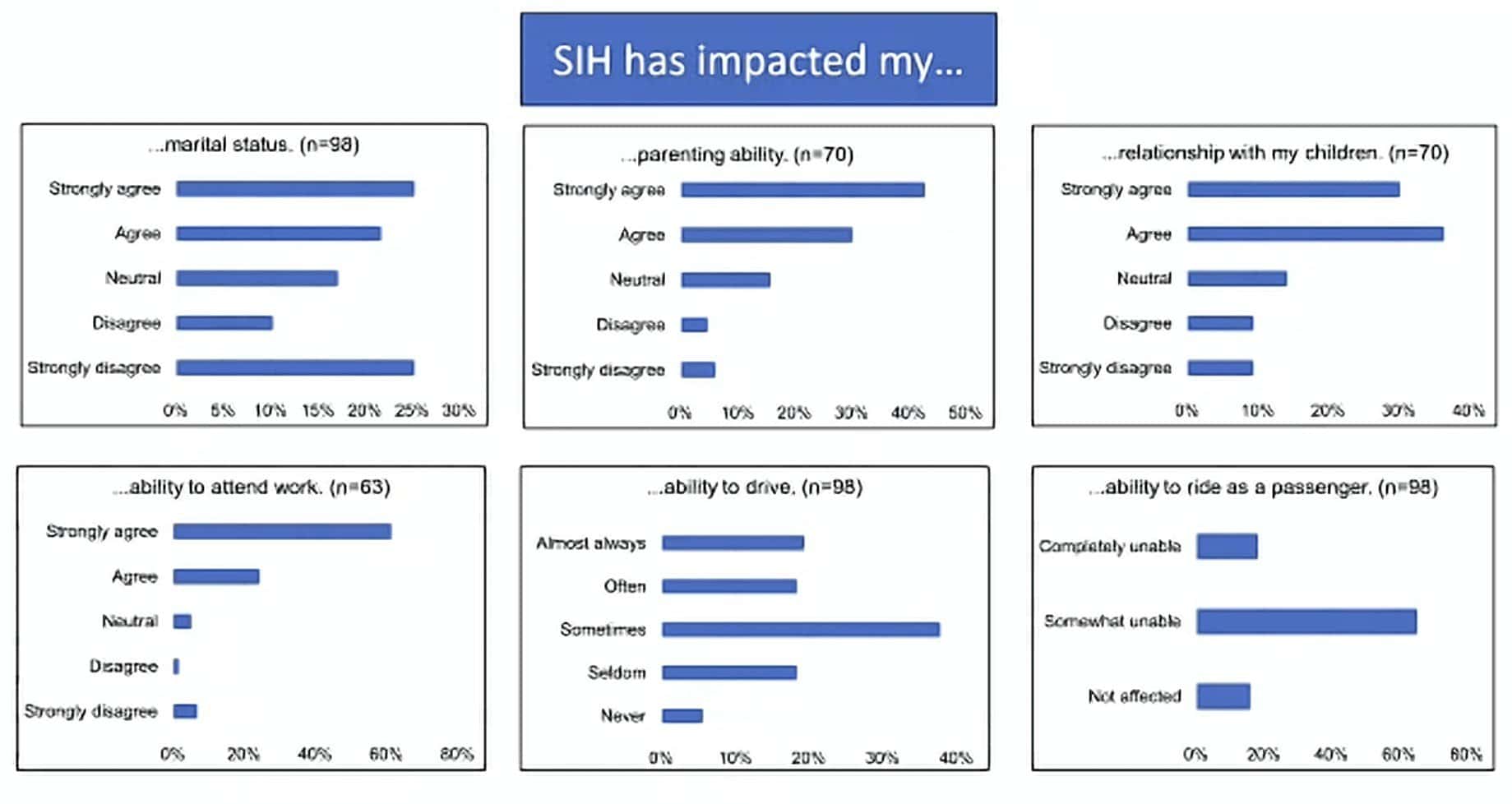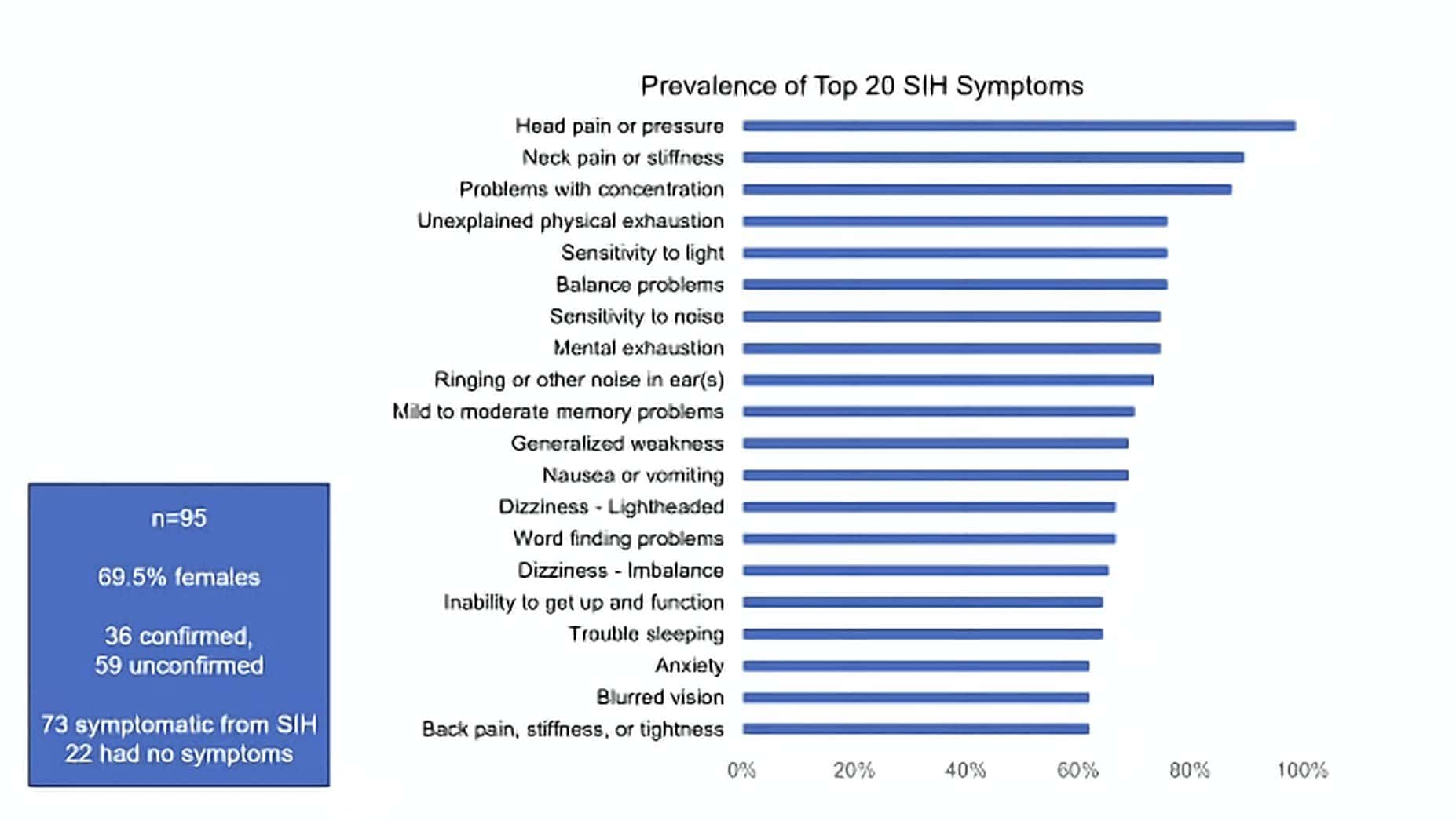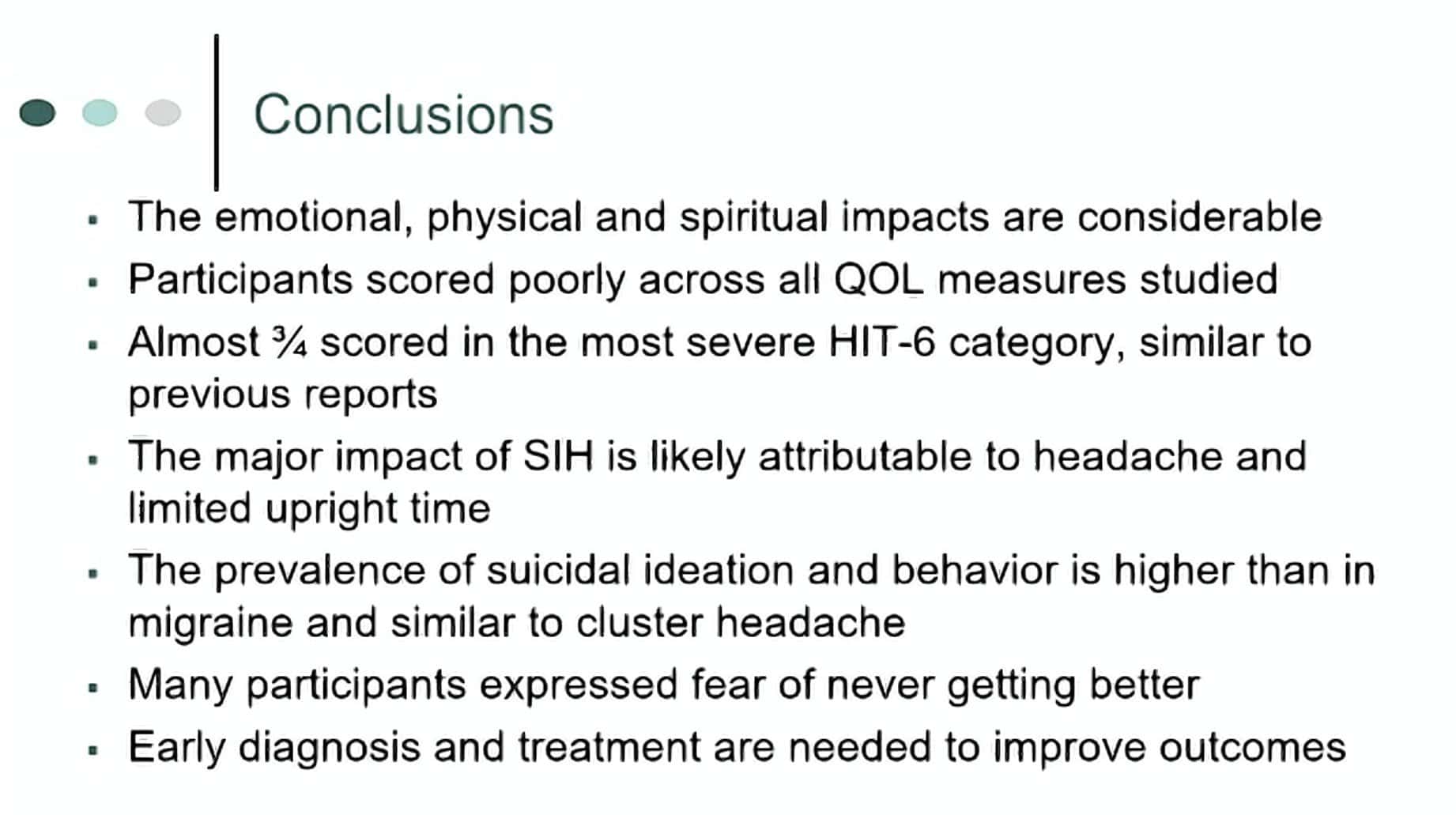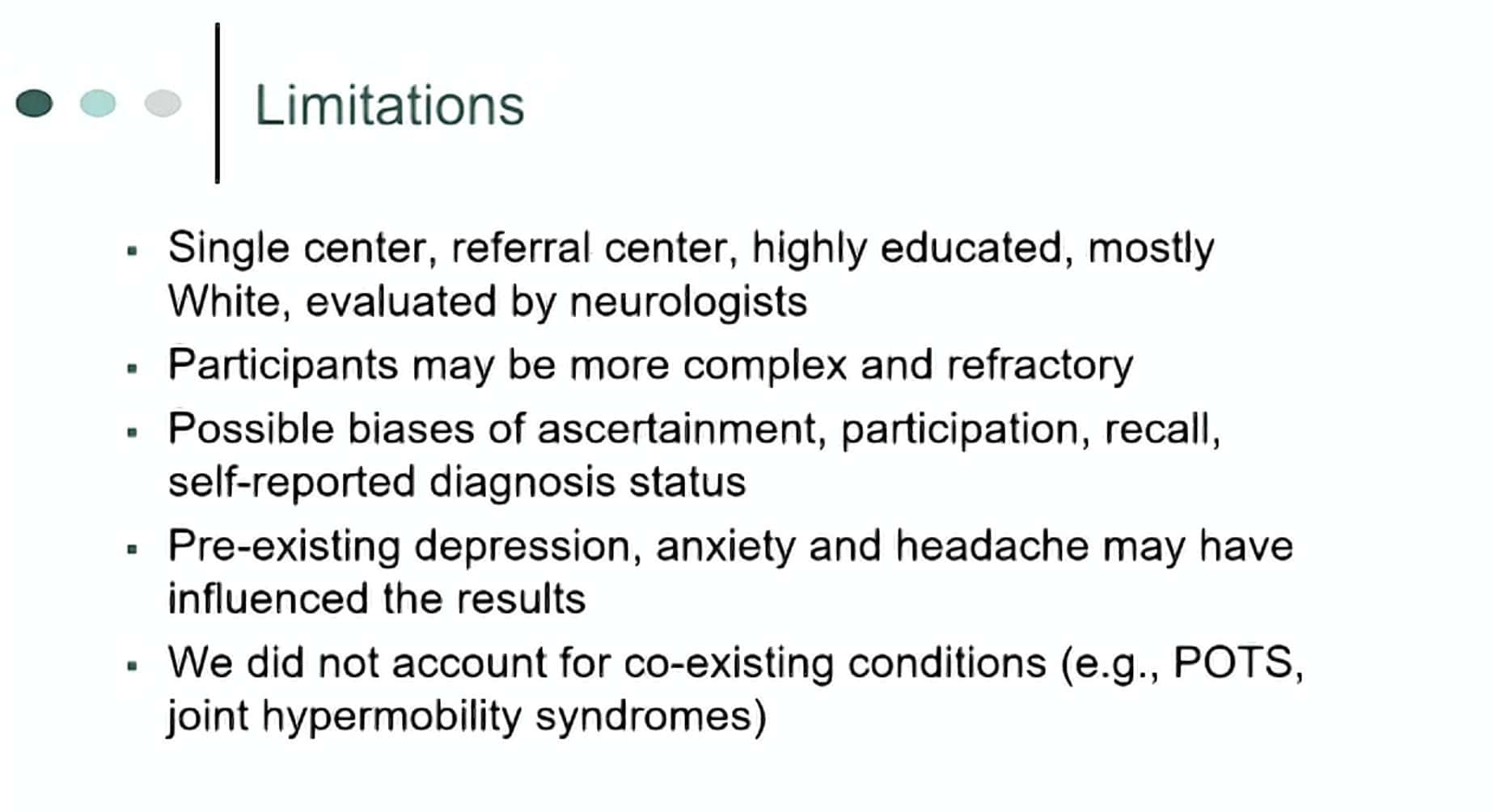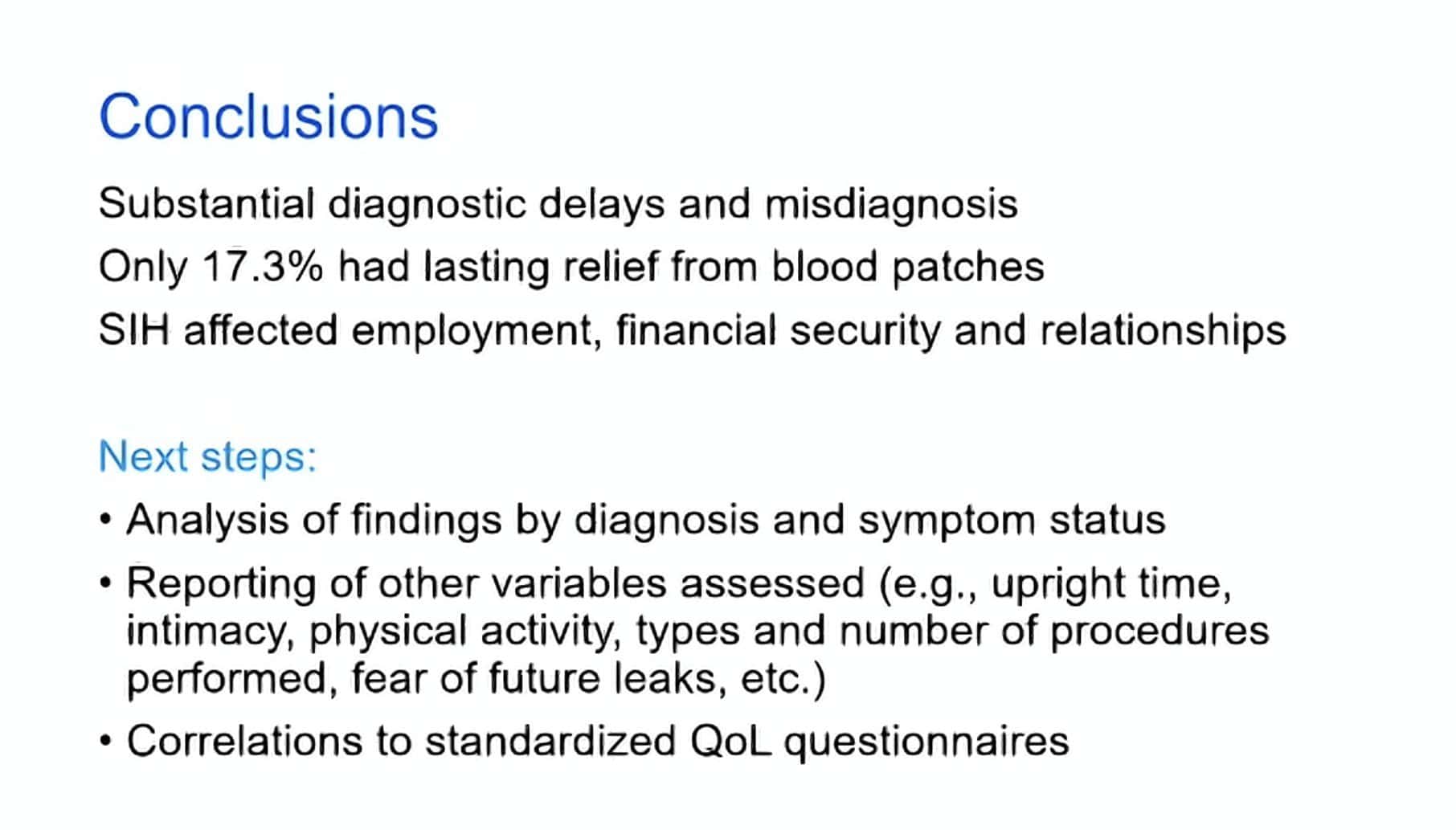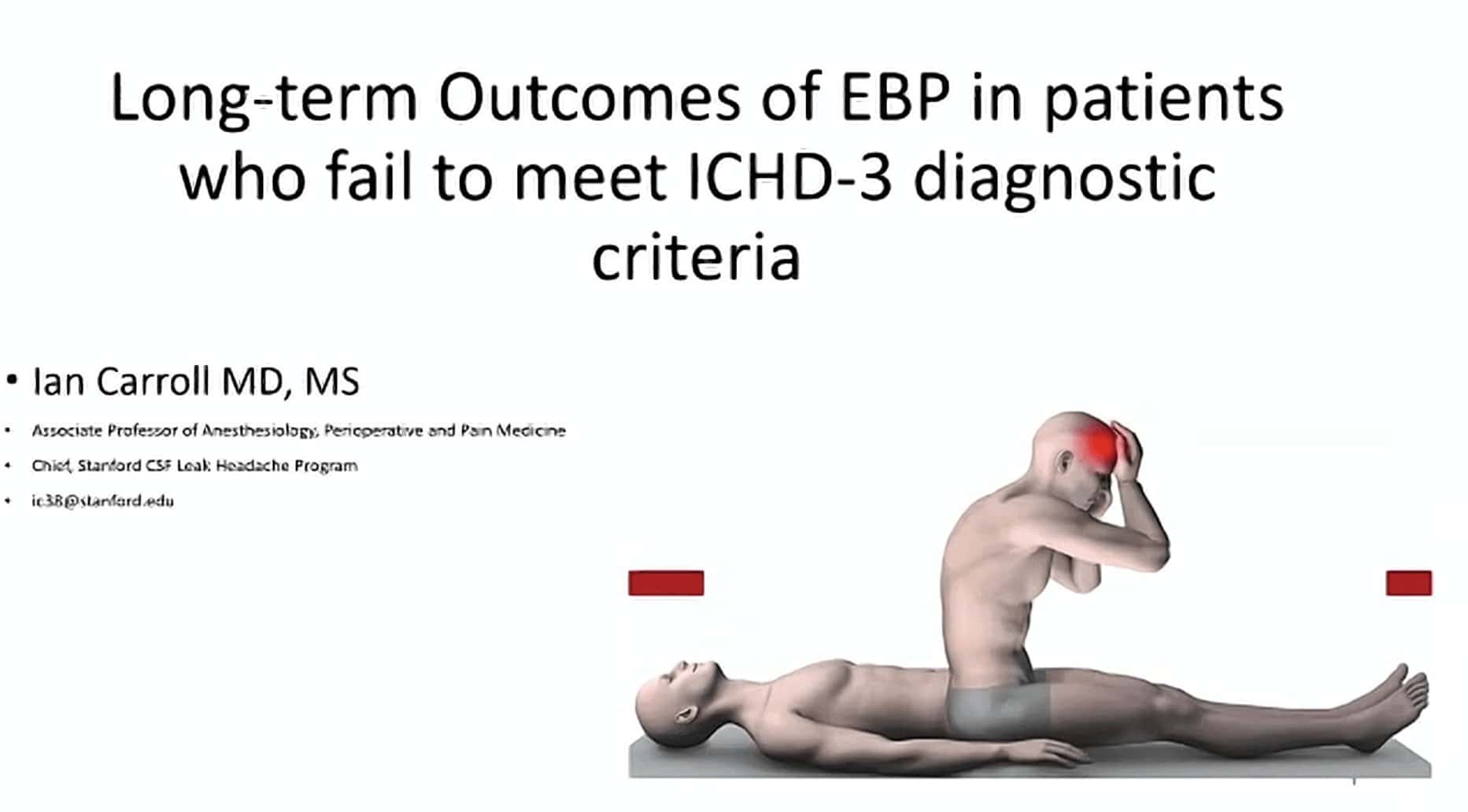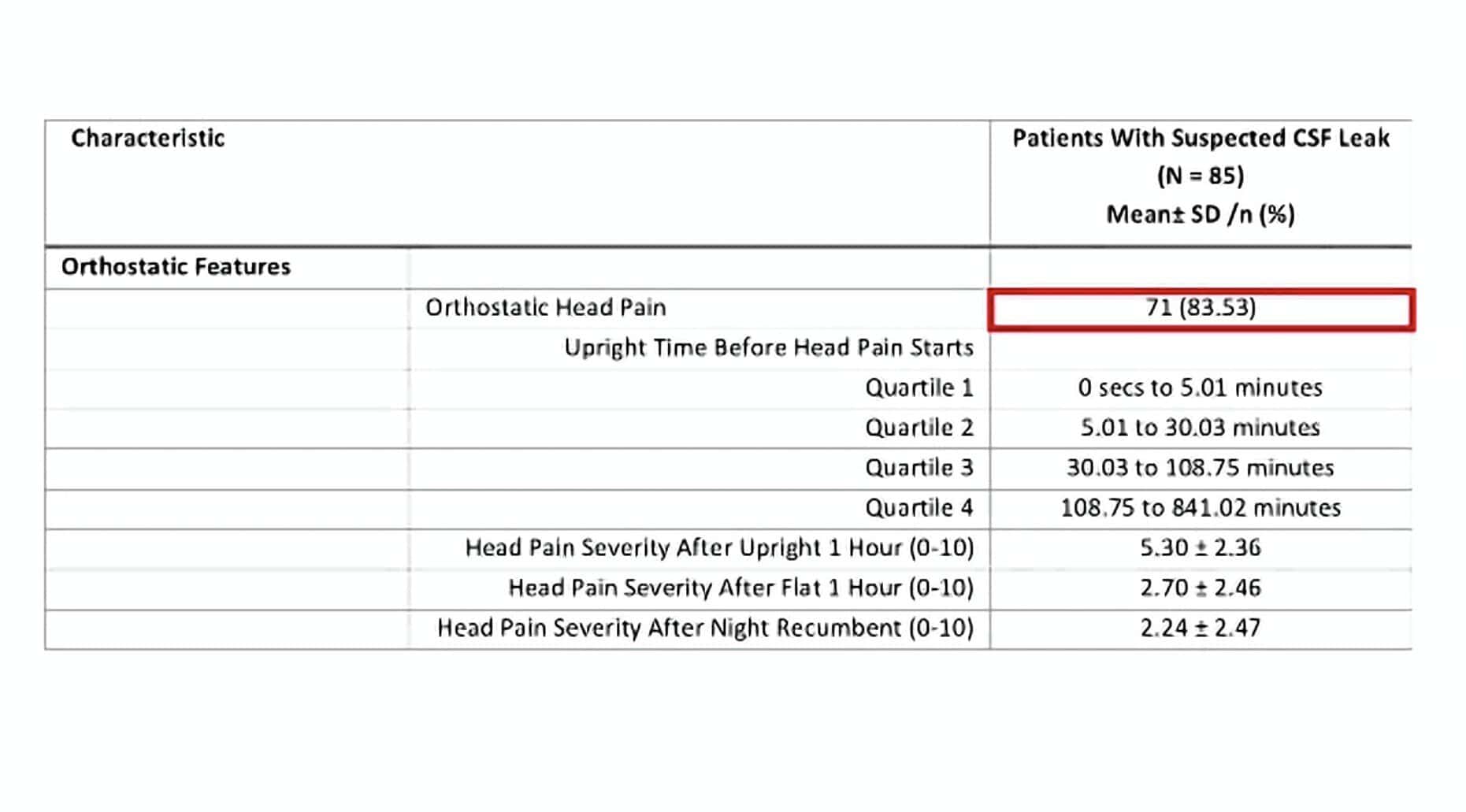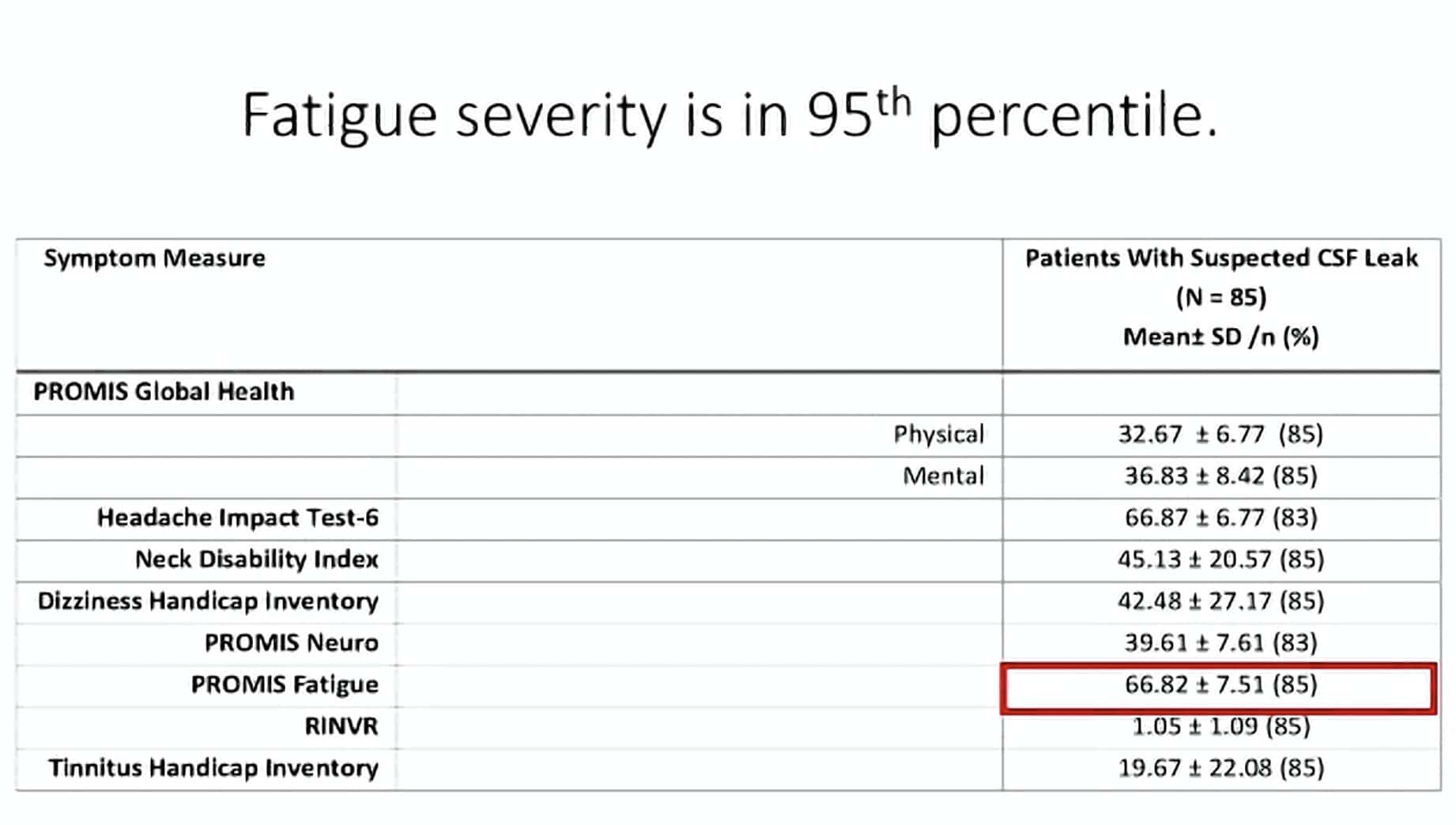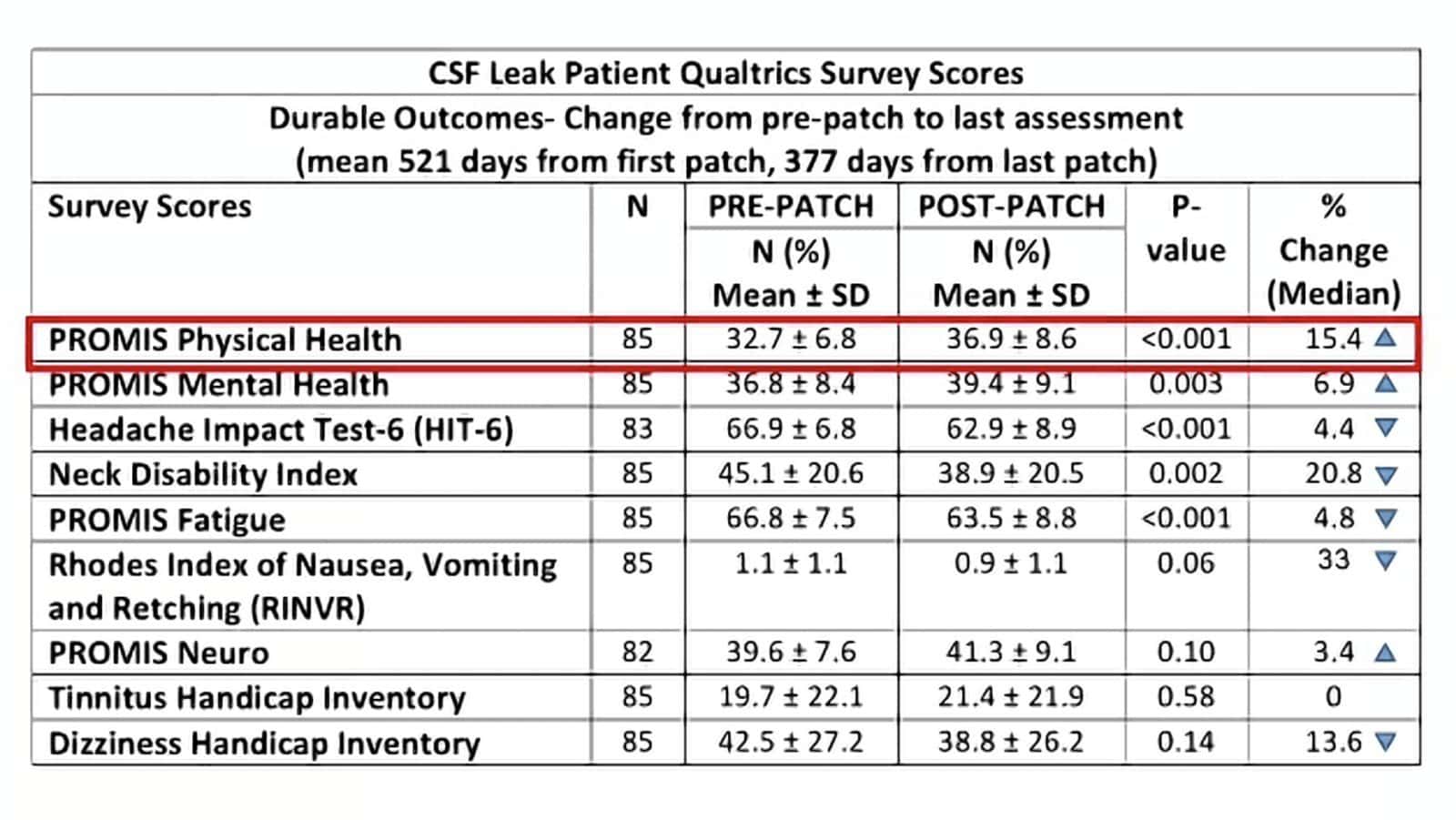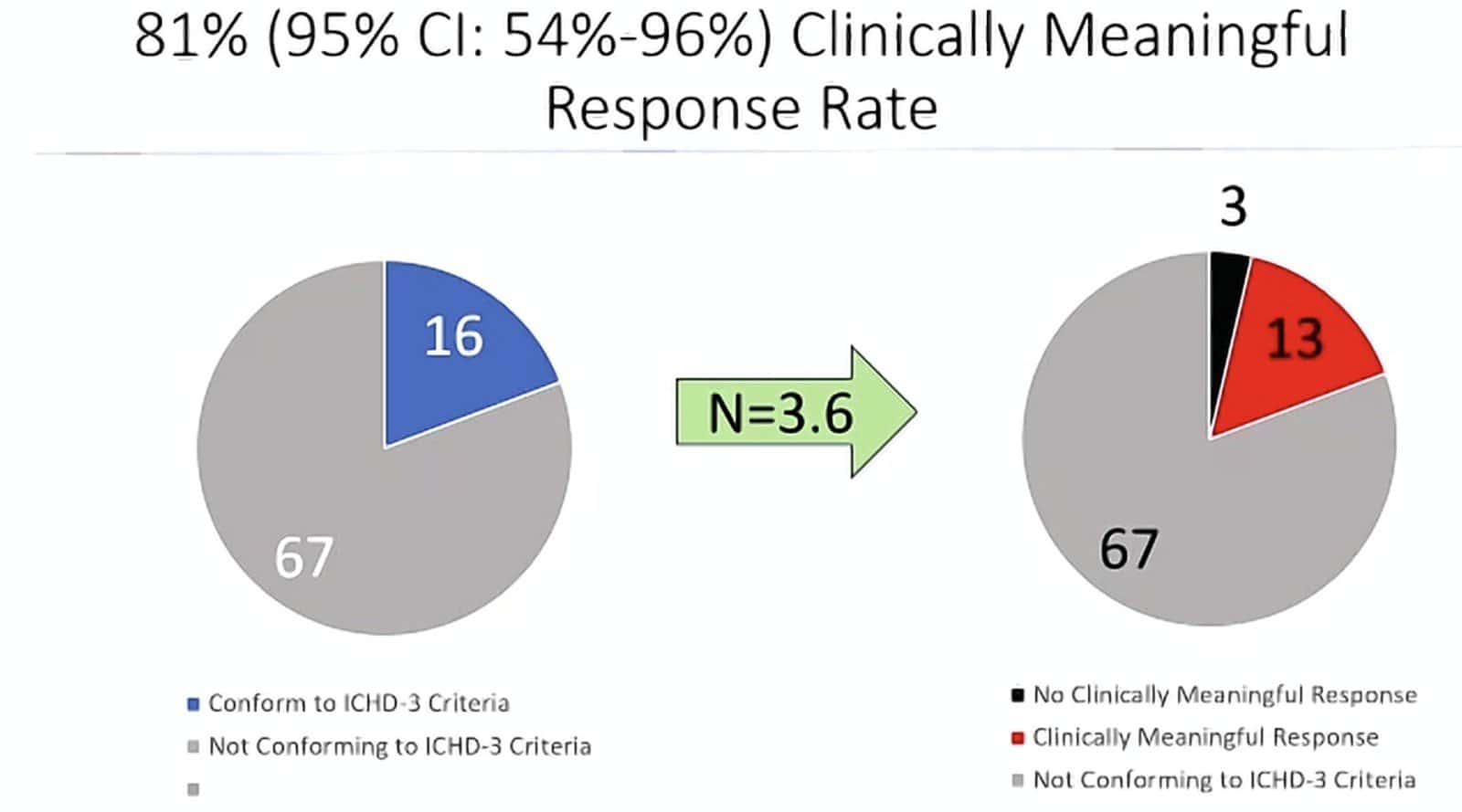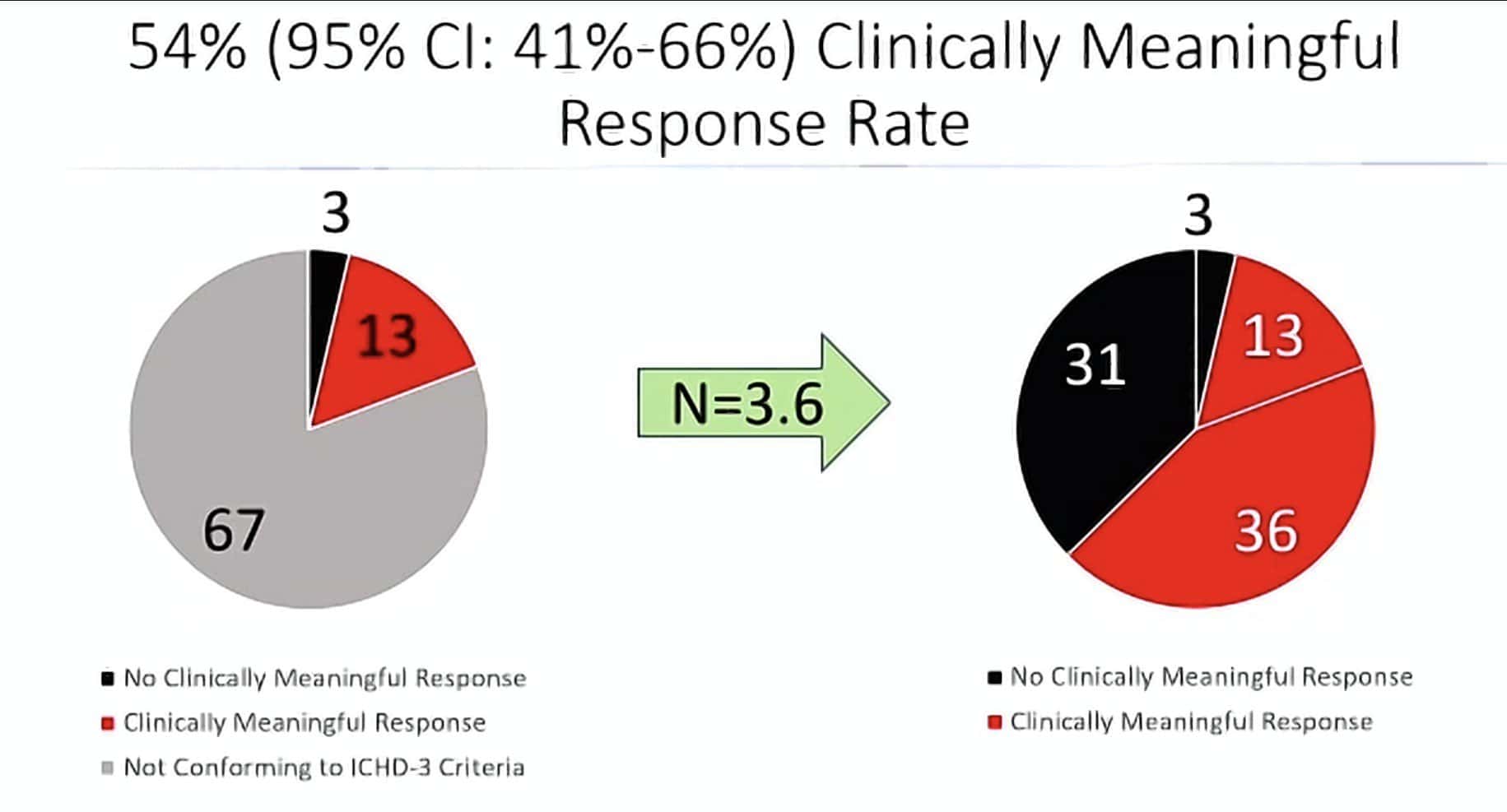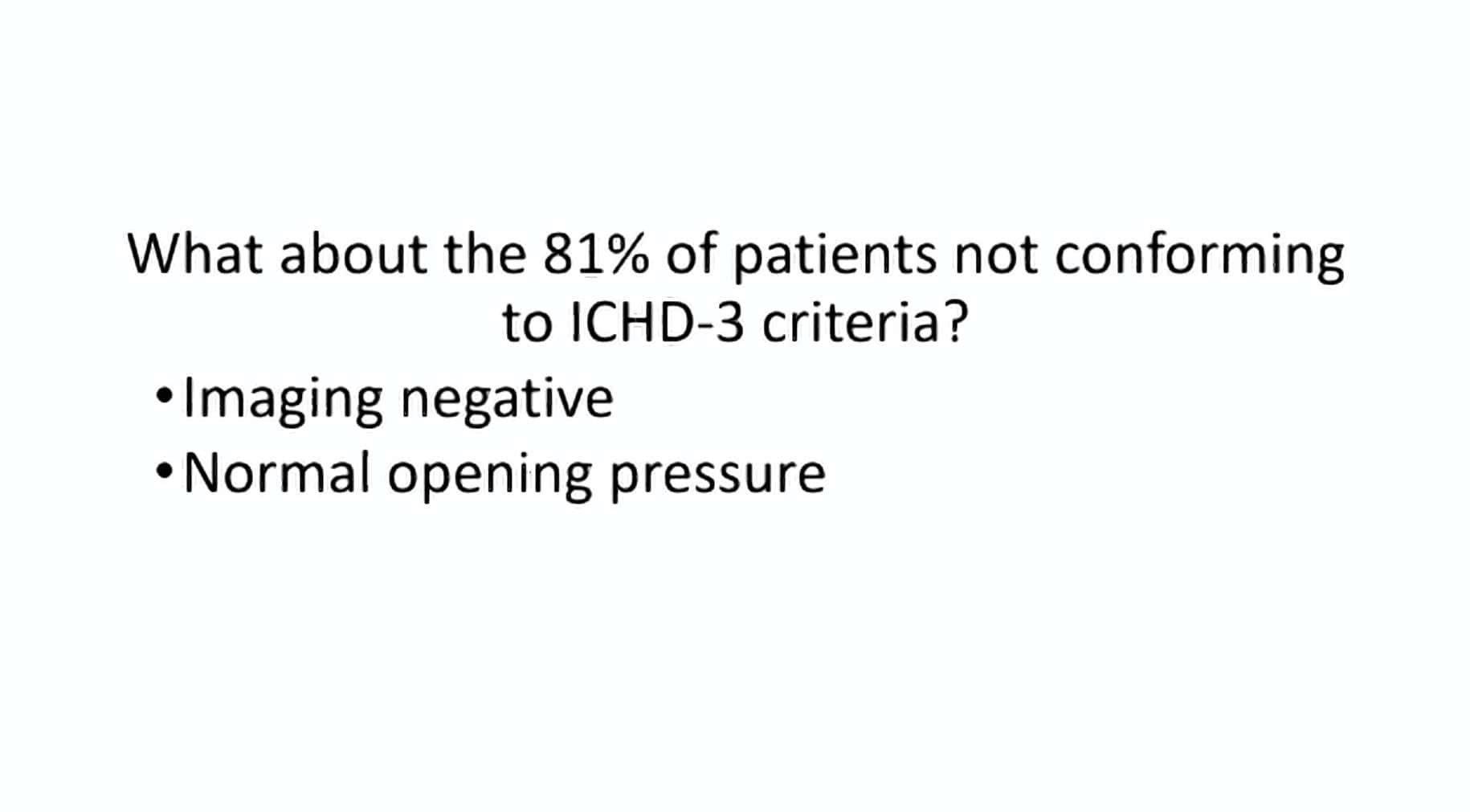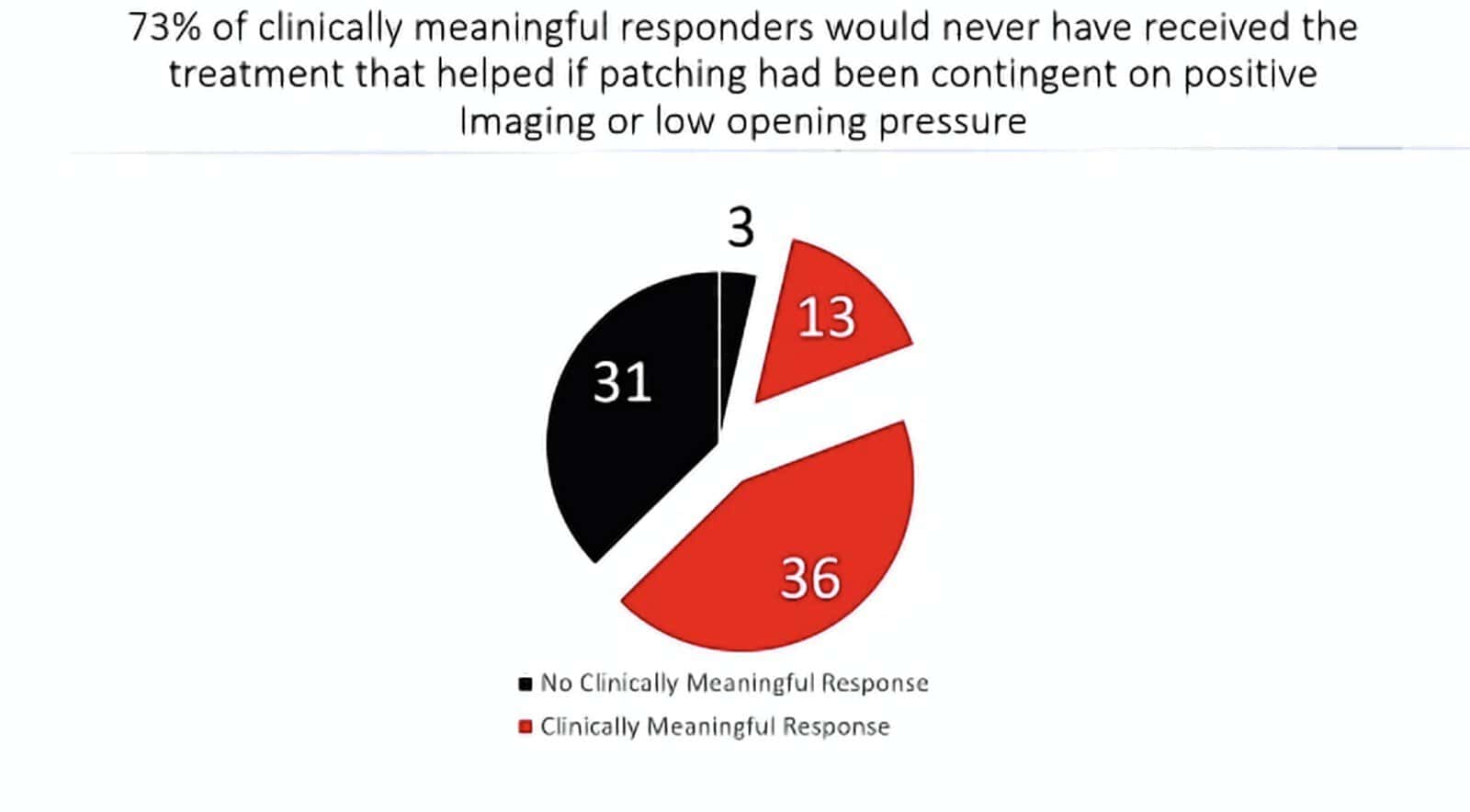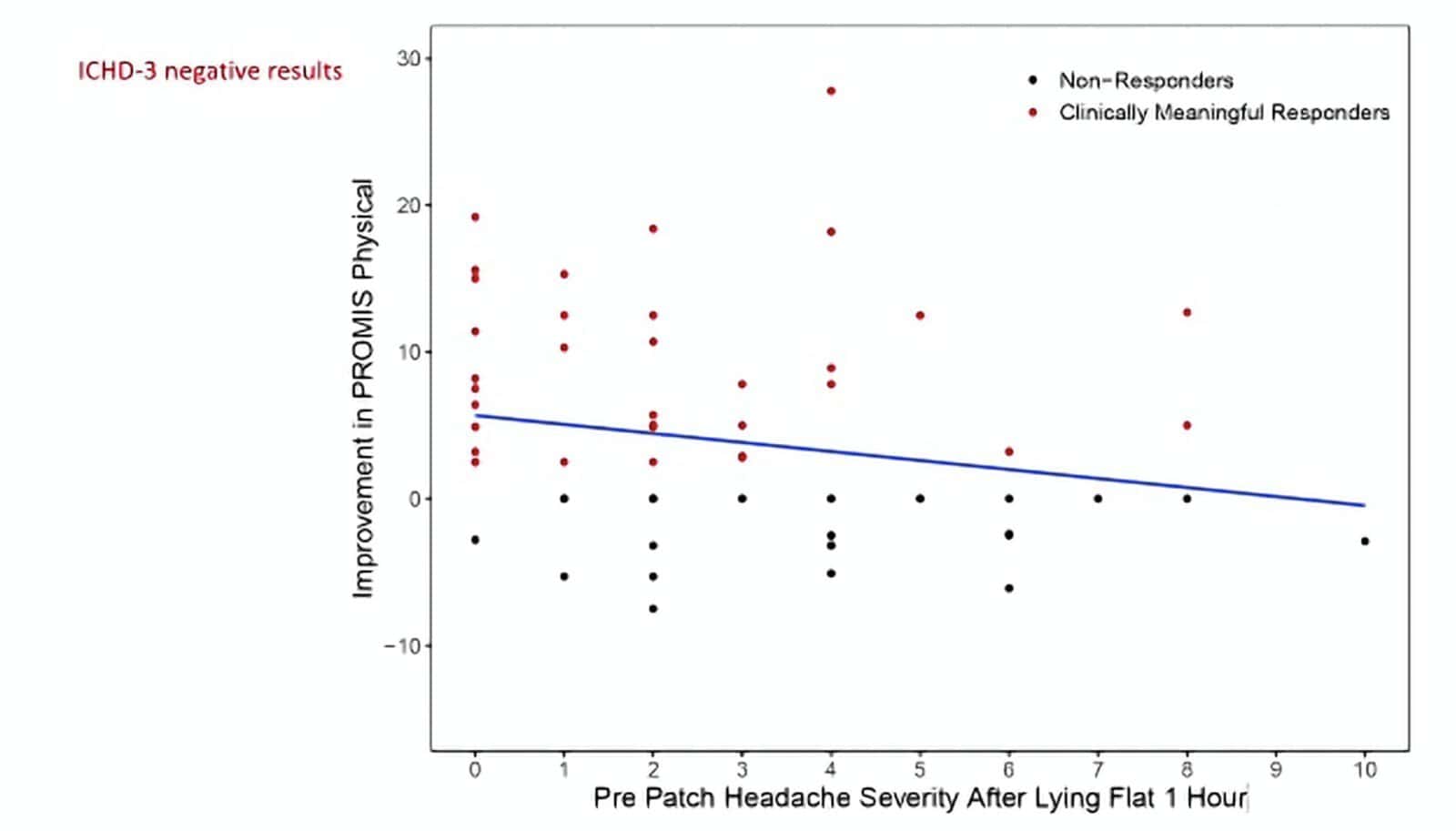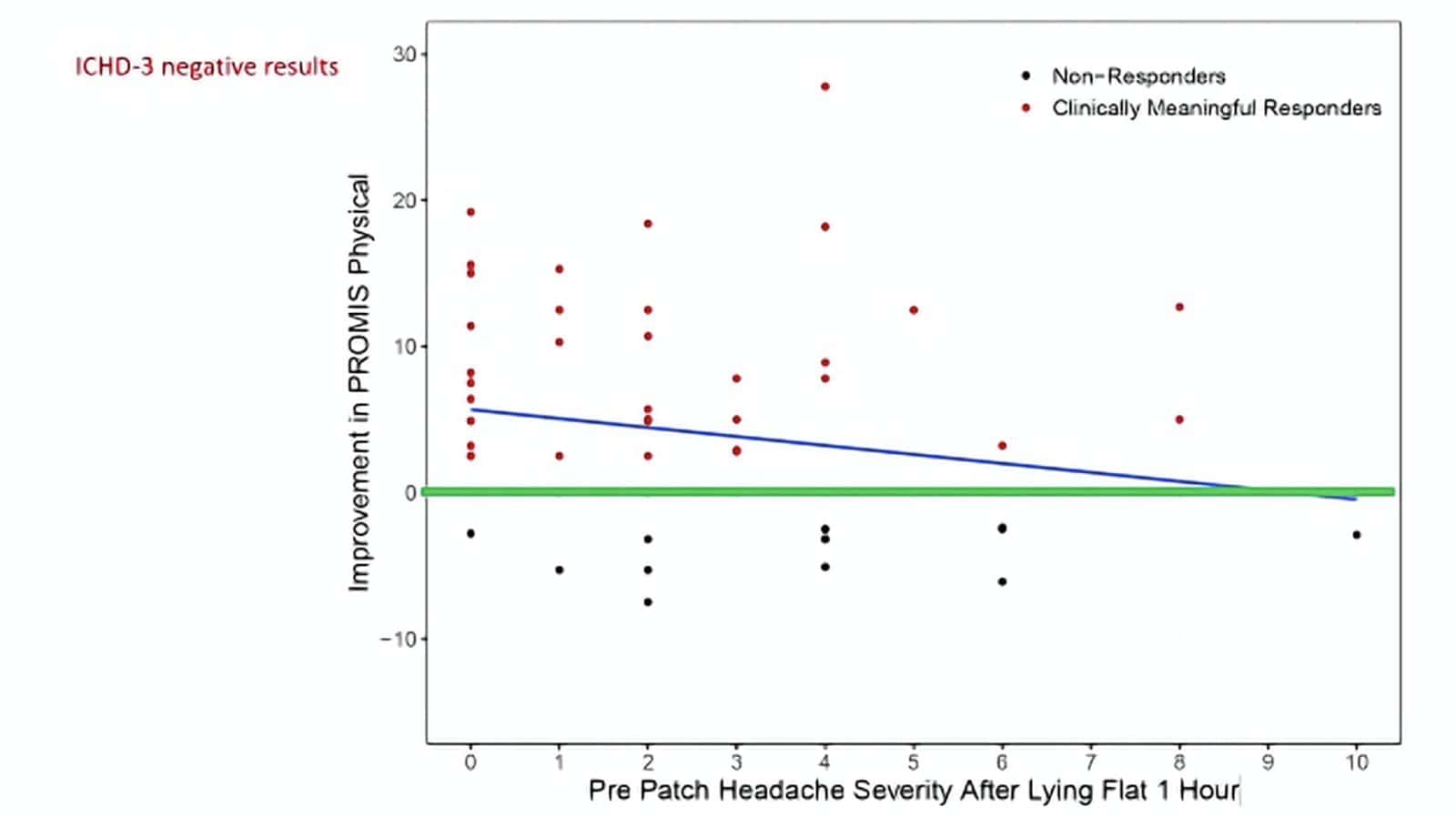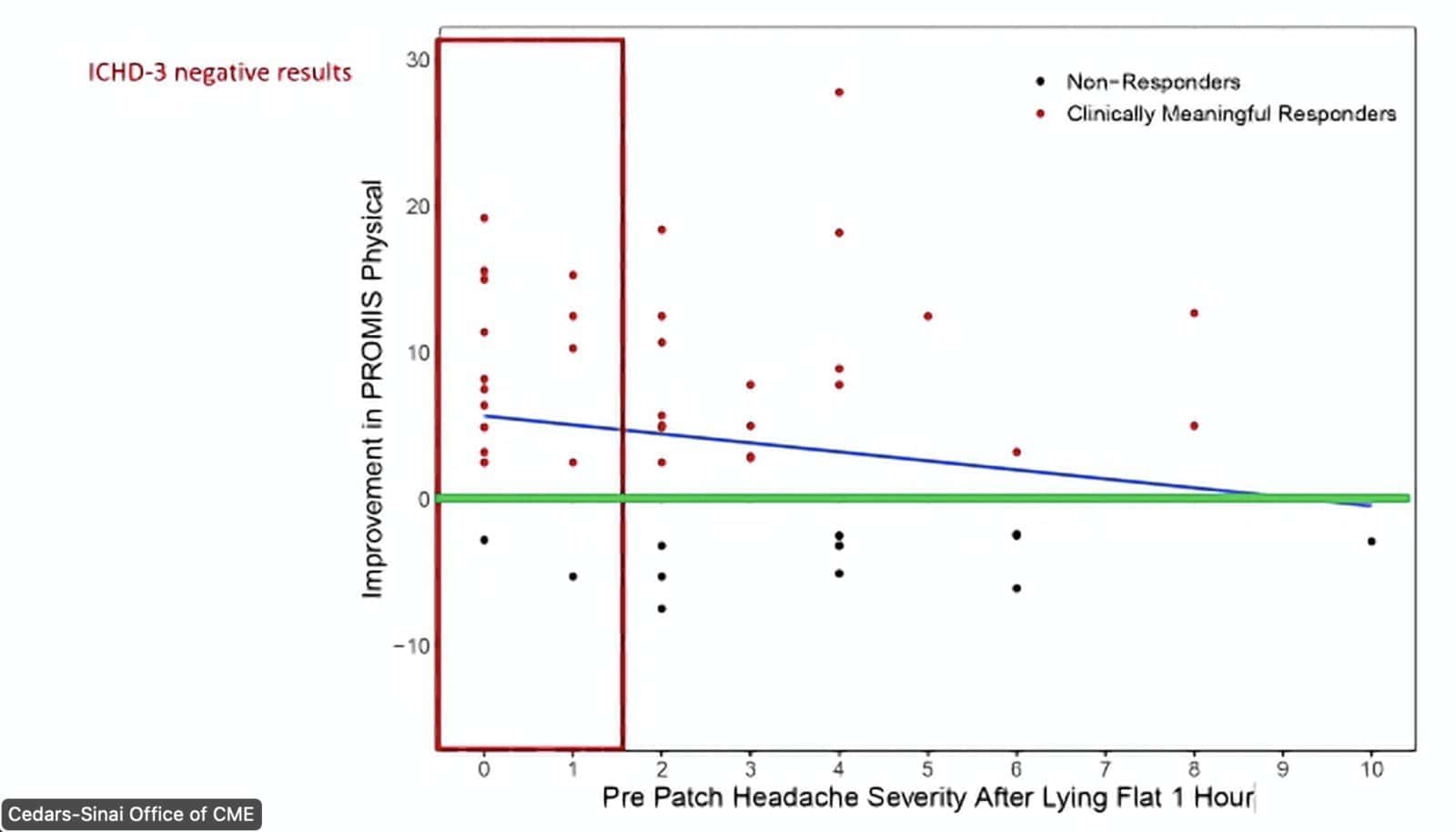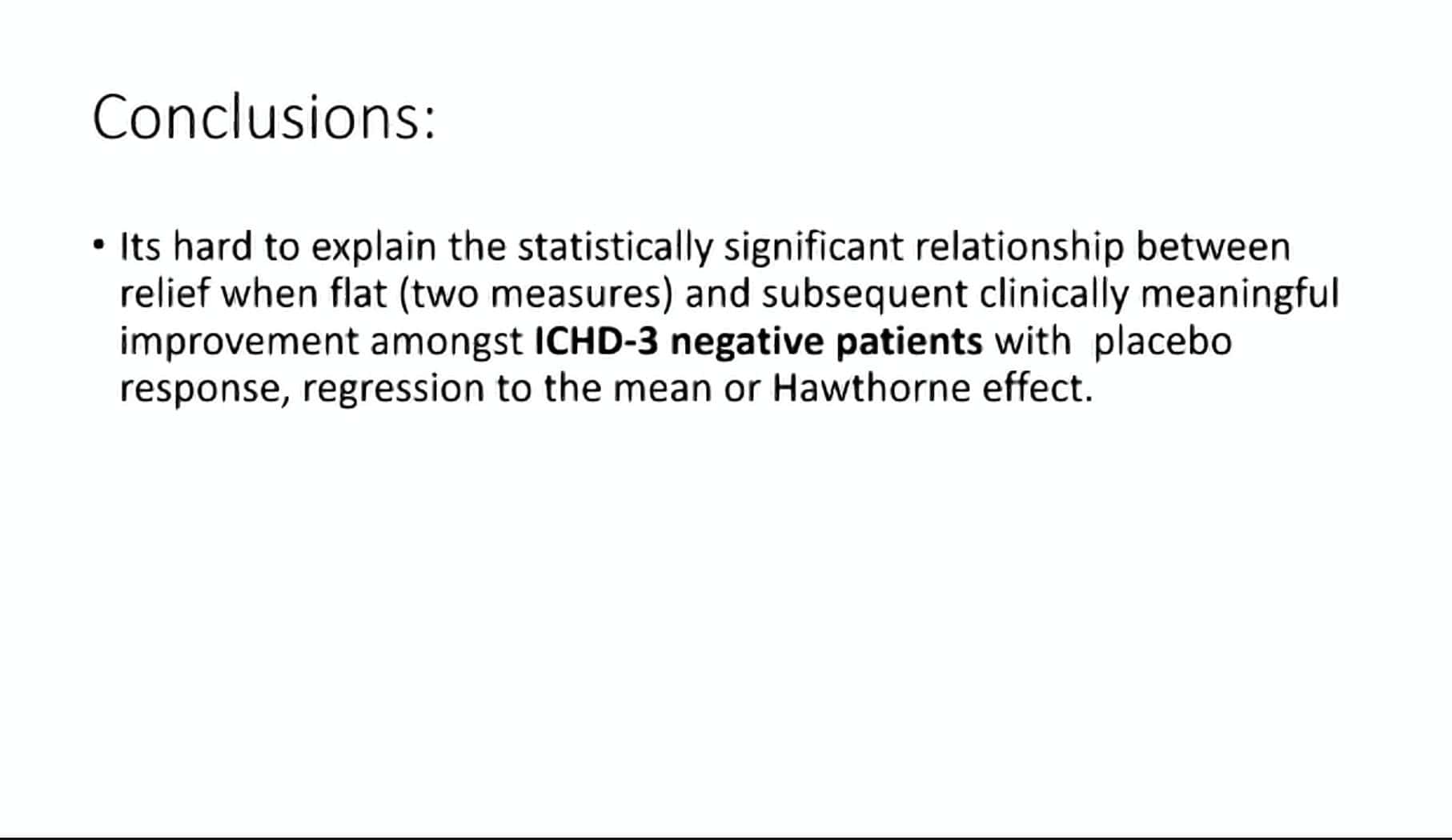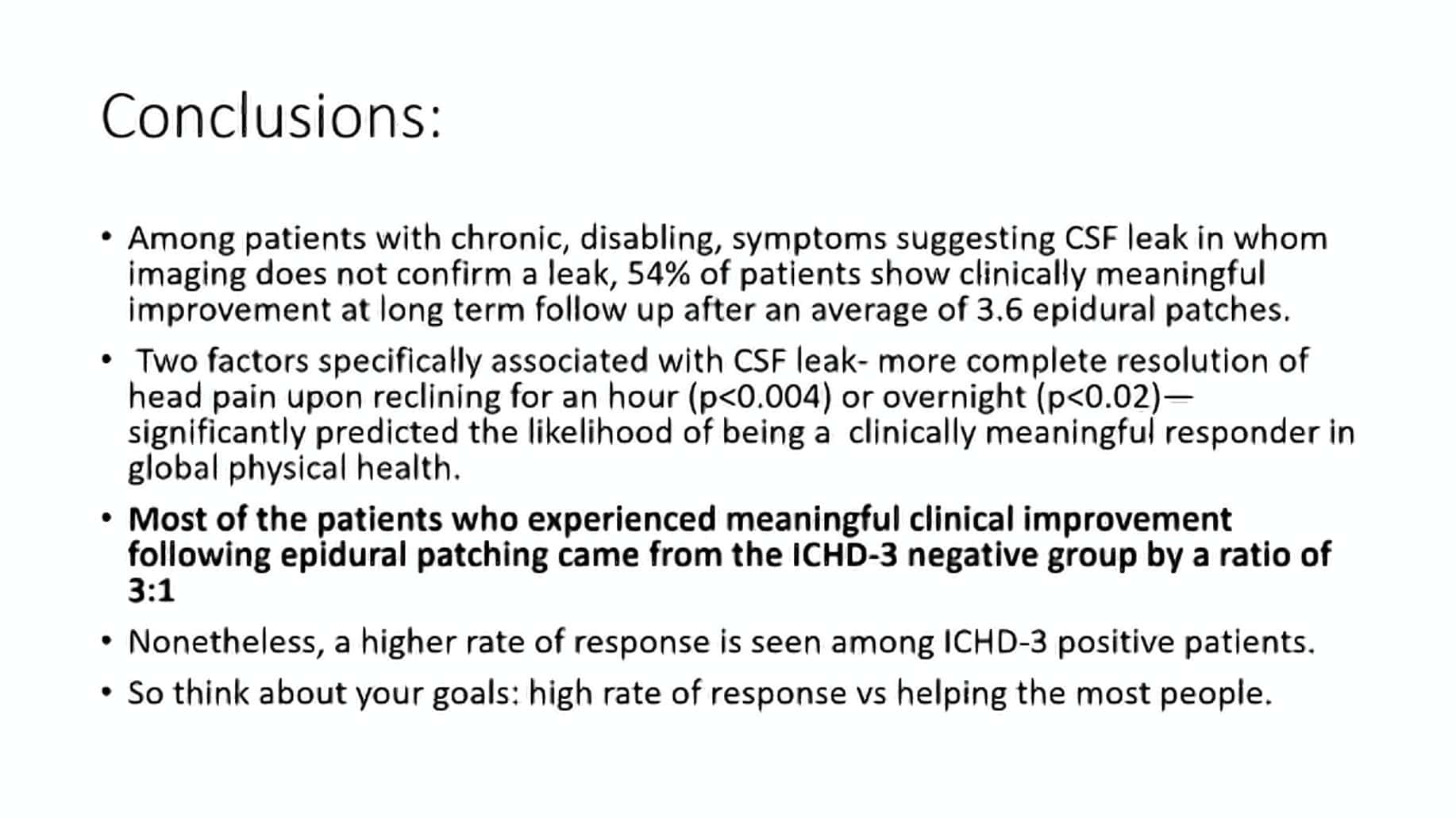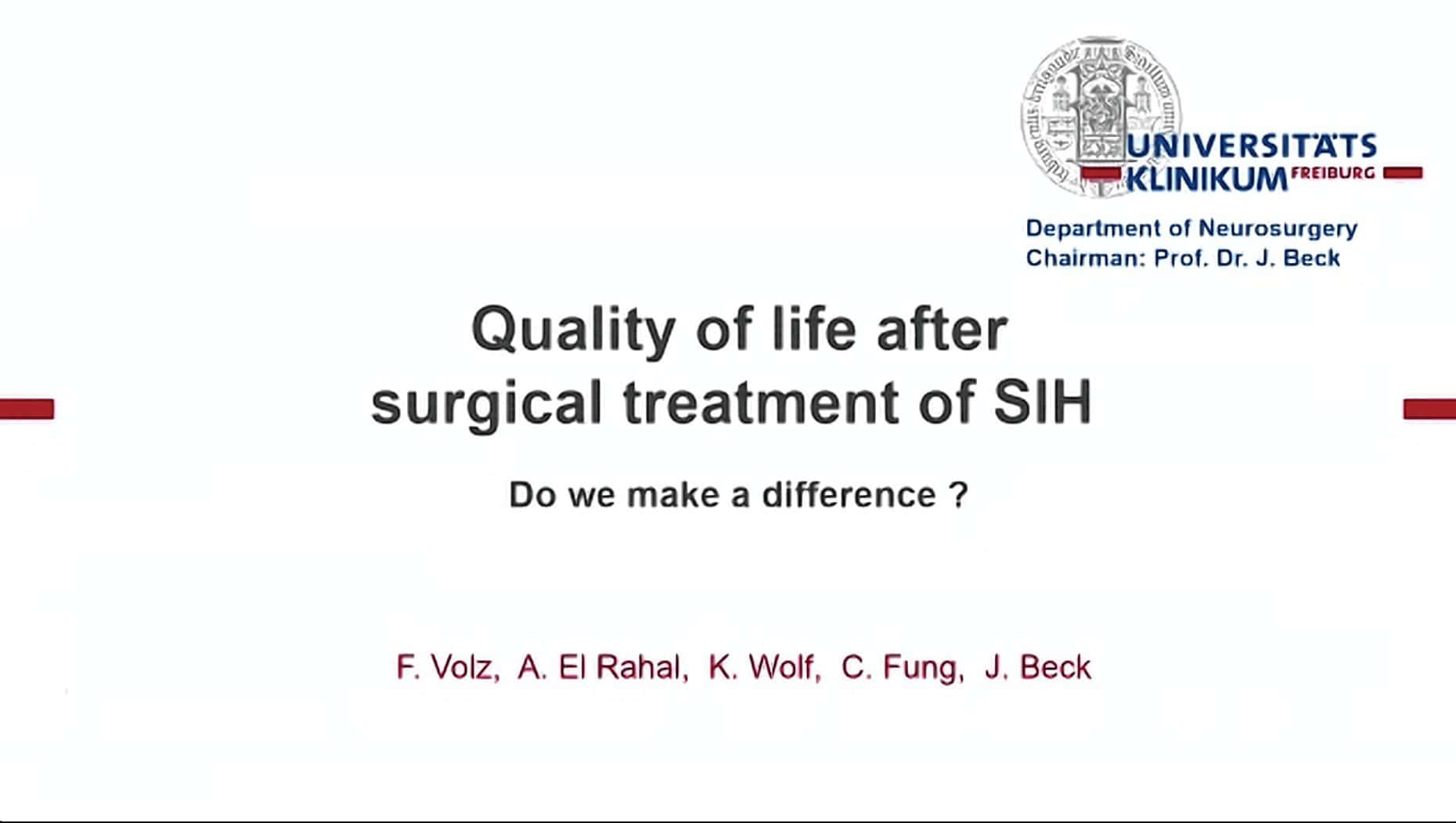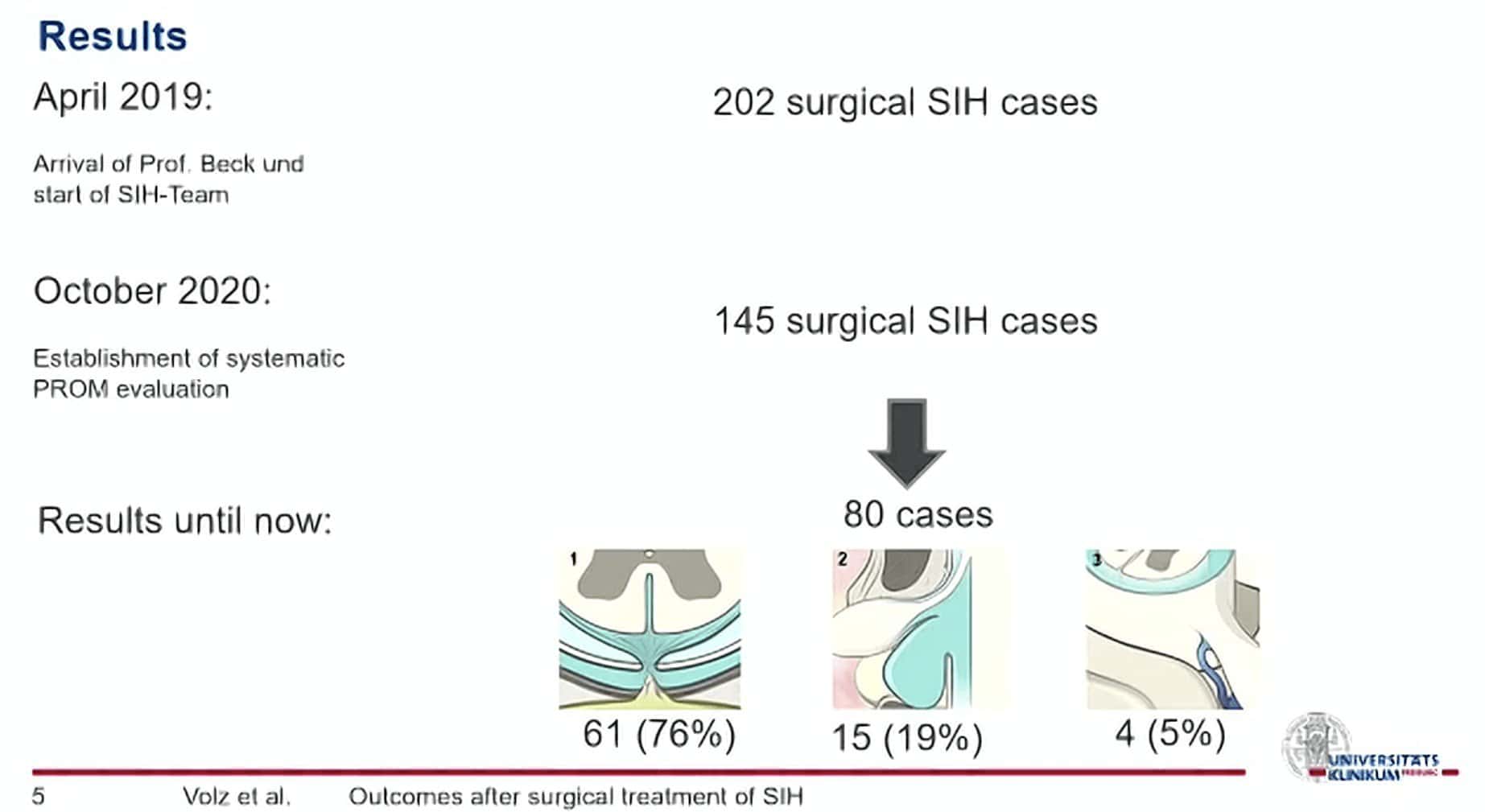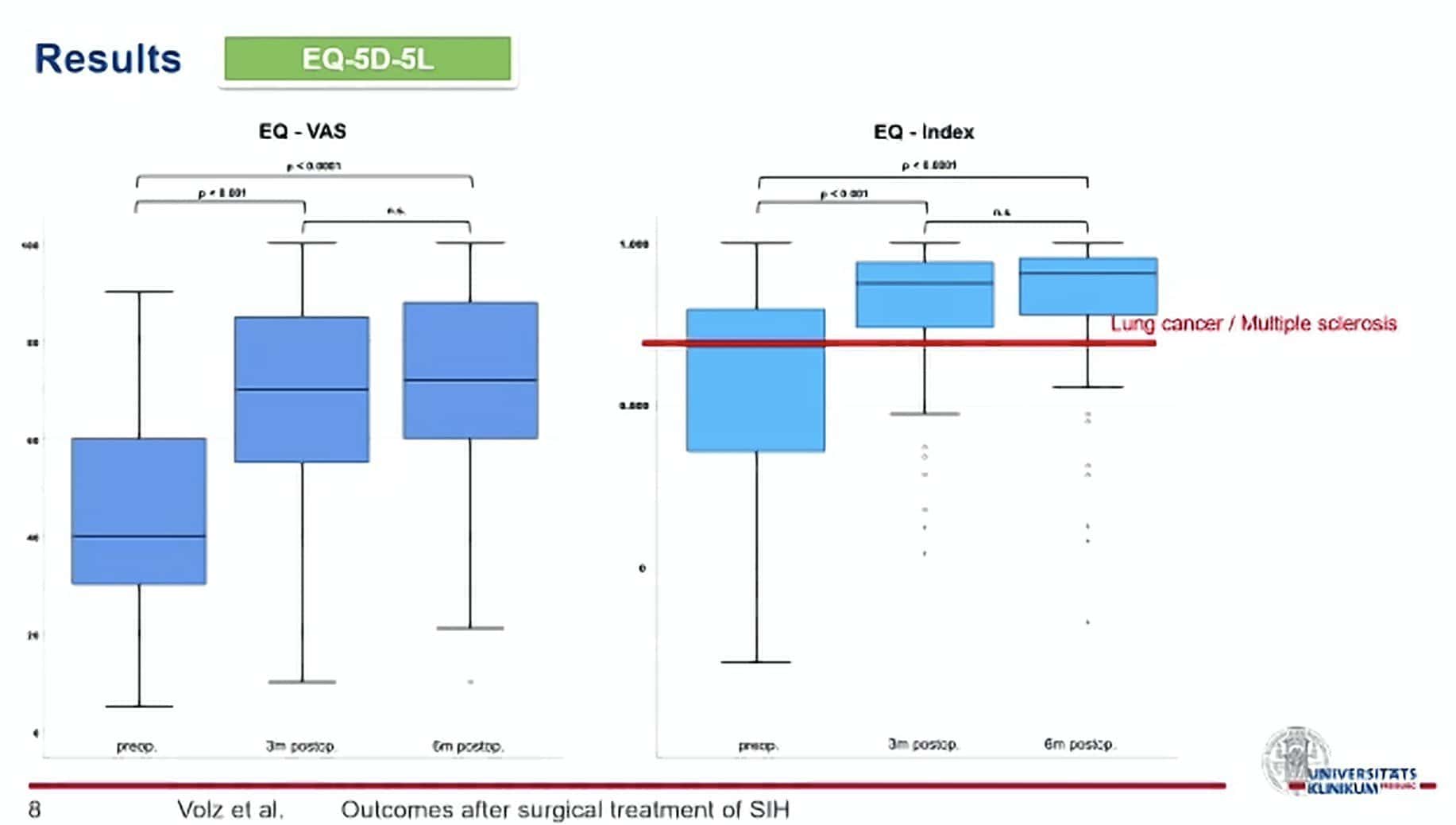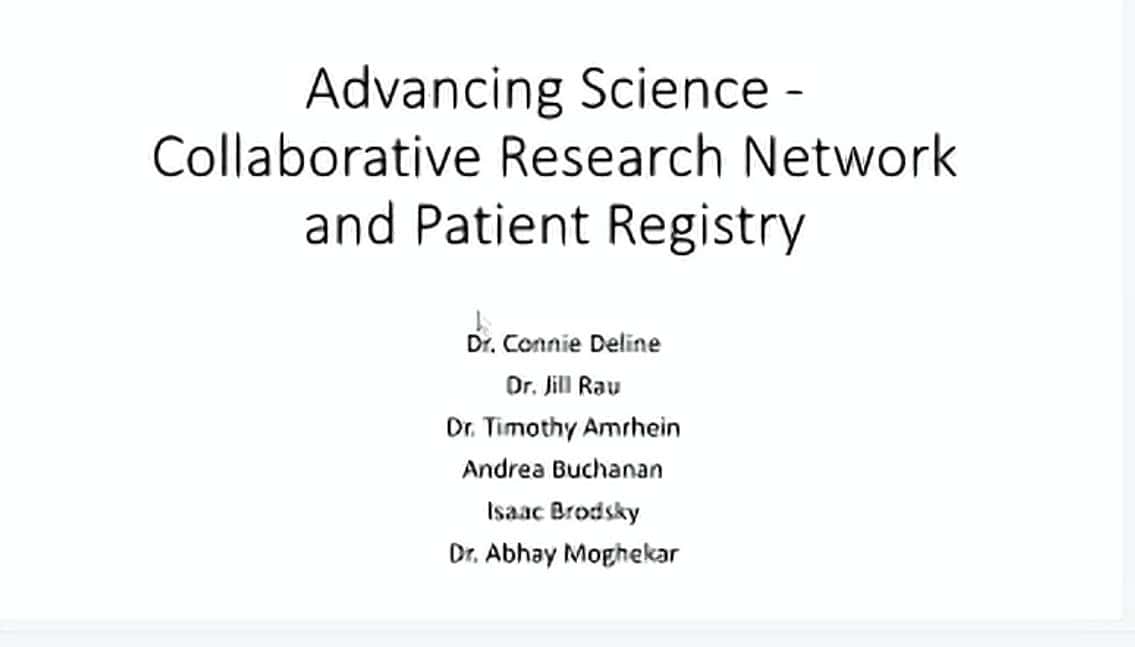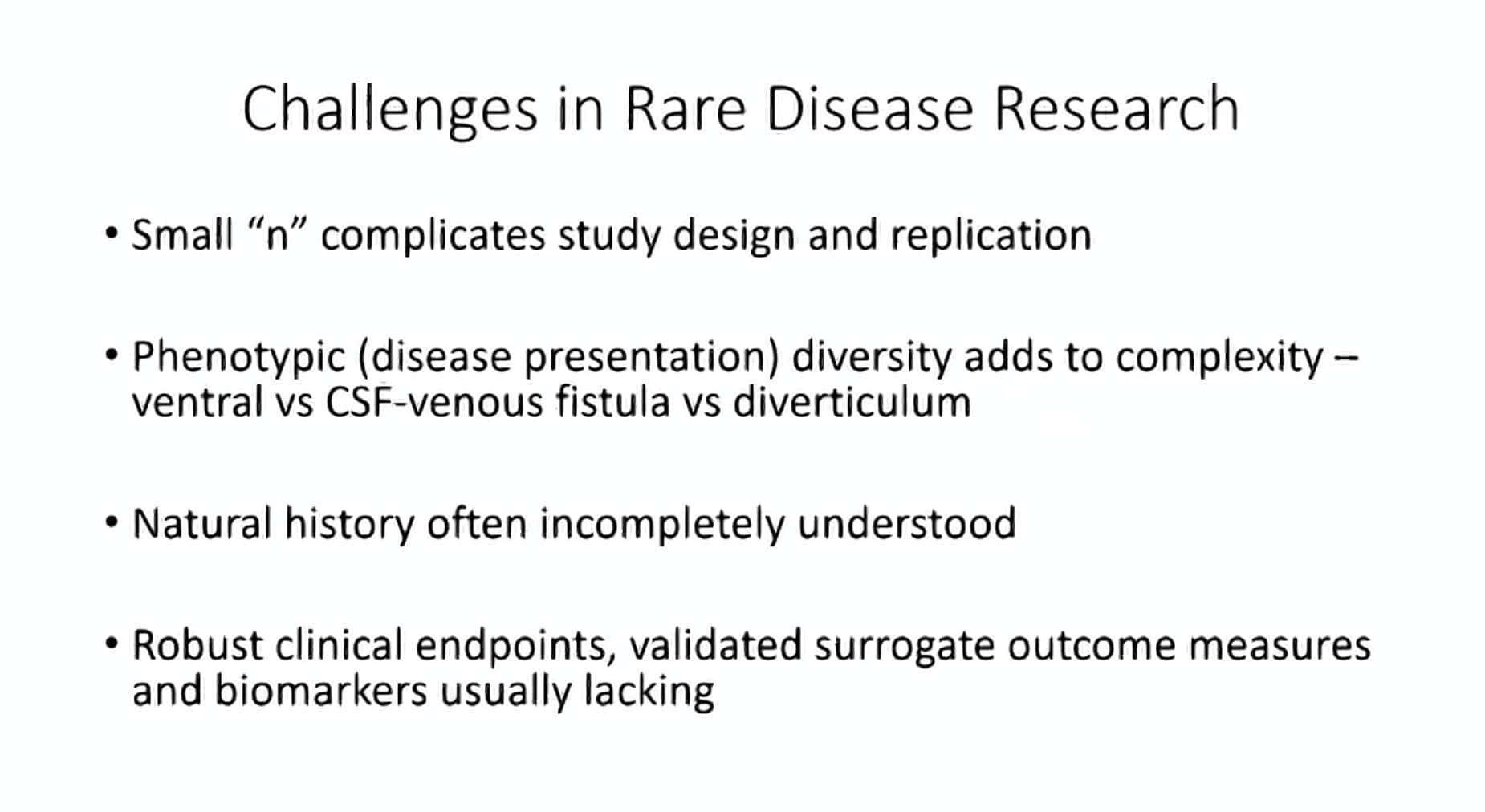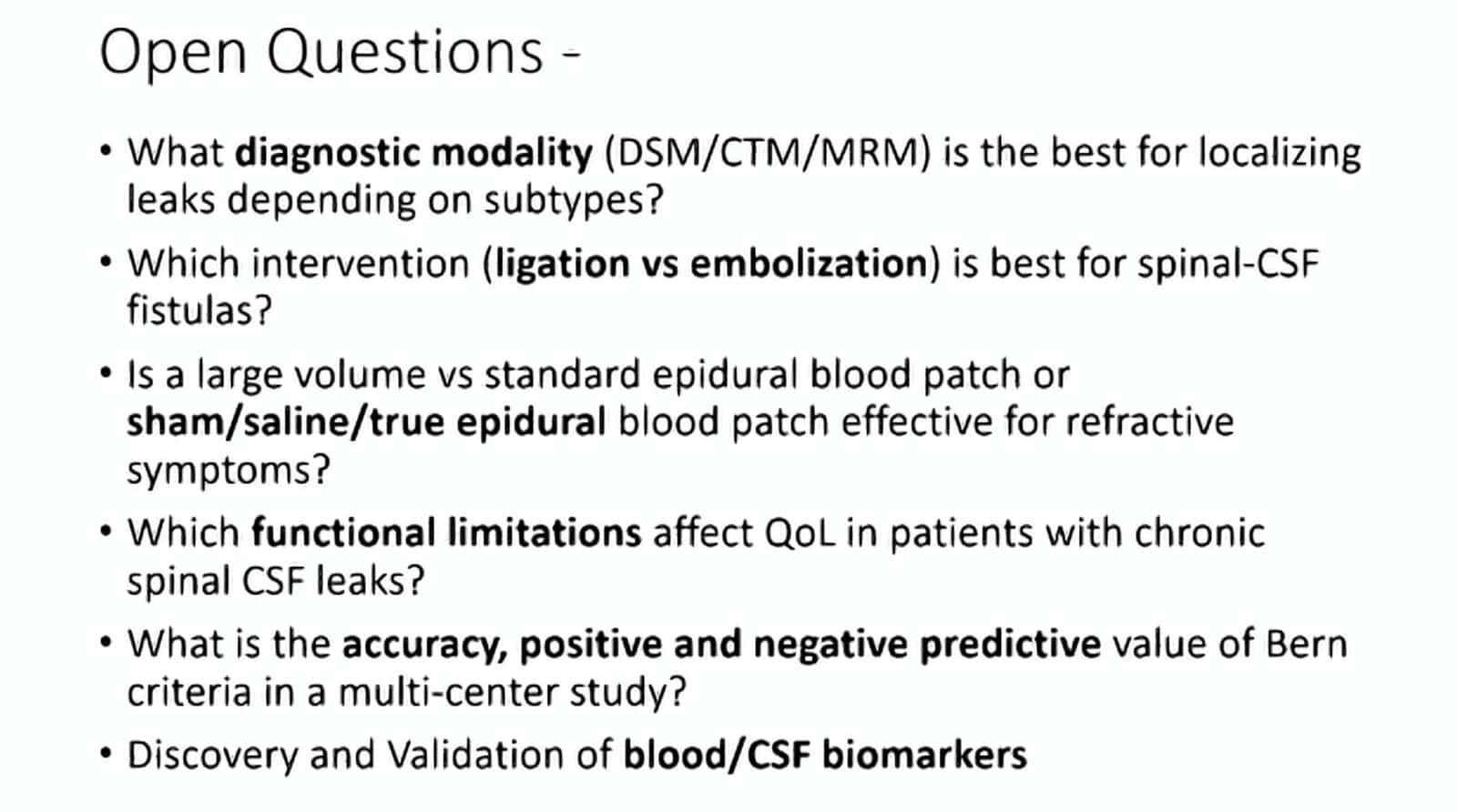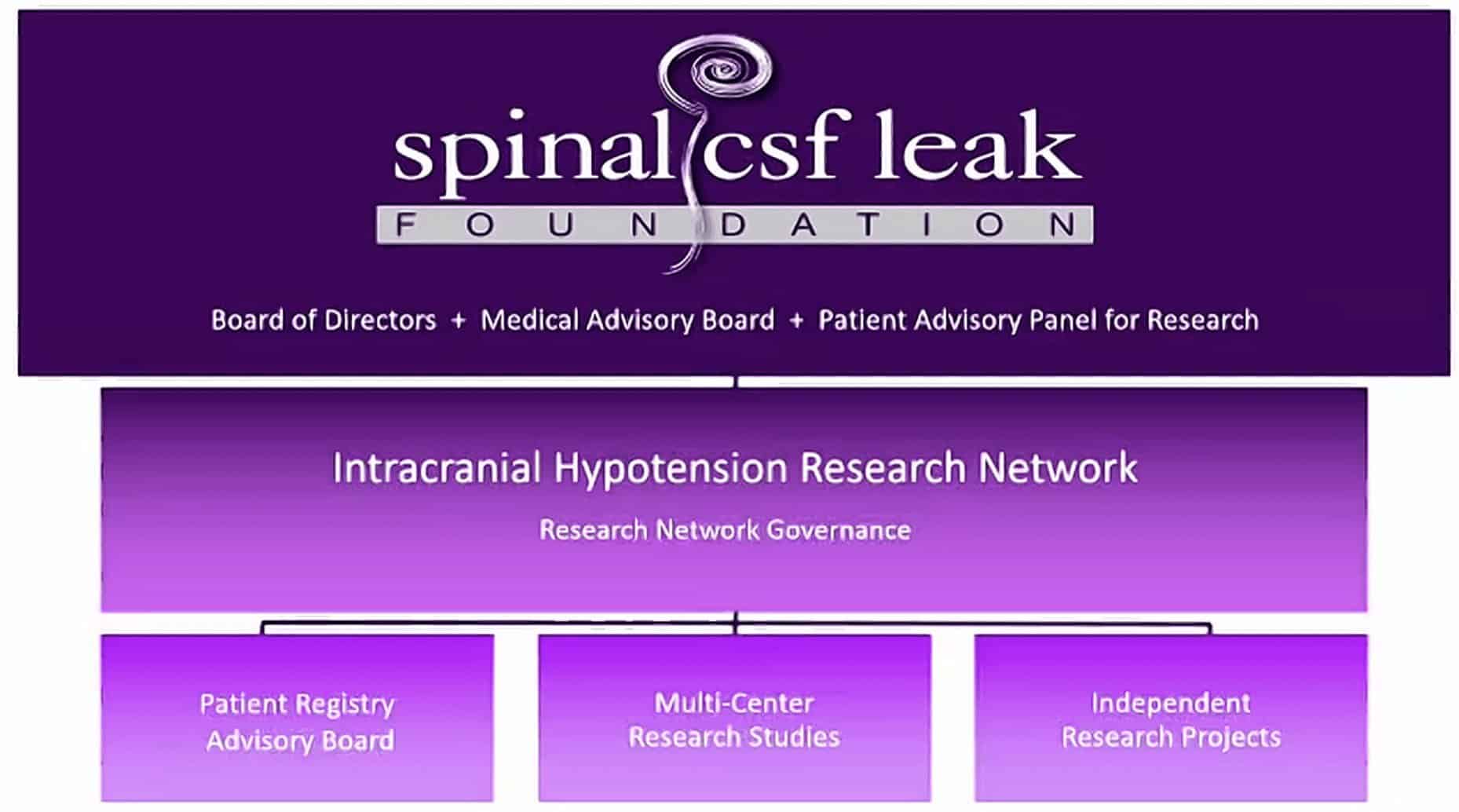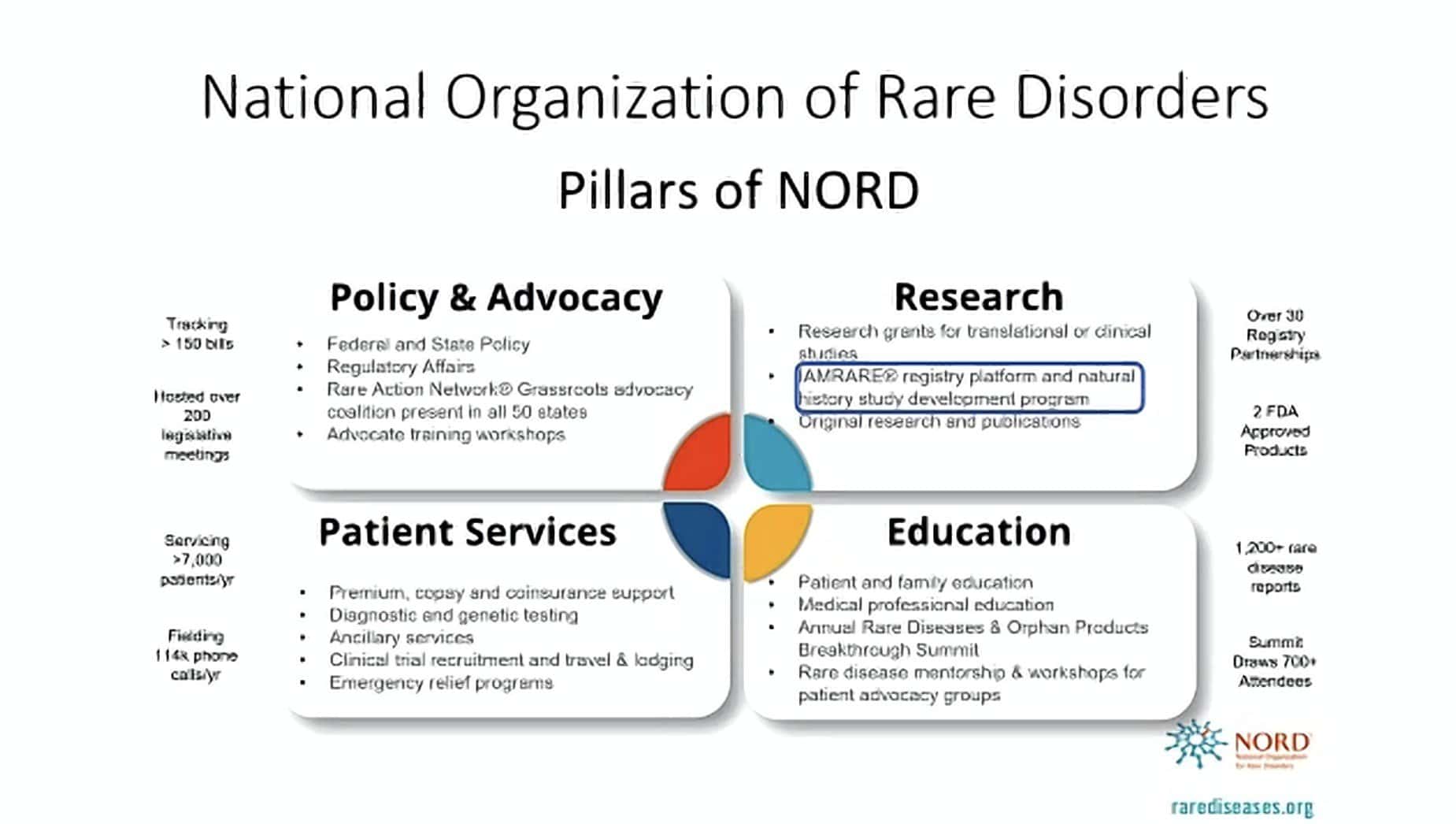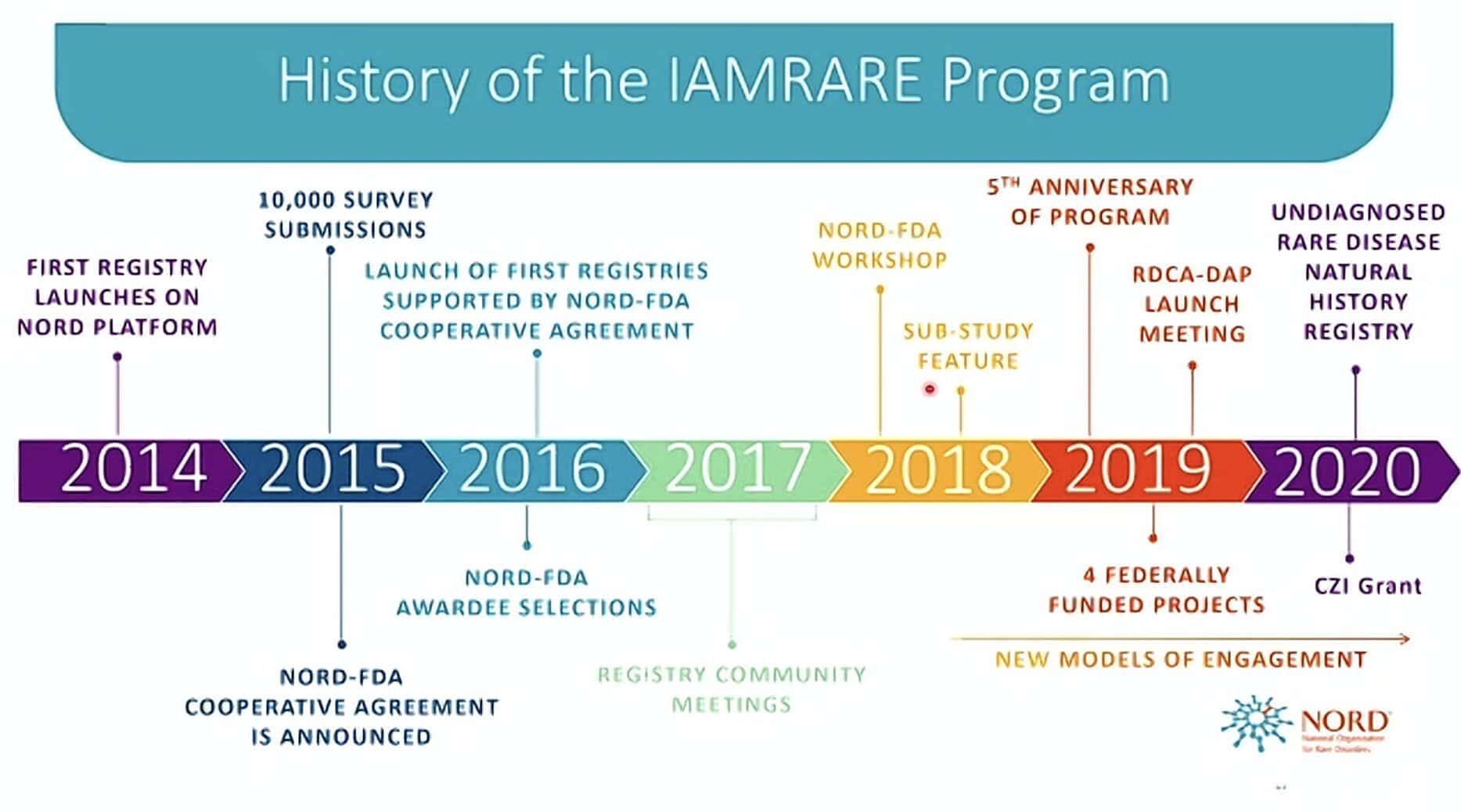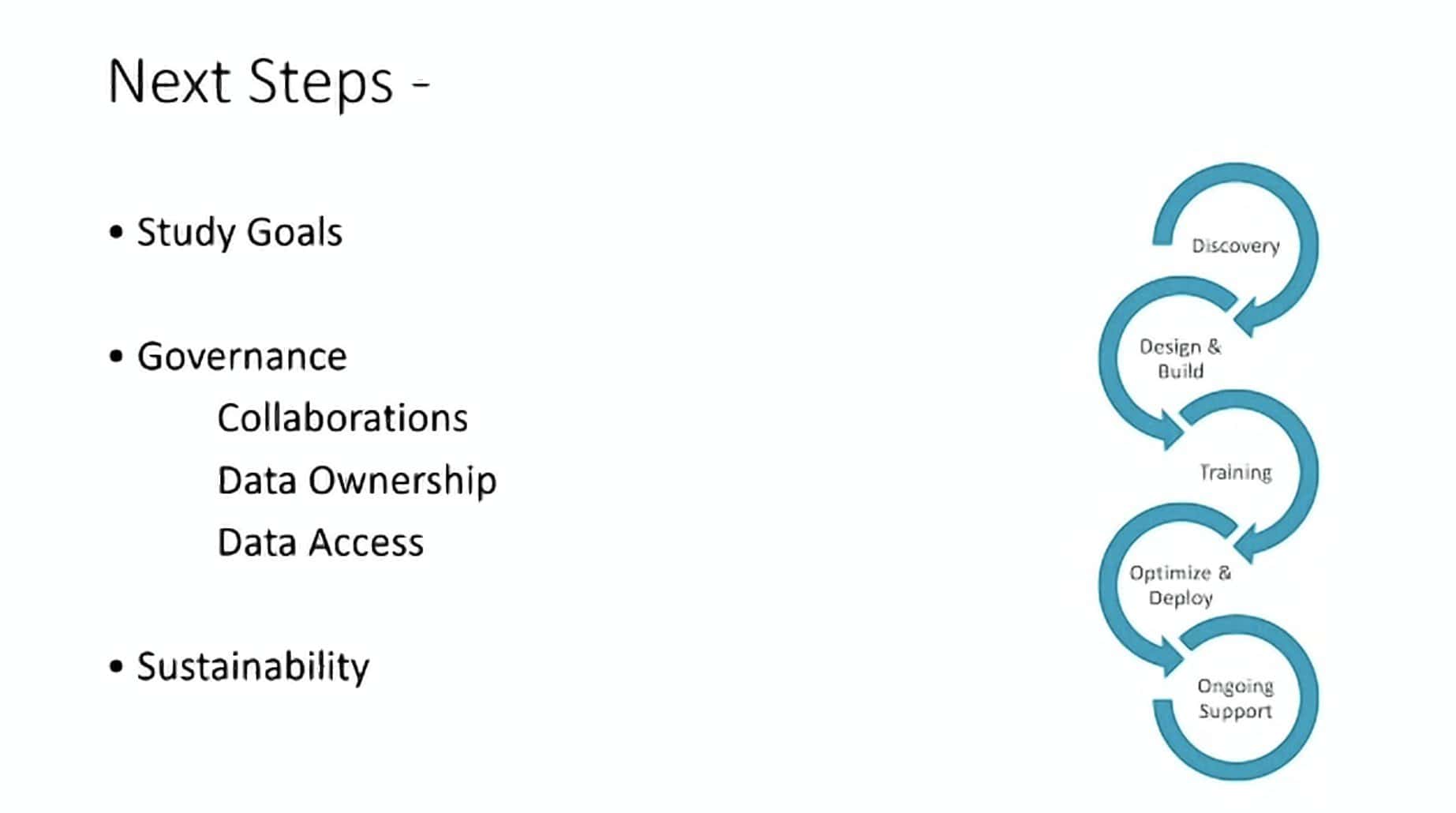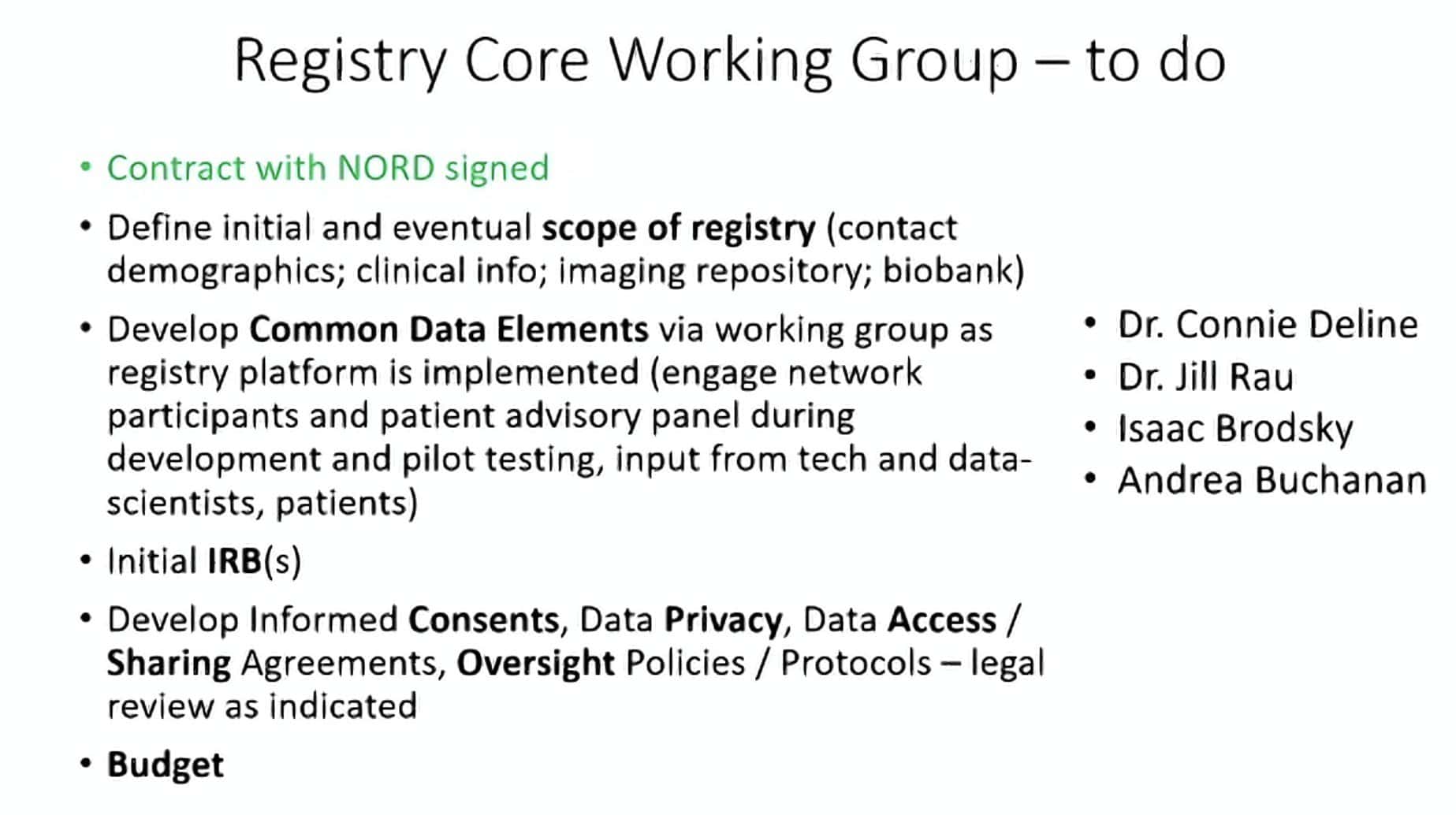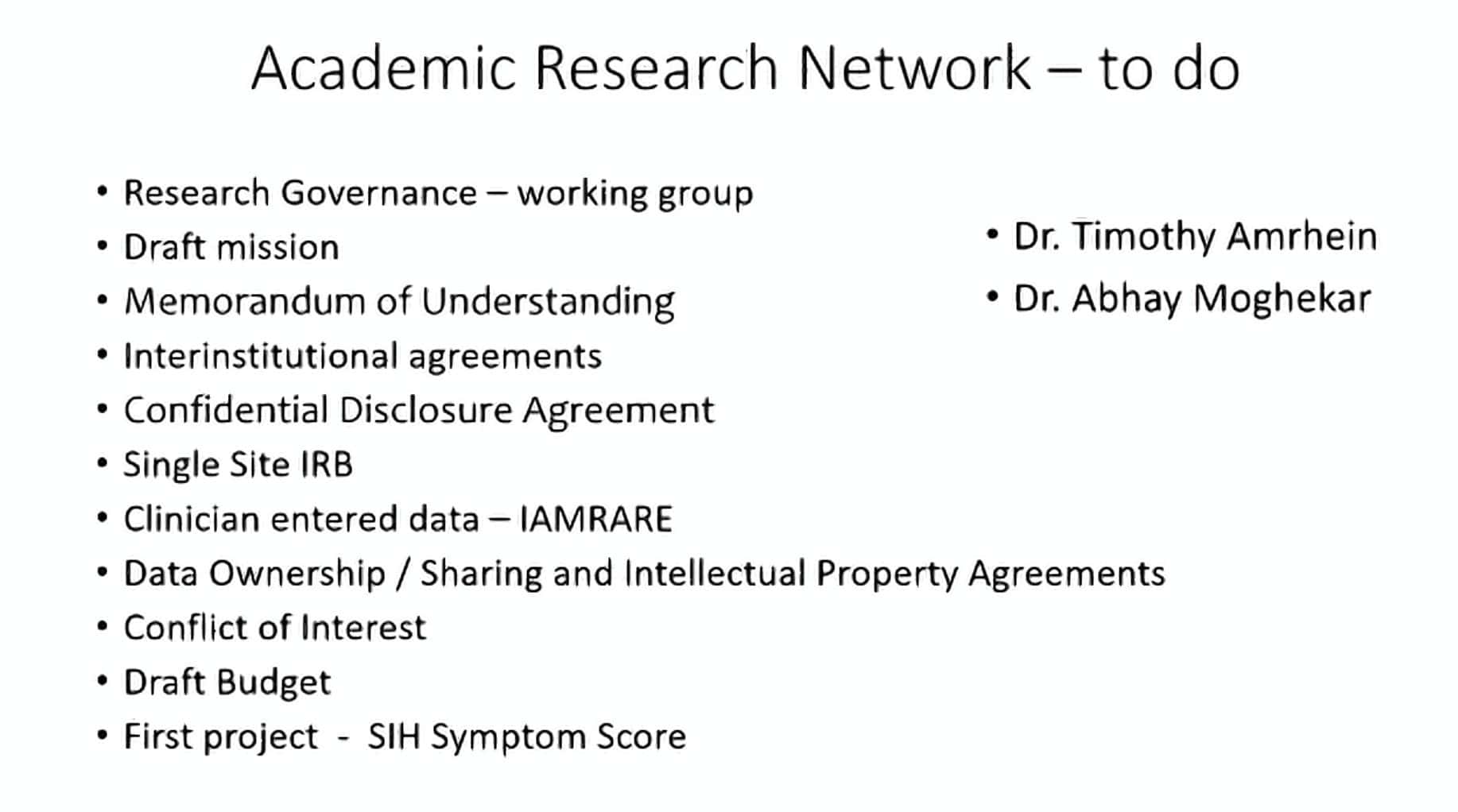2023 Intracranial Hypotension Conference
The 2023 Intracranial Hypotension Conference, which took place July 8th and 9th in Kohala Coast, Hawaii, featured a wonderful two days of information-packed presentations from physicians and researchers across the globe.
As a reminder, conference attendees will have access to all of the recorded presentations for the next several months. After that, we will share them on our website as part of our video library.
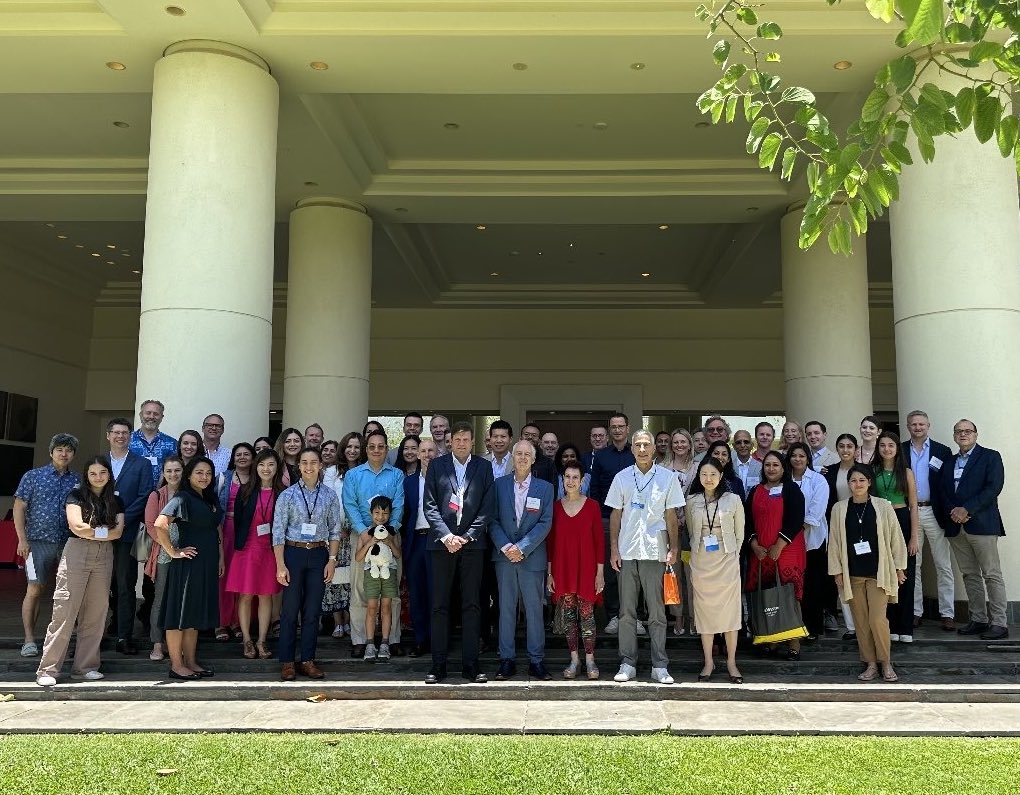
2023 Intracranial Hypotension Conference attendees
Conference Highlights
All of the presenters helped shed light on the challenges of spinal CSF leak, but here are some of the conference highlights:
Headache in MCAD: DDx or comorbidity?
Dr. Shijun Xi, of USC, presented an overview of mast cell activation disorder, including how it may manifest in leak patients and/or impact the integrity of the dura mater. See a selection of slides from her talk here:
Heritable Disorders of Connective Tissue and Spontaneous CSF Leaks
Researcher Cassie Parks, working out of Hal Dietz’s lab at Johns Hopkins, presented some promising genetics findings about a link between SIH and heritable connective tissue disorders, potentially via a Fbn2 mutation. Here is a selection of slides from her talk:
Iatrogenic leaks: PDPH, Needle Type Data, Can we reduce the incidence?
Dr. Ian Carroll spoke about the dangers of using cutting needles in dural puncture procedures such as lumbar punctures and labor epidurals. Here is a selection of slides from his talk:
Iatrogenic leaks: Imaging of Post-dural puncture headache
Dr. Andrew Callen also discussed post puncture dural leaks (PDPH) and imaging, including his recently published case study of a patient where iatrogenic cause was 12 years prior to symptom onset. [See our interview with him about this case here.] Here are a selection of his slides:
Percutaneous approaches to spinal CSF leaks
Dr. Malinzak’s detailed presentation about epidural blood patching included a treatment chart that he uses in his practice. See a selection of his slides here:
Surgical approaches for sacral Tarlov cysts
Dr. Rudolf Schrot presented a talk on the surgical management of Tarlov cysts. Typically found in the sacrum, these cysts can impact the nervous system and cause a wide variety of symptoms including sacral pain, sciatica, and bladder and bowel issues. They can also be a source of spinal CSF leak.
Rebound Intracranial Hypertension:
There were several talks on rebound intracranial hypertension. In Dr. Peter Kranz’s talk on the diagnosis and natural history of RIH, he noted that rebound intracranial hypertension was first recognized by Mayo’s Dr. Bahram Mokri, and that the condition can happen following epidural blood patching, regardless of leak type. Here is a selection of his slides:
Dr. Deborah Friedman’s talk about RIH noted some underlying and contributing causes, including transverse sinus or jugular anatomy. She also shared her medical management strategy. Some selected slides:
Research updates
QUALITY OF LIFE IN PATIENTS WITH CONFIRMED AND SUSPECTED SPINAL CSF LEAKS
Dr. Friedman shared some preliminary reporting on her Foundation-funded quality of life study about leak patients—both those with a confirmed diagnosis and those in whom a leak is suspected. She found that misdiagnosis is common (75% of patients), that the financial impact is significant, and that people with spinal CSF leak experience high rates of depression and anxiety.
She noted that 64.2% of participants expressed some degree of suicidal ideation, higher than migraine or cluster headache patients. There were no significant differences between participants wth confirmed vs. suspected intracranial hypotension. Overall, spinal CSF leak patients had general quality of life scores lower than for patients with MS or IIH.
The next steps for her study are to analyze by diagnosis and symptom value, and report on other variables that they surveyed. Here are some selected slides from her talk:
LONG-TERM OUTCOMES OF EBP IN PATIENTS WHO FAIL TO MEET ICHD-3 DIAGNOSTIC CRITERIA
Dr. Ian Carroll reported on some of his recent research, which looked at long-term outcomes of patients treated with epidural blood patching—even when they did not meet the ICHD-3 criteria for diagnosis of a spinal CSF leak. He noted: “73% of clinically meaningful responders would never have received the treatment that helped if patching had been contingent on positive imaging or low opening pressure.” Here are some selected slides from his talk:
QUALITY OF LIFE AFTER SURGICAL TREATMENT OF SIH
Dr. Jürgen Beck presented his own quality of life study regarding outcomes after surgical treatment and makes the point that spinal CSF leak “is not just a headache”: it affects all aspects of life, at the level of diseases like end-stage lung cancer. Here are some selected slides from his talk:
SPINAL CSF LEAK FOUNDATION PATIENT REGISTRY AND COLLABORATIVE RESEARCH NETWORK
And finally, Foundation medical advisory board chair Dr. Abhay Moghekar shared news about the Spinal CSF Leak Foundation’s in-progress collaborative research network & patient registry.
Thank you!
Thanks to all who participated in this year’s conference, and we look forward to next year’s event!

